

Yacht vs Catamaran: Which Boat is Right for You?
- On October 23, 2023
- No Comments
When it comes to leisure boating, two of the most popular options are yachts and catamarans. But what exactly is the difference, and which one is better suited for your needs?
In this comprehensive guide, I’ll compare the key characteristics between monohull yachts and twin-hulled catamarans.
Visual Comparison of Catamaran and Yacht Designs
How they differ in handling and performance, onboard living spaces and amenities, ownership and operating costs, which boat is right for you, defining catamarans and yachts.
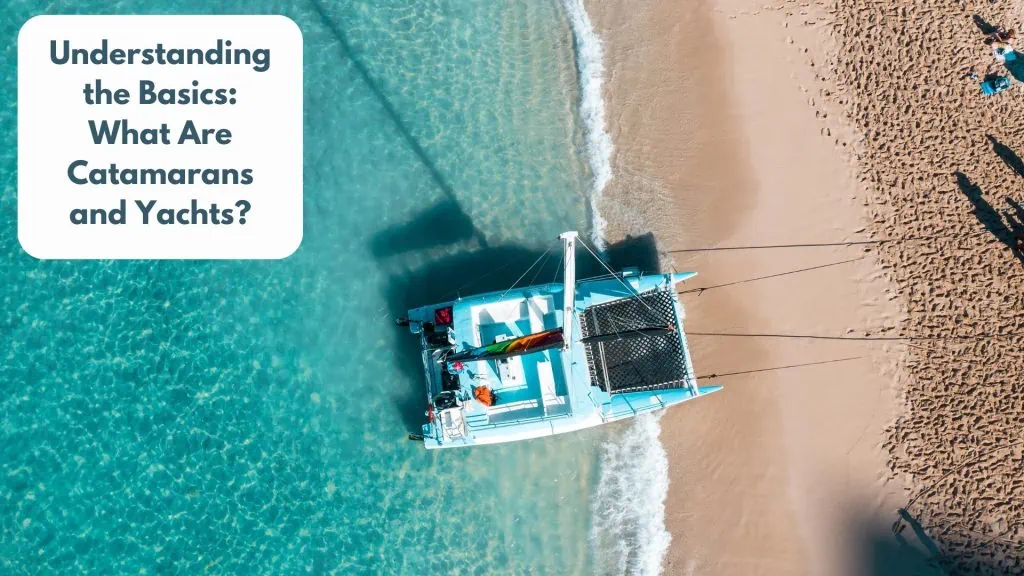
A catamaran is a type of multihull boat featuring two parallel hulls connected by a central deck. This twin-hull design provides more stability, expansive interior space, and shallow draft.
Yachts, on the other hand, have a single continuous hull and are known for their elegant aesthetics, lavish amenities, and versatility for long-range cruising.
Here’s a quick visual comparison of the general shapes and hull configurations:
| Category | Catamaran | Yacht |
|---|---|---|
| Hulls | Two parallel hulls connected by deck | Single continuous hull |
| Shape | Wider, more beamy | Sleeker, narrower |
| Stability | Very stable with minimal rolling | More susceptible to rolling motion |
| Draft | Shallow draft to get closer to shore | Deeper draft requiring deeper waters |
| Living Space | Very spacious, open floor plans | More confined spaces |
Catamarans typically range anywhere from 40 to 70 feet in length, while yachts can be as small as 30 feet or over 100 feet for superyacht models.
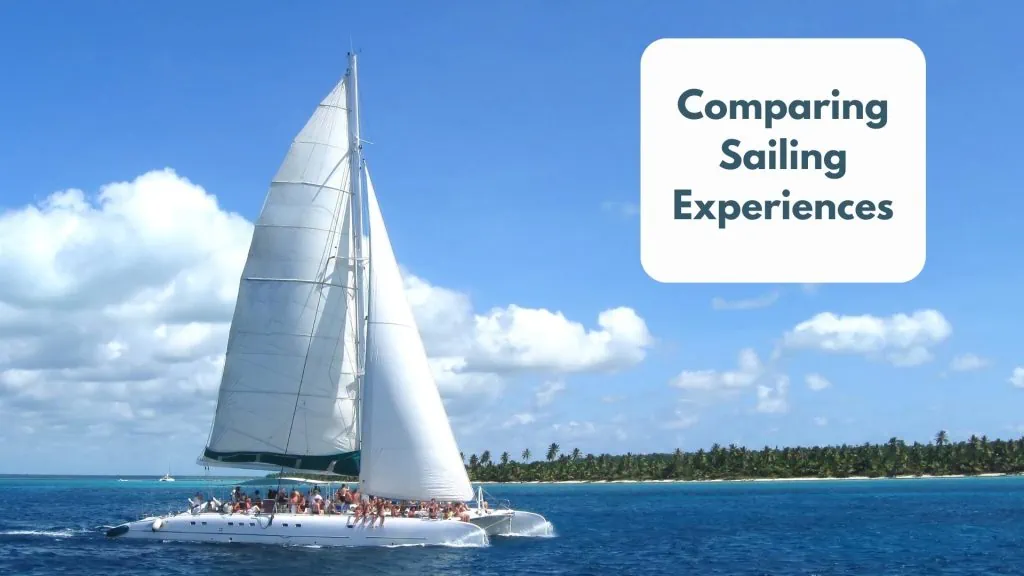
When it comes to maneuverability and sailing dynamics, there are some key distinctions between catamarans and yachts:
- Speed – Catamarans are lighter and have reduced drag, making them significantly faster than yachts. Top speeds can reach up to 25 knots.
- Stability – With their twin hulls, catamarans offer unmatched stability and minimal rocking motion in rougher seas. This also reduces seasickness.
- Maneuverability – Yachts take more skill to maneuver tight spaces, while catamarans can turn 360 degrees within their own length.
- Windward Performance – Yachts point higher into the wind and sail more efficiently upwind. Catamarans excel on reaches and downwind sailing.
So for performance-oriented sailing, monohull yachts have some advantages. But catamarans trade maneuverability for supreme stability and comfort on the water.
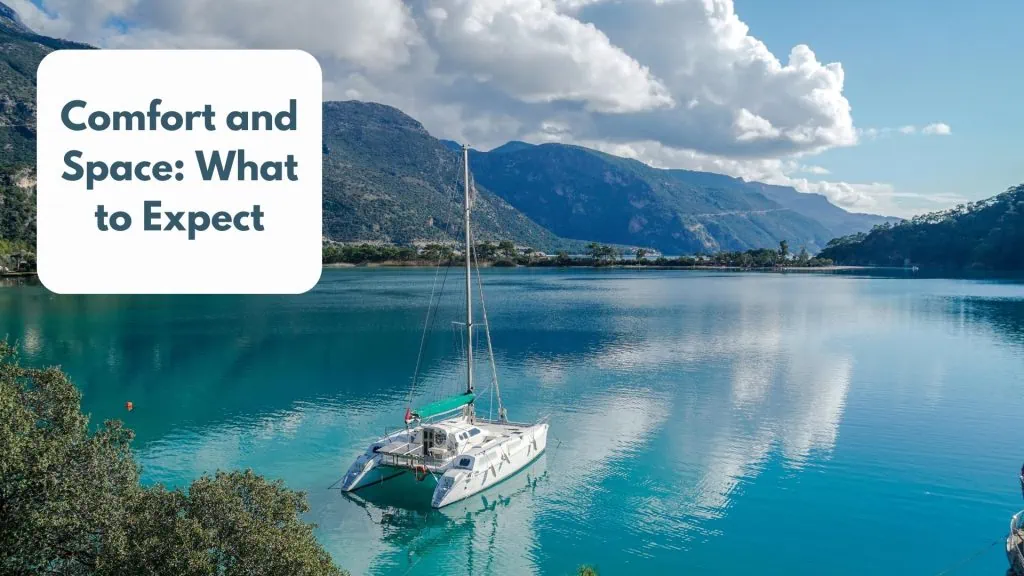
One major differentiation between these two boat types is the onboard living spaces and amenities. Some key comparisons:
- Deck Space – With their spacious bridge deck, catamarans offer ample lounging and relaxation space for large groups. Yachts have more confined deck space.
- Cabins – Catamaran cabins are typically larger and more comfortable. But yachts allow for more privacy when chartering with other couples or guests.
- Entertainment – Yachts focus more on lavish entertainment amenities like high-end sound systems, theaters, and bars. Catamarans offer more outdoor fun.
- Overall Comfort – For stability, living accommodations, and seasickness reduction, catamarans are vastly more comfortable boats.
So catamarans excel when it comes to providing generous living areas for group getaways and family vacations. But yachts are tailored more for couples charters and luxury amenities.
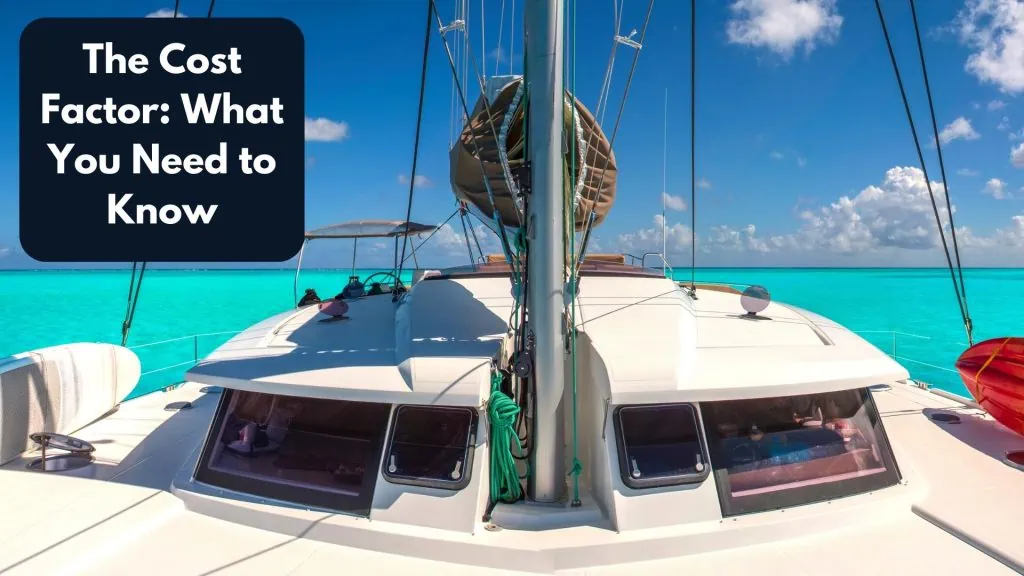
A significant factor to weigh is the overall ownership costs between catamarans and yachts:
- Purchase Price – Due to larger size and dual engines, catamarans come at a higher initial purchase cost. Yachts are more affordable for comparable lengths.
- Fuel Efficiency – With two engines to power, catamarans use almost twice as much fuel to operate. Yachts are more efficient.
- Docking and Marina Fees – Catamarans incur higher fees because they take up more dock space, especially in high-traffic areas.
- Maintenance – More complex systems and dual engines onboard catamarans equate to higher lifetime maintenance costs.
- Resale Value – Depreciation varies widely, but yachts tend to retain resale value better in the pre-owned market.
Clearly, the costs of owning and operating a catamaran are substantially higher compared to a similar-sized yacht. Being aware of these expenses will help determine the right boat for your budget.
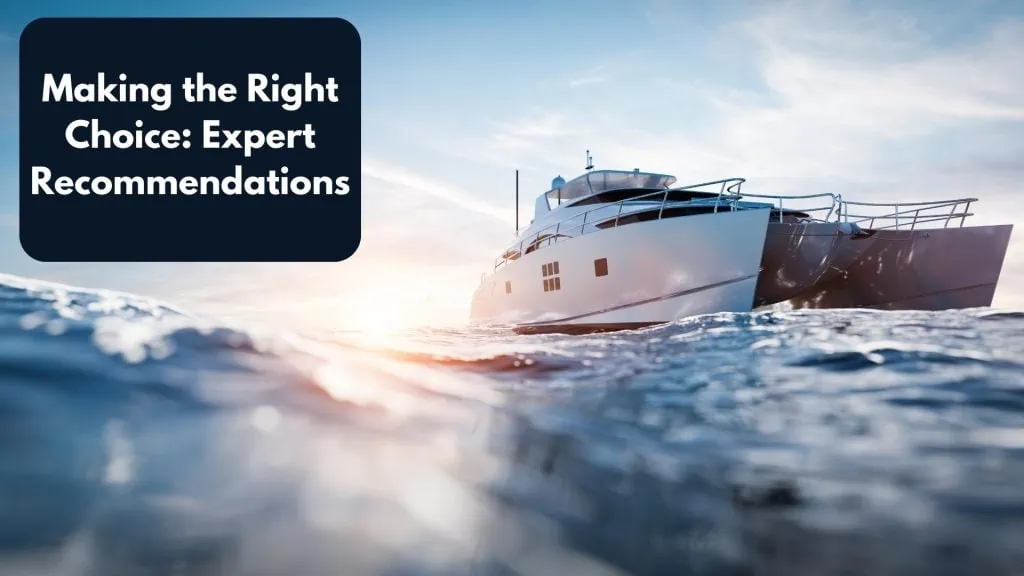
We’ve covered a lot of comparisons, so which boat type is the best choice? Here are some quick recommendations based on needs:
- For comfort, stability, and spaciousness on extended cruising trips – Catamaran
- For performance-focused sailing and nimble maneuverability – Yacht
- For luxurious amenities and entertaining small groups – Yacht
- For exhilarating speed and family-friendly features – Catamaran
- For affordable purchase and lower operating costs – Yacht
Of course, it depends on your individual priorities and boating style. Charter both for a test run to see which you enjoy more. At the end of the day, the right boat is the one that fulfills your needs and invites you to experience the magic of the open water.
Hopefully this guide has provided a helpful overview of the core differences between catamarans and yachts. Let the voyage begin!
- https://catamaranguru.com/catamaran-vs-monohull-we-changed-should-you/
- https://blog.cancunsailing.com/en/diferencia-entre-yate-y-catamaran
- https://www.mbcyachts.com/types-of-yachts-and-their-pros-and-cons/
- https://makaiyachts.com/power-catamaran-vs-monohull/
You might also be interested in reading:

The Top 3 Boat History Report Websites Reviewed
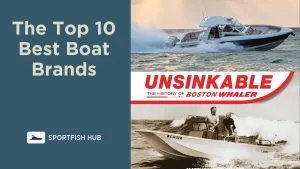
The Top 10 Best Boat Brands
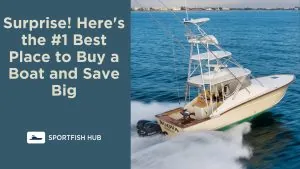
Best Place to Buy a Boat
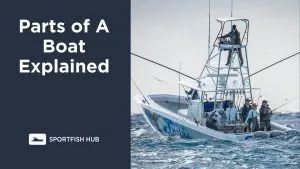
Parts of A Boat Explained
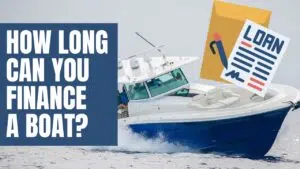
How Long Can You Finance A Boat

Steve Momot
Steve is an accomplished professional photographer and marketer who specializes in the Fishing, Yacht, and Boating industry. With a strong presence as an influencer and marketing expert in the Marine Industry, he has made a significant impact in the field. Additionally, Steve is the original creator and co-founder of Sportfishtrader. Prior to his career as a marine photographer, he gained extensive experience as a licensed boat and car dealer in South Florida.
Leave a Reply Cancel reply
Your email address will not be published. Required fields are marked *
You might also like.

Who Makes The Biggest Sport Fishing Boat?

Fishing Memes

What is Sportfishing?

Sportfish Hub was founded with a clear and unwavering mission in mind: To provide boaters and fishermen with the highest quality content, offering invaluable insights, tips, and resources.
- Terms of Service
- Privacy Policy
SOCial Media
Get in touch, © 2023 | all rights reserved.
Catamaran Vs Yacht
Learn the difference between a catamaran vs yacht charter, what yacht should you charter catamaran vs monohull, what is better to charter a catamaran vs yacht.
Those new to yacht charter and catamaran charter will often ask, what is Better to charter – a Catamaran or Yacht? To assess the catamaran vs yacht question, we need to understand the main differences. A catamaran is, strictly speaking, a yacht with two hulls and a yacht in this context and a sailing vessel with one hull, otherwise known as a monohull.
It’s easily arguable that a sailing yacht was more fun to sail, takes up less room when mooring, and is cheaper per berth than a catamaran. Alternatively, a more stable catamaran offers more space and is cheaper per sq. foot of space.
Until recently, the advent of catamarans in the America’s Cup competitions would show that catamarans are not the slowcoaches they were when you consider the c atamaran vs yacht debate. All catamarans are very nice to sail just off the wind, which will leave some saying that my characterisation is a little skewed. Yet, I would say, in general, for charter catamarans vs charter yachts, the comparison holds.
Your Answer Will Depend on Many Different Variables Such as:
- Advantages of Catamaran Vs Yacht
- Disadvantages of Catamaran Vs Yacht
- Getting Into The Detail
- Thoughts on a Monohull Charter
- How to Book
Here are our 5 Reasons to Hire a Catamaran Vs Yacht
The Pros of a Catamaran Vs Yacht
The 5 reasons to hire a catamaran versus a yacht.
- Space. When weighing the Catamaran Vs Yacht debate, space is one of the key factors by far, but you’ll also see this appoear in our list of disadvantages too. In terms of squarefootage, if you like to pack generaously, or have planty of space for sunbathing, then Catamarans vs Yacht is for you.
- Cabins. Along the same theme, Cabins are generally much more spacious than monohulls. The locker storage space is always much greater than that of a monohull. The greatest advantage is the considerably larger ports (windows), which, when sailing in August, not only gives you a great view but comes in super handy to let in the breeze.
- Stability. Catamarans are notoriously more stable than that their counterpart. This can be beneficial for new or inexperienced sailors who haven’t got their sea legs yet or are prone to seasickness. Due to their two hull design, cats do not heel over more than 5 degrees. This means you don’t have to check that plates are not sliding off the table continuously!
- Draft. Catamaran’s shallow draft (depth of the hull and keel under the water) has some advantages. This is a particular advantage in areas with shallow waters, thus allowing you to anchor closer to shore.
- Power. Catamarans have twin engines. This, combined with the shallow draft, allows the yacht to cruise at higher speeds, whether under sail or using its engines. The two engines also allow greater manoeuvrability in confined areas or spaces, great in marinas or when picking up mooring buoys.
The Cons of Catamaran Vs Yacht
Four things you might want to consider with a catamaran vs yacht.
- Mooring . Due to the width (and size) of a catamaran, often, you have to pay a lot more to book a berth in a harbour for the night. However, some authors can be quoted as saying that anchoring in a cat is easier.
- Upwind Sailing. Catamarans don’t sail up-wind well! Performance cats make up for this with boat speed and by employing daggerboards to prevent leeway (sideways movement). It will be fun trying to sail upwind, but you might not make much progress!
- Steering. Sailors have noted that the helm (be it the tiller or a wheel) is not as responsive as a monohull, you don’t get the same feedback (weather helm) on a cat, and it can feel ‘limp’ to sail.
- The Feel. Most charter cats are built for comfort, so the sailing can be a little disappointing unless you’re on a beam reach.
The Pros of a Yacht vs Catamaran
Getting into the detaila - monohull vs catamaran advantages.
Monohulls offer the ultimate sailing experience for many sailors. Here’s why:
- Dynamic. When considering a monohull vs catamaran, remember monohulls can tack quickly, thus making them a lot more manoeuvrable than a cat. Nothing beats the rhythmic feeling of sailing whilst heeling over.
- Responsive. They are also fairly responsive to the helm.
- Up-Wind. These vessels are much more capable up-wind than most catamarans. They can sail much closer angle to the wind than a cat.
- Budget. Monohulls are cheaper to buy (fewer materials) than catamarans, often aimed at the luxury market and significantly less to charter. Berth for berth, cabin for cabin, a monohull is usually better value for money.
- Berthing costs. With twin engines, expect to put a little more fuel in your cat. The cost of berthing in a harbour or at a marina tends to be significantly lower due to the reduced beam (width).
The Last Case for a Monohull!
There are good reasons to consider a catamaran vs yacht, but if you love being up close and personal with your crew and you love dynamic sailing, here’s the big advantages.
- Snug. Modern charter monohulls are wide with high ceilings and have plenty of space in cabins and for stowage. That said, the usable space on a monohull is much less than that of a catamaran.
- Heeling. The boat heeling or “leaning” over is perfectly normal and something you get used to quickly. This can be tricky for the young and old and makes handling the boat a little more adventurous.
- Draft. Due to the deeper keel (the stabilising fin below the yacht), you cannot sail in shallow waters and must be more vigilant of your depth.
Learn More About Chartering a Catamaran Vs Monohull
As you can see, there are many pros and cons to consider when deciding between a catamaran vs yacht. Whilst the debate between monohull sailors and multi-hull fanatics will rage, it largely depends on what you are using the boat for, where, your budget, and your crew.
If you have the opportunity to decide if you prefer a catamaran vs monohull, by sailing both types of boats, then take it so you can assess the benefits of both wonderful sailing boats.
If you are planning a sailing trip and are a little unsure, why not get in touch, and we can help you decide what is best for your location and crew.
Amazing Sailing Experiences
Our amazing customers.
I didn't think sailing with my family would be so much fun...
Sailing for the first time.

Everything went smooth, the paper processing, special requests and the specs of tht check-in procedure. Boat was also in good shape, so no complaints and a worry free holiday...
We had a great experience with booking through sailchecker.
Informative and looked for the best value for our family. Very good customer service on this side and in Greece. Great boat and skipper...
Fantastic holiday from start to finish.
They were very responsive and very quick to answer questions via email and instant chat. They had extensive knowledge of the area...
We will most definitely use their services for our next bareboat sailing vacation.

Sailchecker were professional from start to finish - and were awesome dealing with a problem! Our first Yacht had serious issues and sail checker helped us to resolve it...
They are easy to deal with, straightforward and honest and I would recommend them to anyone planning a charter holiday.

During the Coronavirus pandemic, Kate and her colleagues at Sailchecker have performed brilliantly. They have been considerate and highly efficient in re-organising our Turkey charter and also provided lots of assistance in getting our Yacht Security Deposit insurance policy transferred to match our revised charter dates.
Truly worthy of a 5 star rating!

Would I go sailing again? OMG yes! Sailing is the perfect family holiday. Boys loved the activities, I enjoy relaxing as well...
Sailchecker.com arranged a sailing cruise her family of 2 sons, daughter & hubby in the BVI with their own.

It was sail in the day… party at night. We couldn't have wanted a better skipper or a Spring Break! Good times...
Arranged for 6 friends to sail Spring Break in the British Virgin Islands for under $500 each.

All bookings and confirmations was always accurate with no delays. Our boat was also fabulously maintained and the Skipper new the area extremely well...
Everything was down to the tee.

Rated 4.9 out of 5 based on 215 reviews on Trustpilot
Got a Burning Question About Catamaran Vs Yacht?
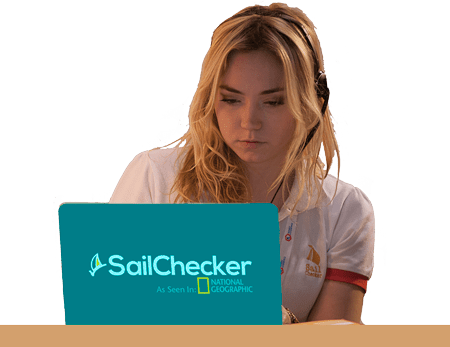
Founder Member IFCYA
Yacht Charter & Sailing.

Start typing and press Enter to search


What Is The Difference Between A Yacht And A Catamaran?
- Post Written By: Boater Jer
- Published: July 14, 2022
- Updated: July 22, 2022

Disclaimer: You might notice that we recommend products in some articles. We may earn a commission for referring you if you click the link and buy a product.
We only recommend products we’ve tried/tested/own (that’s why you won’t find thousands of affiliate links on my site). If you have experience with one of the products we’ve mentioned, please share your experiences in the comments at the end.
What’s the difference between a yacht and a catamaran? Let’s dive in and find out!
Yachts are classically assumed to be medium-sized sailing ships. Today we assume a yacht is a large, luxurious, monohull vessel. Alternatively, catamarans are designated by having two hulls. Catamarans can also be large and luxurious, classifying them as a yacht. Therefore a catamaran can also be a yacht, but a yacht may not necessarily be a catamaran.
This article is just what you need if you’re new to the sailing scene and can’t seem to decide which of the vessels mentioned above to hit the open ocean.
Although technically a catamaran may be a yacht, in popular culture, a yacht is assumed as a monohull. Below is a detailed breakdown of the difference between a yacht and a catamaran. ( source )
Differences Between A Yacht And A Catamaran
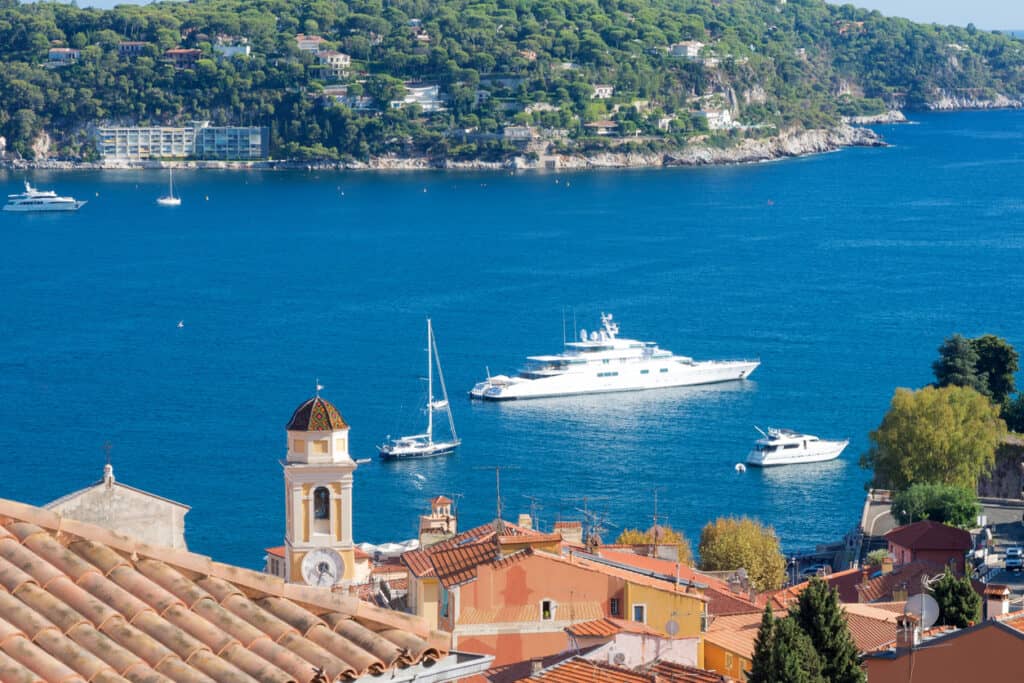
Number Of Hulls
The hull of a sailing vessel is simply the part of the vessel that sits in the water. Yachts have one hull, while catamarans have two hulls.
A sailing vessel with multiple hulls can explore more ocean depths than one with a single hull. It is because very little of the boat is underwater.
Due to this distinctive feature, yachts heel over more than catamarans, making them unsuitable for new sailors, children, or older people.
With that said, let’s look at the difference between a yacht and a catamaran regarding maneuverability.
Level Of Stability, Safety, Efficiency, And Displacement
The primary distinction, as noted, is that a catamaran has two hulls compared to a monohull yacht. These two hulls allow excellent stability for the watercraft with a much lower chance of capsizing and half the chance of sinking compared to a single hull.
Although, a sailing catamaran can always blow over in the incorrect use of sails in windy conditions, just like a sailing monohull can. The difference is that a catamaran is much more challenging to right itself if it goes over. Therefore, it’s best to understand all the principles of sailing before taking out a sailing vessel, regardless of whether or not it’s a catamaran or a monohull.
Unlike yachts, catamarans generally have a minimum of two engines. These motors enhance the level of maneuverability of the vessel.
In other words, catamarans are easier to pilot or maneuver than yachts of the same length.
Furthermore, the presence of a second engine on a catamaran makes it noticeably more potent than a yacht. And they are faster boats, too, because they don’t need to sit as deep in the water due to two hulls sharing the overall weight of the vessel.
A monohull carries all the weight on a single hull, causing the hull to sink deeper into the water. Given that water has greater friction than air, a hull deeper in the water will have greater resistance. Therefore, by nature of design, the more hulls, the faster a craft can go and the less power it consumes to go at a similar speed as a monohull, meaning it is also more efficient.
Size Of Space
You can quickly tell the difference between a yacht and a catamaran by size or space. Yachts are not as roomy or sizeable as catamarans of the same length.
You get bigger cabins, sitting areas, ample bathrooms, and wide galleys with catamarans.
The downside to the size or spaciousness of a catamaran is that it’d cost you a lot more to book an overnight berth.
When choosing between a yacht and a catamaran, consider the number of people you’d like to bring on board.
Sailing Experience
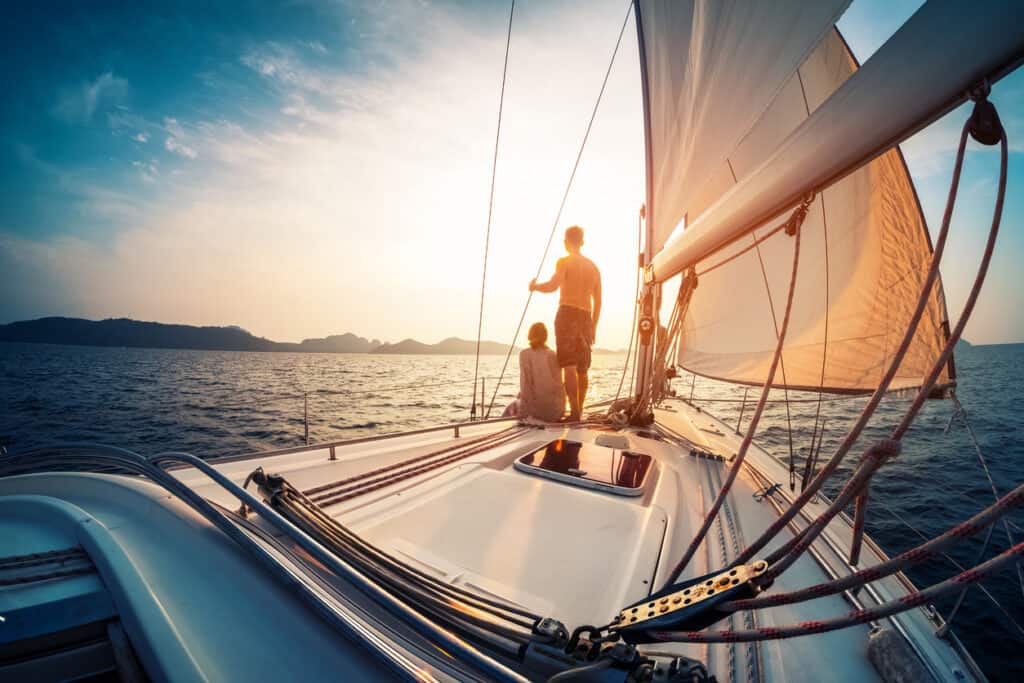
Yachts and catamarans do not provide the same sailing experience. Many people believe that yachts are more exhilarating to pilot than catamarans.
It is pretty simple; catamarans don’t give as much feedback as yachts do when you manipulate their helm.
Additionally, the design of catamarans makes it nearly impossible to sail them upwind. So, a yacht is your best bet if you’re looking to enjoy a thrilling upwind sail.
As you may know, the cost is a critical criterion in identifying the difference between a yacht and a catamaran.
The amount you pay to own or charter one of these vessels depends on the size and type of vessel you choose.
Generally, catamarans are more expensive than yachts of the same length, which is not surprising given that two hulls and a bridge will be more work to build than a single hull.
- Latest Articles
- Articles Sources
- Crab Island by Pontoon: A Fun Watery Boating Guide Destination in 2024
- Upgrade Your Boating Experience: Adding a Third Pontoon Made Easy!
- How Long Does It Take A Canoe To Go… (Canoe Calculator Here)
- In-Depth Review of the Pelican Sentinel 100X Fishing Kayak: Pros, Cons, and Performance
- How To Put A Kayak In The Water – The Ultimate Guide For New Kayakers
Catamaran vs. yacht: How to find the right vessel for your travels https://www.traveldailynews.com/post/catamaran-vs-yacht-how-to-find-the-right-vessel-for-your-travels
perfectrolex.sr
Share this post with your friends, subscribe to our newsletter.
Join us in our love for all things water. And Adventure.

The Amazing Rise Of Catamaran Sailboats (3 Points You Didn’t Expect)
Let’s talk catamaran sailboats. Many people ask me about them, and I’ve even had some ask what a catamaran is. So I wrote this article to dispel some of the myths and get all of us on the same page regarding what is one of my favorite boat designs, the catamaran sailboat. Rather than having
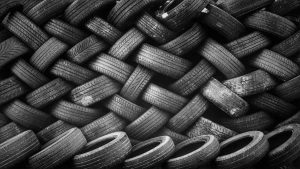
Boat Trailer Tire Guide
A boat trailer tire is something that is neglected by most everyday people. In other words, a tire is an underrated part. However, the main question arises that is a tire underrated, or is it just a myth? This section deals with the factors and facts that are related to the boat trailer tire. It’s

Boat Repair- The Truth About Eisenglass Vs. Vinyl
If you’re a boat owner, you must have come across eisenglass vs. vinyl. Yes, they’re world-famous materials used to make clear glass windows. Since they’re thin strips and durable, they don’t take up much space in the boat. However, when repairing the vessel, you might want to reconsider whether to install eisenglass or vinyl. Wondering
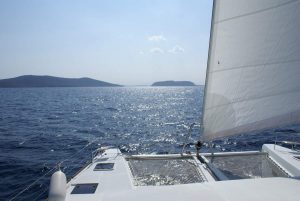
Staying Safe On A Catamaran: 24 Essential Tips
When you’re heading out on the water, having a good time is usually the first goal. I mean, let’s be realistic, most people who plan on going out on a boat are thinking first of the fun time, and second about safety. And if you’re intending to go out on a catamaran, depending on what type and size of the cat, there’s going to be some different circumstances that you’ll want to pay attention to for your own safety and the safety of those you have with you on board.

Does Marine Grade Plywood Warp and Rot? Is it Waterproof Plywood?
Updated April 27, 2021. Working on a boat build is a great and time-consuming endeavor. The last thing a boat builder wants is to use materials that will not be conducive to a wet environment. Moreover, one is likely asking the question, “Does marine grade plywood warp and rot?”. Although marine plywood avoids warping and

Comparison Between Trawler Vs Catamaran Boats
Looking for answers about trawler vs catamaran boats? You’re in the right place. Trawlers and catamarans are ideal sailing vessels for various use in terms of commercial transport, fisheries, sea patrols, research, and more. The distinct feature between the two boats is the hull composition. Trawlers consist of a single hull or monohull, while catamarans

Boat Information By Type
© 2023 Boating.Guide, A Hyperwave Media Group Ltd. Publication.
Privacy Overview
Yacht vs Catamaran: Which is Better for Sailing and Luxury?
- by yachtman
- September 10, 2024 September 10, 2024
When it comes to boating, the choice between a yacht and a sailing catamaran can significantly impact your sailing experience and luxurious retreats.
Each vessel offers unique features and benefits that cater to different preferences and lifestyles, including options like power yachts and cruising catamarans. This article explores the intricacies of both yachts and sailing catamarans, diving into their types, advantages, and disadvantages.
It also examines their suitability for sailing, luxury, environmental impact, and safety considerations. This information will help you make an informed choice for your next sailing vacation on the water!
Key Takeaways:
- Yachts offer a traditional sailing experience.
- Catamarans can be more cost-effective over time.
- Safety considerations vary for each type of vessel.
What is a Yacht?
A yacht is a recreational vessel designed for leisure activities such as cruising and racing . They can be broadly classified into two primary categories: sailing yachts , which are propelled by sails, and power yachts , which are driven by engines.
Yachts vary significantly in size and design, accommodating a wide range of preferences for comfortable sailing trips . Options include compact monohull yachts and spacious multihull catamarans .
Reputable yacht charter services, such as The Moorings , offer opportunities for exceptional sailing vacations in scenic destinations like the Caribbean and Mediterranean .
What are the Different Types of Yachts?
- Sailing Yachts: Utilize wind power for propulsion and offer a traditional sailing experience.
- Power Yachts: Depend on engines for propulsion, providing speed and convenience.
Monohull yachts are single-hulled vessels renowned for their traditional sailing capabilities. In contrast, catamarans provide enhanced stability and spaciousness, making them increasingly favored for cruising and luxury sailing.
Sailing yachts allow individuals to experience serene outings as they glide over the water, propelled solely by the wind. On the other hand, power yachts are designed for those who prioritize speed and convenience , equipped with advanced navigation systems and luxurious amenities for swift getaways.
Monohulls are particularly esteemed among traditionalists for their performance in various sea conditions, imparting a sense of authenticity to the sailing experience, especially in regions like Croatia and the Caribbean. Conversely, catamarans offer smoother rides, appealing to families and groups that seek comfort, with their expansive deck space and enhanced stability making each journey memorable.
What is a Catamaran?
A catamaran is a multi-hulled vessel characterized by two parallel hulls . This design presents a distinct alternative to traditional monohull yachts . These vessels are available in both sailing and power variants , offering versatile options for various sailing experiences.
The design of catamarans offers several advantages, including enhanced stability , spacious living areas , and shallower drafts . These features are particularly beneficial during cruising in shallower waters , such as those encountered in the Caribbean and Mediterranean regions .
What are the Advantages of a Catamaran?
- Built-in stability for smooth sailing.
- Spacious design for comfort.
- Great for family vacations and group charters.
Catamarans present numerous advantages that make them highly desirable for sailing experiences, particularly in cruising situations, such as during a sailing holiday in Antigua or the Bahamas. One of the most significant benefits is their built-in stability, which facilitates smoother sailing, even in turbulent waters, minimizing the risk of seasickness for passengers.
The spacious design of catamarans offers ample living space and comfort, making them particularly suitable for family sailing vacations or group charters in picturesque destinations such as the Caribbean and Mediterranean.
The wide beam of these vessels enhances their remarkable stability, enabling sailors to navigate a variety of weather conditions with assurance. This stability boosts safety and makes every gathering on deck exciting!
Cruising catamarans are typically equipped with multiple cabins and well-appointed kitchens, providing travelers with opportunities to engage in a range of activities while on board. Features such as expansive cockpit areas and streamlined docking capabilities underscore why many individuals opt for catamarans when seeking a relaxing and fulfilling adventure on the water.
What are the Disadvantages of a Catamaran?
- Higher purchase or charter costs.
- Specialized handling techniques needed in tight spaces.
- Ongoing maintenance costs can be high.
While catamarans offer numerous advantages for sailors, they also present certain disadvantages that prospective buyers and charterers should consider. One significant drawback is that cruising catamarans tend to be more expensive to purchase or charter compared to monohull yachts, which may discourage some sailing enthusiasts.
Their wider beam can affect maneuverability in tight spaces, necessitating specialized sailing techniques and knowledge for optimal handling, especially during peak sailing seasons in popular destinations.
The higher initial investment is not the only consideration; ongoing maintenance and operational costs can also be considerable. Sailors must recognize that navigating through congested areas or strong currents may pose unique challenges for these vessels, especially for those new to sailing who might not yet have mastered effective sailing techniques.
Individuals new to sailing might need to adapt to techniques such as effective wind direction strategies and an understanding of current impacts. Mastering these techniques enhances maneuverability and bolsters overall sailing confidence, allowing sailors to fully enjoy their experience during a sailing holiday despite the inherent limitations of catamarans.
Which is Better for Sailing?
Determining whether a sailing catamaran or a monohull yacht is more suitable for sailing largely depends on the preferences of the sailor, the desired sailing experiences, and the intended use of the vessel.
Sailing catamarans are distinguished by their stability and spaciousness, which makes them particularly well-suited for leisurely cruising and family vacations. In contrast, monohull yachts are frequently preferred for their performance and adherence to traditional sailing techniques.
Choosing between a catamaran and a monohull can change your entire sailing adventure! The decision between these two types of vessels can significantly impact the overall sailing experience and enjoyment.
Ready to set sail on your dream adventure? Explore our catamaran options now!
What are the Key Differences between a Yacht and a Catamaran for Sailing?
The primary differences between a yacht and a catamaran for sailing are evident in their design, performance characteristics, and overall sailing experience. Yachts, especially in the monohull configuration (which means a single hull design), typically employ traditional sailing techniques and feature a narrower profile. This can be advantageous when navigating rough waters.
In contrast, catamarans—whether sailing or powered, including power catamarans—offer enhanced stability and more spacious living accommodations. This results in a more comfortable experience, particularly during extended sailing excursions.
The hull design of a catamaran plays a significant role in its ability to manage waves and currents, making it more adaptable to varying conditions. This is one of the key advantages of catamarans. The dual-hull configuration allows catamarans to glide smoothly over the water, minimizing the pitching that often occurs with a yacht.
While yachts may necessitate a higher level of skill to maneuver due to their single hull design , catamarans provide a more leisurely sailing experience and greater freedom to explore. This aspect attracts people looking for a fun and relaxing sailing trip, making catamarans a fantastic choice for unforgettable vacations in sought-after destinations like the Caribbean and Mediterranean.
Which is Better for Luxury?
In the realm of luxury sailing , both yachts and catamarans present distinct features and amenities that significantly enhance the overall experience for travelers.
Luxury Yachts Offer:
- Opulent interiors
- High-end amenities
- Personalized services
Luxury sailing aboard a yacht typically includes these features, catering to those who desire an indulgent sailing vacation.
Luxury Catamarans Offer:
- Spacious layouts
- Multiple cabins
- Outdoor living areas
Luxury catamarans also provide these features, making them particularly suitable for family or group charters where comfort and relaxation are paramount.
What are the Features of a Yacht that Make it Luxurious?
Luxury yachts are distinguished by a range of features that enhance the sailing experience , making them a preferred choice for affluent travelers . These luxurious attributes typically encompass state-of-the-art amenities , spacious living quarters , gourmet kitchens , and exceptional service staff dedicated to addressing guests’ every need.
Yacht charter companies frequently offer customizable itineraries , enabling travelers to explore exquisite destinations such as the Caribbean and Mediterranean with unmatched elegance.
These vessels often feature opulent outdoor spaces , including sun decks, Jacuzzis, and infinity pools. These spaces are ideal for basking in the sun and taking in breathtaking ocean views.
Many luxury yachts are outfitted with advanced entertainment systems and a variety of water recreational equipment , such as jet skis and snorkeling gear. This ensures a continuous array of activities on the water.
With a highly trained crew that includes private chefs and personal concierges, every detail is meticulously managed. This provides guests with an unparalleled level of comfort and relaxation that elevates a standard trip into a truly extraordinary adventure.
Ready to set sail on a luxury adventure? Discover your perfect yacht or catamaran today!
What are the Features of a Catamaran that Make it Luxurious?
Luxury catamarans boast a range of features. These features significantly enhance the sailing experience and offer exceptional comfort and elegance on the water.
Their spacious configurations include multiple cabins, expansive living areas, and generous outdoor spaces. This makes them ideal for leisurely sailing vacations with family or friends.
Many luxury catamarans come equipped with modern amenities, gourmet kitchens, and state-of-the-art navigation systems. These features enable seamless cruising to exquisite destinations such as the British Virgin Islands and the Bahamas.
The layout of these vessels is carefully designed to promote social interaction while maintaining privacy. Guests can unwind in tranquil environments, with high ceilings and panoramic windows contributing to an airy ambiance and stunning views of the horizon.
Additional features include hot tubs, sun loungers, and outdoor grilling options. These elevate luxury catamarans to a level that transforms trips into unforgettable experiences tailored for relaxation and enjoyment, appealing to both seasoned sailors and newcomers alike.
Which is More Cost-Effective for Luxury Travel?
In the context of cost-effectiveness for luxury travel, both yachts and catamarans present specific factors that can significantly influence overall expenses during a sailing vacation. Generally, the charter rates for luxury yachts are comparatively higher, particularly for well-appointed vessels offering premium services and amenities.
Conversely, while luxury catamarans may occasionally be more affordable to charter, their larger size and capacity can lead to increased operating costs when accommodating larger groups. Thus, it is essential to assess one’s specific needs and preferences.
The amenities and experiences provided on a yacht often justify the higher cost. These vessels are equipped with exclusive features such as personal chefs, onboard spas, and tailored excursions.
In contrast, catamarans, noted for their stability and spacious decks, can offer excellent value for families or groups seeking a more sociable atmosphere during their sailing vacation.
Therefore, prospective travelers should carefully consider the advantages of each option in relation to their planned itinerary and total group size. This ensures they achieve a balance between luxury and cost-effectiveness throughout their journey.
What are the Different Uses for Yachts and Catamarans?
Yachts and catamarans serve diverse purposes and are suitable for a wide array of activities. These range from leisurely sailing experiences to high-performance racing.
Both types of vessels can be chartered for vacations, offering opportunities for relaxation and exploration in breathtaking destinations such as the Caribbean and Mediterranean.
Furthermore, catamarans are particularly well-suited for family outings due to their inherent stability and spacious design. Traditional yachts may be more aligned with performance-driven sailing endeavors.
What are the Popular Destinations for Yacht and Catamaran Sailing?
Popular destinations for yacht and catamaran sailing are characterized by their stunning landscapes , pristine waters , and vibrant cultures . Regions such as the Caribbean and the Mediterranean are widely recognized for their favorable sailing conditions. The British Virgin Islands (BVI) , the Bahamas, and coastal cities like Athens are particularly favored by sailing enthusiasts.
These destinations promise unforgettable sailing vacations filled with adventure!
The idyllic beaches of Anegada in the British Virgin Islands attract visitors with clear turquoise waters. Exceptional snorkeling opportunities allow sailors to explore vibrant marine life .
The Bahamas, featuring sparkling blue lagoons and numerous uninhabited islands, presents a serene escape for those seeking both adventure and relaxation. Meanwhile, Athens offers a rich historical backdrop, inviting sailors to anchor near ancient ruins before experiencing the lively nightlife of its coastal towns.
Each of these locations showcases remarkable natural beauty and accommodates diverse sailing preferences, ensuring memorable experiences for every sailor.
What are the Maintenance and Operating Costs for Yachts and Catamarans?
It is essential for potential owners and charterers to understand the maintenance and operating costs associated with yachts and catamarans, as these expenses can significantly influence the overall sailing experience.
Maintenance costs can vary based on the type and size of the vessel. Luxury yachts generally incur higher expenses due to their advanced technology and numerous amenities .
While catamarans may sometimes have lower maintenance costs, their running costs can accumulate, particularly when hosting larger groups during sailing vacations.
Which is More Environmentally Friendly?
When evaluating environmental impacts, the decision between yachts and catamarans can differ based on various factors, including design , fuel efficiency , and onboard practices .
Catamarans are often viewed as more environmentally friendly due to their stability and ability to sail efficiently in lighter winds, which requires less engine power. A growing number of yacht manufacturers now implement eco-friendly practices and technologies , making both options viable depending on the sailing choices made by owners or charterers.
What are the Safety Considerations for Yachts and Catamarans?
Safety is crucial for every sailing experience, whether on a yacht or a catamaran. A thorough understanding of these factors can significantly enhance overall enjoyment and peace of mind during a sailing vacation.
Both yachts and catamarans require specific safety equipment and protocols, such as:
- Life jackets
- Navigation systems
- Communication devices
Furthermore, awareness of environmental conditions , the practice of safe sailing techniques , and adherence to local regulations are essential components for a successful and secure sailing journey.
Leave a Reply Cancel reply
Your email address will not be published. Required fields are marked *
Save my name, email, and website in this browser for the next time I comment.
Catamarans: A Complete Guide to Multihull Boats
Catamarans have been a part of sailing history for centuries and continue to be popular for their stability, spaciousness, and performance. Developed by various cultures around the world, the principles of catamaran design have evolved over time to become optimized for both pleasure cruising and racing. This complete guide will help you understand the essentials of catamarans, their unique characteristics, and how to choose the right one for your needs.

From the basic concepts of multihull design, performance, and handling, we will explore the advantages and benefits of a catamaran in terms of safety and comfort on board.
Along the way, we will discuss maintenance considerations, distinctive catamaran brands and models, and how a catamaran lifestyle can compare to more traditional sailing options .
Finally, we will provide learning resources and frequently asked questions tailored to both seasoned sailors and newcomers to the world of catamarans.
Key Takeaways
- Catamarans are known for their stability, spaciousness, and performance
- This guide covers aspects like design, handling, safety, and choosing the right catamaran
- Resources and frequently asked questions provide additional insights for potential catamaran owners
Understanding Catamarans
Design Characteristics
Catamarans are known for their unique design, which features two parallel hulls connected by a deck. This design provides several advantages over traditional monohull boats, such as stability and speed.
With their wide beam, catamarans have a reduced risk of capsizing and can access shallow waters due to their shallow drafts 1 .
One of the notable aspects of a catamaran is its twin hulls, which offer increased living space and comfort compared to a monohull. Additionally, catamarans are often favored by recreational and competitive sailors for their excellent maneuverability 2 .
The materials used for constructing catamarans range from wood to fiberglass, and even aluminum for high-performance vessels. Aluminum catamarans are known for their strength, lightweight structure, and resistance to corrosion 3 .
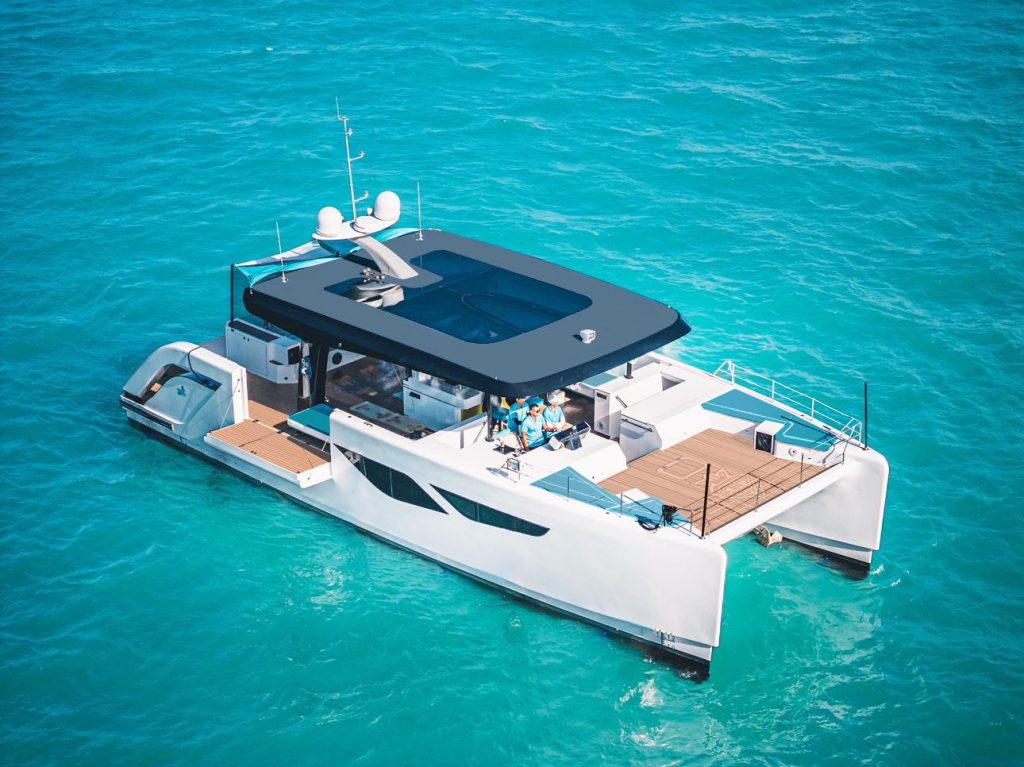
Hulls and Construction
The hulls in a catamaran are crucial to its stability and performance. These hulls help distribute the weight evenly across the water surface, minimizing drag and allowing for smoother sailing.
In general, the hulls can be categorized into two types:
- Symmetrical Hulls : The hull shape is similar on both sides, which enhances balance and stability in various sailing conditions.
- Asymmetrical Hulls : One side of the hull is designed differently than the other, which can be advantageous when sailing upwind.
The construction materials used in building catamaran hulls also play a vital role in the boat's performance and durability. Common materials include:
- Fiberglass : A popular choice due to its lightweight, strength, and ease of maintenance.
- Wood : Traditional material that offers a classic look, but requires more maintenance than fiberglass or aluminum.
- Aluminum : Lightweight and strong, aluminum is an excellent choice for high-performance catamarans 4 .
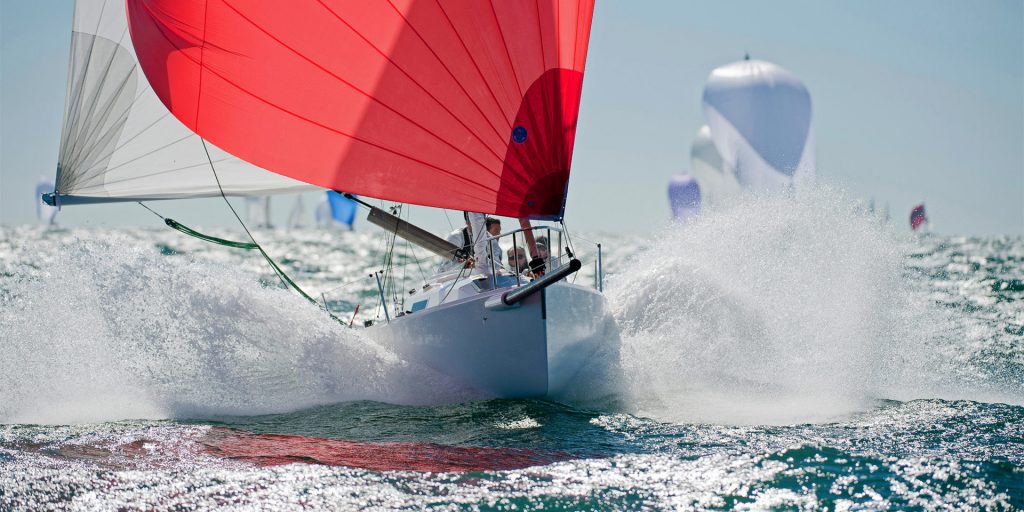
Multihulls vs Monohulls
There's often a debate between the benefits of multihull boats, such as catamarans or trimarans, and monohull boats. Here are some key differences between the two:
- Stability : Due to their wide beam and reduced heeling, catamarans offer improved stability compared to monohulls. This makes them an attractive option for those who want to avoid seasickness or feel more comfortable on the water 5 .
- Speed : Multihull boats are known for their speed, which results from their ability to minimize drag and maintain a level sail.
- Living Space : Catamarans and other multihulls generally have more living space, as both the hulls and the connecting deck can be utilized for accommodation and storage.
- Maneuverability : While monohulls are known for their agility and ability to point close to the wind, catamarans can still offer exceptional maneuverability when properly sailed 6 .
Performance and Handling
Speed and Efficiency
Power catamarans have gained popularity for offering a unique combination of speed, efficiency, and stability. Their dual-hull design allows for less water resistance, which directly translates to higher speeds and better fuel efficiency compared to traditional monohull boats.
In addition, the wide beam provided by the two hulls ensures a stable ride even at higher speeds. This makes power catamarans ideal for cruising, fishing, and watersports ( Boating Beast ).
Sailing Dynamics
When it comes to sailing catamarans , the performance is affected by factors such as keel, rudders, mast, and sails.
Their wide beam and dual-hull design provide inherent stability and reduced heeling effect, making them less likely to capsize compared to monohulls.
I should also note that catamarans have a shallow draft, which gives them the ability to access shallow waters that may be off-limits to other boats ( Navigating the Waters ).
In my experience, the lighter weight of a catamaran and its aerodynamic design can contribute to remarkable sailing performance under different wind conditions.
The larger sail area relative to hull weight allows them to harness more wind power, further enhancing their speed and agility on the water.
Maneuvering and Docking
Maneuvering and docking a power catamaran involves understanding its unique handling characteristics.
The presence of two engines in separate hulls allows for more precise control in confined spaces such as marinas.
The maneuverability of these boats is typically improved by the use of dual rudders that are located close to each powered hull for efficient steering ( BoatUS ).
When docking under power, I find it helpful to carefully assess the wind and current conditions beforehand.
This is because catamarans can be more sensitive to windage due to their larger surface area above the waterline.
By understanding how these forces may affect the boat, I can make adjustments to my approach and successfully dock the catamaran without any incidents.
Safety and Comfort on Board
Safety Features
Safety is a top priority when sailing any type of vessel, including catamarans. A well-built catamaran offers several features aimed at ensuring the safety of those onboard.
First, catamarans have inherent stability due to their wide beam and twin hull design . This makes them less prone to capsizing than monohull boats. This stability allows me to confidently navigate various water conditions .
In addition to stability, catamarans are designed with positive buoyancy, making them almost unsinkable . Of course, safety equipment such as lifejackets, flares, and first aid kits should always be onboard and well-maintained.
Furthermore, you should also stay updated on weather conditions, avoid sailing in high-risk areas, and learn your boat's safe sail limits.
Living Spaces and Comfort
When it comes to living spaces, I value comfort and practicality as essential features for my time on the water. Catamarans offer a unique advantage in this regard, as their dual hulls create spacious living areas.
Most catamarans are designed with separate cabins in each hull, allowing for privacy and comfort when sleeping. Additionally, these boats typically feature shallow drafts , which means I can access shallow waters and anchor close to shore.
The main living area, or salon, is situated on the bridge deck between the hulls. It usually includes a seating area, a dining table, and a galley (kitchen). Large windows provide ample natural light and panoramic views, making the space feel open and bright. Some catamarans even have the option for an additional living area on the upper deck where you can enjoy the sun and breeze.
One aspect of catamaran living I truly appreciate is the ample storage available. Each cabin typically has built-in storage spaces for clothes, gear, and personal items. There are also designated areas for equipment such as spare sails, tools, and water toys. This makes it easy for me to keep my belongings organized and make the most of my time on the water.
Maintaining a Catamaran
Routine Maintenance
In order to keep my catamaran in the best possible shape, I make sure to perform routine maintenance tasks. These tasks are essential to extend the life of the components and ensure smooth sailing:
- Cleaning : Regularly cleaning the deck, hulls, and sails prevents buildup of dirt, algae, and other debris that could affect performance.
- Inspection : Periodically inspecting my catamaran allows me to detect any potential issues before they become significant problems. I pay close attention to the rigging, sails, and lines on my boat.
- Lubrication : Keeping all moving parts lubricated is vital to prevent friction and wear on components such as winches and pulleys.
- Antifouling : Applying antifouling paint to the hulls of my catamaran helps prevent the growth of marine organisms that can damage the boat and reduce its speed. Make sure to do this at least once a year.
Dealing with Wear and Tear
Despite my best efforts to keep my catamaran well-maintained, wear and tear is inevitable. Here's how I deal with common issues that could arise from regular use:
- Repairs : When I notice signs of wear on sails, lines, or rigging components, I make it a priority to repair or replace them promptly. Neglecting these issues can lead to more significant problems and affect the boat's performance.
- Hull maintenance : If I find dents, scratches, or stiff rudders on my catamaran's hulls, I address them immediately. Repairing any damage not only ensures smooth sailing but also prevents further issues from developing.
- Sail care : Over time, my sails can become stretched, torn, or damaged due to exposure to sun, wind, and saltwater. Regularly inspecting them for signs of wear and making any necessary repairs or replacements helps maintain optimal performance.
- Rust and corrosion prevention : Since my catamaran is made of various metal components, I need to protect them from rust and corrosion. I routinely check for signs of corrosion and apply anti-corrosive treatments when needed.
Catamaran Brands and Models
High-Performance Models
In recent years, there has been a growing interest in high-performance catamarans. I have seen a variety of brands and models that have impressed me with their performance capabilities. One notable brand is Fountaine Pajot , which has a long history of producing a range of sailing catamarans and power catamarans. Some of their popular models include the Tanna 47 and the Bali 4.4 .
Another high-performance catamaran I've come across is the Leopard 40 . Known for their speed and exceptional handling in various conditions, the Leopard brand started with sailing catamarans and has since expanded to include power catamarans. Their models range from 40 to 53 feet long, offering both power and luxury for those looking for a thrilling experience on the water.
Cruising Catamarans
When it comes to cruising catamarans, the Lagoon brand is synonymous with luxury and comfort. With a range of sailing catamarans from 40 to 70 feet long, Lagoon offers spacious catamarans for extended bluewater cruising. Their 60- and 70-foot power catamarans are equally impressive, providing ample living space and smooth sailing experiences.
I've also found the Aquila 42 PC to be a remarkable cruising catamaran. With a focus on design and innovation, Aquila has produced catamarans perfect for exploring the open sea with friends and family. Their spacious, stable designs allow for a more enjoyable and serene journey, ensuring you arrive at your destination comfortably.
The Catamaran Lifestyle
Anchoring and Cruising
I find catamarans to be a fantastic choice for cruising and anchoring , which is a critical part of living the catamaran lifestyle . Catamarans have several advantages when it comes to anchoring and cruising, such as:
- Stability : Due to their wide beam and twin hulls, catamarans remain stable during anchoring, which reduces the risk of seasickness.
- Shallow draft : Thanks to their shallow draft , catamarans can anchor close to shore, enabling better access to protected coves and more beautiful beaches.
- Speed : Despite their large size for cruising vessels , catamarans are generally faster than monohulls. This is a result of their slim hulls and reduced water resistance.
When it comes to anchoring, catamarans can make use of their shallow draft to anchor in locations that other boats cannot. This allows for a greater range of cruising spots, which makes the overall experience much more enjoyable and unique.
Living on a Catamaran Full-time
For many catamaran enthusiasts, the dream of living full-time on a catamaran is entirely possible. While not without challenges, there are several factors that make living aboard a catamaran an enjoyable experience:
- Spacious living areas : Catamarans generally have more living area compared to monohulls, providing ample space for the whole crew.
- Privacy : The separate hulls allow for private cabins, ensuring that everyone on board has their space.
- Stability : As mentioned earlier, catamarans are stable vessels, making living on them more comfortable than monohulls.
Choosing Your Catamaran
Comparing Models and Features
When I start to look for the perfect catamaran, the first thing I focus on is comparing various models and features .
I determine the key factors that are essential for my needs, such as size, passenger comfort, and performance. By doing so, I can identify which catamaran models are most suitable for me.
For example, if I plan to sail with a large group, I would look for a catamaran that offers ample space both inside and out.
To help me with my comparisons, I usually create a table or list of the different models and their features:
| Model | Size | Comfort | Performance |
|---|---|---|---|
| A | 40ft | Spacious | High |
| B | 35ft | Average | Average |
| C | 45ft | Luxury | High |
This visual aid makes it easier for me to sort the options and prioritize my considerations, such as price, yacht type, and brand.
New vs. Second-Hand
Another critical aspect of choosing a catamaran is deciding between a new or second-hand boat.
Both options have their pros and cons, and ultimately it depends on my preferences and budget.
If I can afford a new catamaran, I get the advantage of the latest design , features, and technology. Plus, I typically receive better warranty coverage and support from the manufacturer.
However, new catamarans are more expensive and can have long wait times due to high demand.
On the other hand, purchasing a second-hand catamaran can save me a significant amount of money, and I might find a high-quality boat with low mileage or well-maintained by the previous owner.
However, this option carries more risks, as I need to be knowledgeable about potential maintenance issues and conduct a thorough inspection before purchase.
Learning Resources
Books and Manuals
When it comes to learning about catamarans, there are plenty of books and manuals available.
One of the highly recommended books is Multihull Voyaging by Thomas Firth Jones. This book provides a comprehensive understanding of multihulls, including catamarans, and is an essential guide for any beginner sailor.
Another great book to check out is Catamarans: The Complete Guide for Cruising Sailors by Gregor Tarjan.
With a foreword by Charles K. Chiodi, publisher of Multihulls Magazine, this book covers all aspects of cruising catamarans. It includes detailed information on design, construction, and maintenance, as well as tips and tricks for sailing a catamaran.
Here are a few more books that I find valuable:
- The Catamaran Book by Tim Bartlett, an excellent resource for both beginners and experienced sailors
- Catamaran Sailing: From Start to Finish by Phil Berman and Lenny Rudow, a comprehensive guide to both catamaran racing and cruising
Online Content and Photography
In addition to books, you can find plenty of online content and photography about catamarans.
Websites like Sailaway Blog and Boating Guide offer tips, techniques, and how-to articles for sailing catamarans.
Many of these sites also include stunning photography, showcasing these beautiful vessels in action.
For those who prefer Kindle or e-books, many of these resources are available in digital format.
This makes it easier for you to access them anytime, anywhere, allowing you to keep learning and improving your catamaran sailing skills.
To further enhance your knowledge, you can also join online forums and communities dedicated to catamarans.
These platforms provide invaluable advice and first-hand experiences shared by fellow sailors, as well as recommendations for additional learning resources.
Frequently Asked Questions
What factors should be considered when choosing a catamaran for full-time living?
When choosing a catamaran for full-time living, consider its space and layout , as it will become your home.
Look for a design with a comfortable living area , ample storage, and sufficient berths for the number of people living aboard.
Also, consider fuel efficiency , ease of maintenance, and the catamaran's cruising range .
Lastly, the overall cost of ownership , including insurance and mooring fees, should be considered.
How do catamarans perform in rough sea conditions?
In general, catamarans are known for their stability, which is primarily due to their wide beams. This makes them less prone to capsizing when compared to monohulls.
However, their performance in rough sea conditions will depend on the specific model and design of the catamaran. Some may perform better in certain conditions than others, so researching and selecting the right design is essential.
What are the key differences between sailing a catamaran and a monohull?
One of the main differences between catamarans and monohulls is stability.
Catamarans have a wider beam , which makes them more stable and minimizes the risk of capsizing.
They also have shallower drafts, which allow them to access more shallow waters compared to monohulls.
Additionally, catamarans often have larger living spaces, making them more comfortable and suitable for cruising and full-time living.
What are the advantages of catamarans for long-distance cruising?
Catamarans offer several advantages for long-distance cruising.
Their wide, stable design provides a comfortable ride and reduces the risk of seasickness.
They can also attain higher speeds due to their reduced drag and generally sail faster than monohulls on certain points of sail.
The shallow draft allows them to explore more coastal areas and anchor closer to shore. Lastly, their spacious interiors make them ideal for extended cruises and living aboard.
How does one assess the value of a used catamaran on the market?
Assessing the value of a used catamaran requires thorough research and inspection.
Start by comparing the age, model, and condition of the catamaran to similar listings on the market.
Take note of any upgrades or additions made to the boat, as these can affect the price.
It's essential to inspect the boat in person or hire a professional surveyor to ensure there are no hidden issues that could affect its value.
What essential features should be looked for in a catamaran intended for ocean voyages?
For ocean voyages, look for a catamaran with a strong, well-built hull designed to handle rough conditions.
Safety features such as liferafts, adequate flotation, and sturdy deck hardware are crucial.
A reliable engine and well-maintained rigging and sails are also essential.
In terms of living space, opt for a catamaran with a comfortable, spacious interior and ample storage.
Last but not least, good navigation and communication systems are necessary for long-distance ocean voyages.
Related Articles

Duck Boat Safety Tips and Best Practices
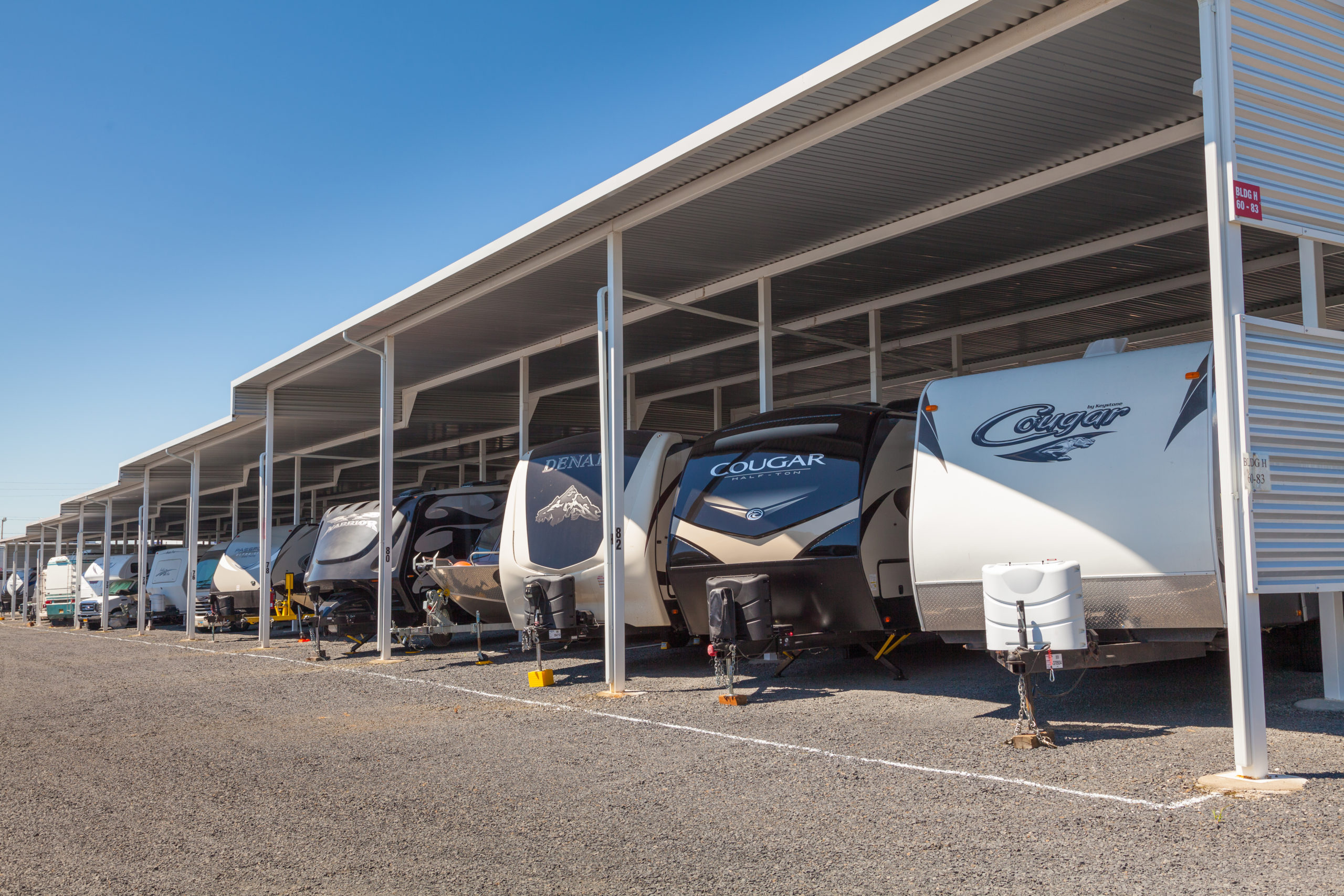
RV & Boat Storage Near Me: Top Facilities for Secure and Accessible Storage
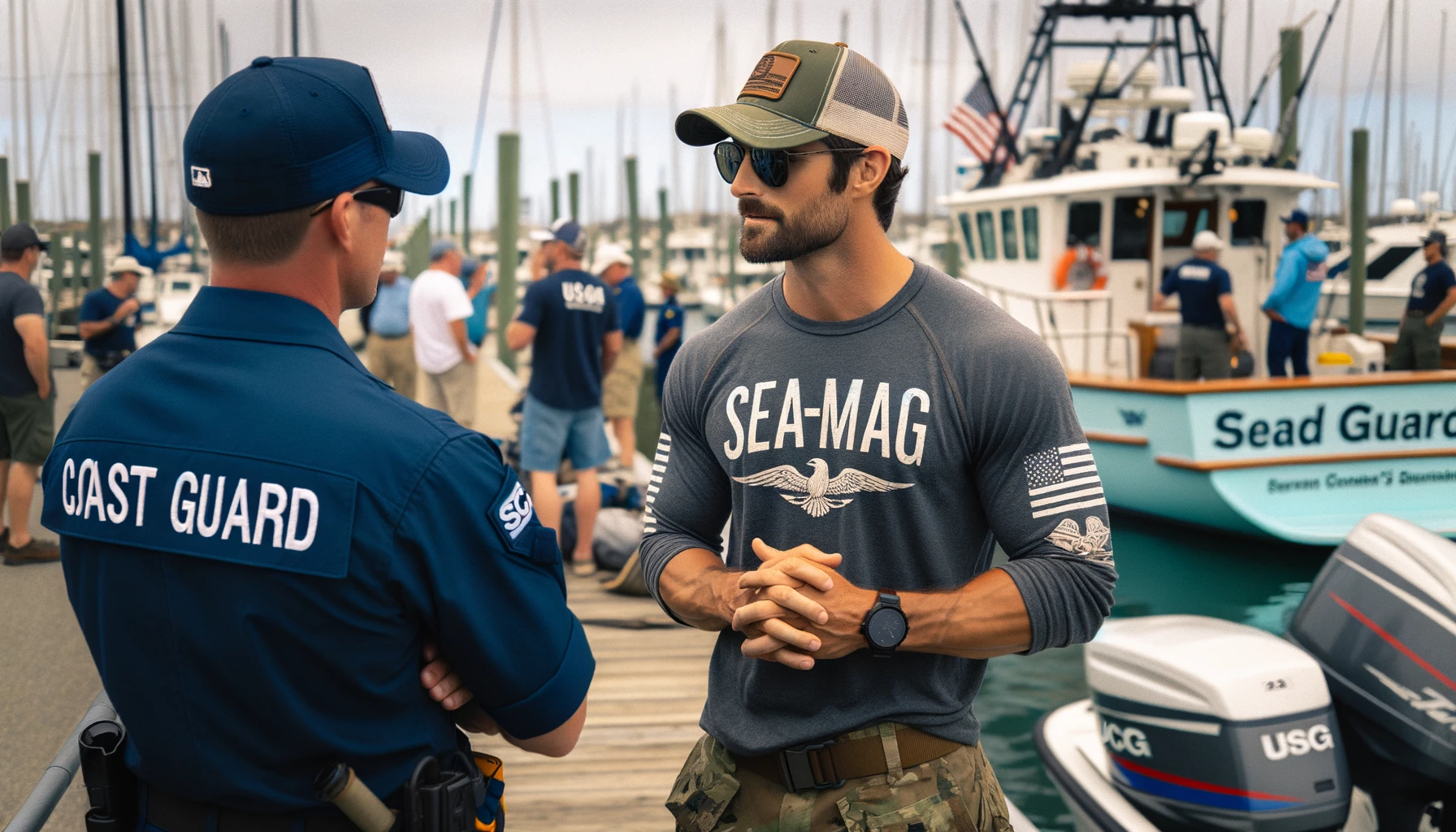
Boat Terms Explained: A Quick Guide for Beginners
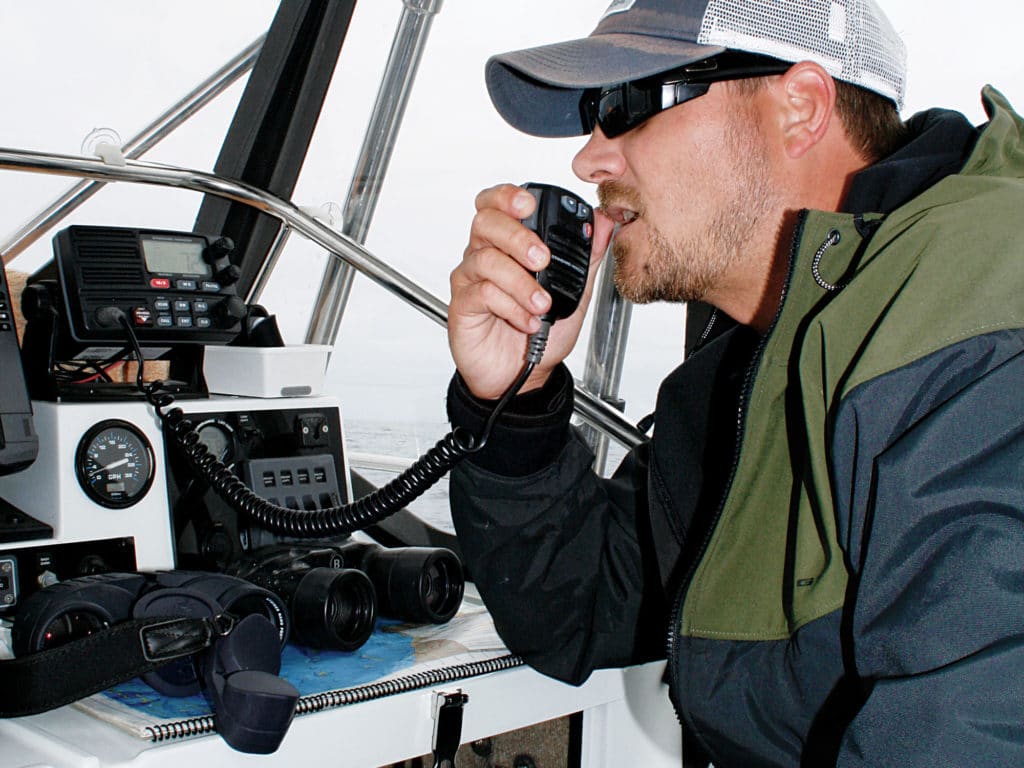
Alpha Bravo Charlie Alphabet: A Comprehensive Guide to Phonetic Codes

Pure Watercraft: Pioneering the Electric Boat Revolution

How Can Propeller Strike Accidents Be Avoided? Essential Safety Tips
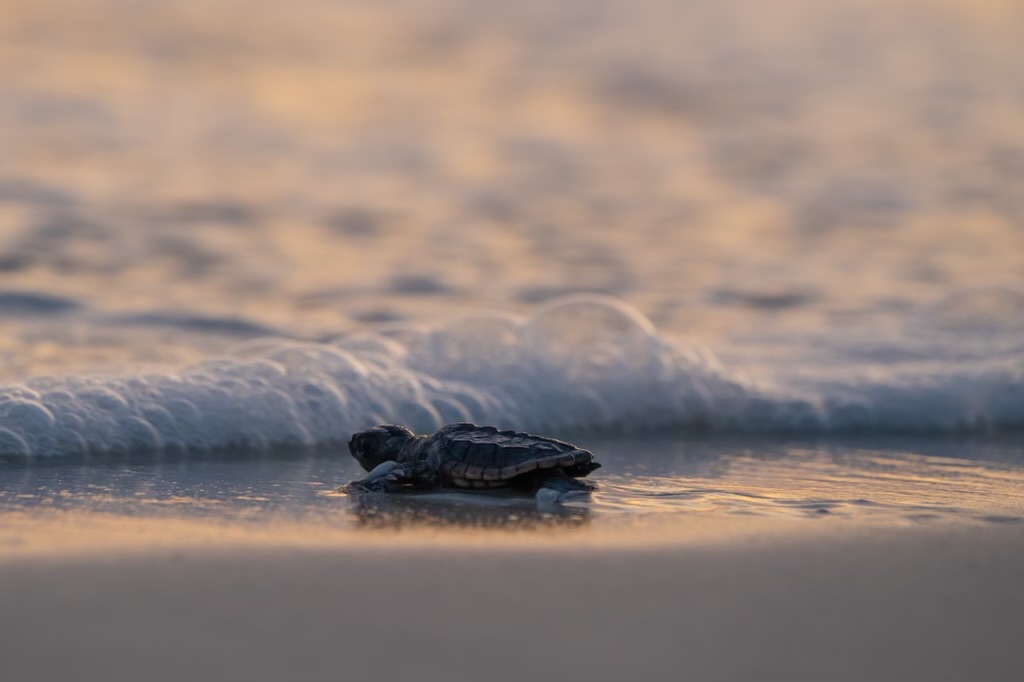
Florida Gulf Coast Beaches: Top Picks for a Perfect Vacation

Boat Dealers Near Me New York, NY: Find Your Perfect Watercraft
Is a catamaran safer than a yacht?
Sailing enthusiasts often find themselves at the crossroads when choosing between a catamaran and a traditional monohull yacht. While both have their unique set of advantages, the debate on safety is often the most heated. As we set sail on this topic, let’s dive deep into the foundational differences and see which one emerges as the safer option.
Understanding the Core Design
Before jumping into the safety debate, it’s essential to grasp the fundamental designs of both vessels.
Catamarans: The Dual-Hulled Beauty
A catamaran is a watercraft that features two parallel hulls of equal size. This design not only gives catamarans a broad beam but also ensures they sit more on the water surface, rather than in it. Catamarans, due to their design, tend to have more space onboard, often making them a top pick for luxury seekers who’re looking to charter in regions like Italy. With their increasing popularity, a wide range of catamarans are available for charter .

Is A Catamaran Safer Than A Yacht 1
Yachts (Monohulls): The Traditional Elegance
On the other hand, traditional yachts or monohulls have one hull, and they sit deeper in the water, allowing them to slice through waves more effectively. This characteristic often gives them the upper hand in speed, especially when beating upwind.
Stability on Water
One of the most significant points of contention is stability. So, how do both fare in choppy waters?
Catamarans: The Stability Champions
Due to their wide beam and dual-hulled design, catamarans are less prone to heeling (tilting) than their monohull counterparts. This stability ensures that onboard activities can continue even when the sea gets a bit rough, making it a preferred choice for those who’re new to sailing or are prone to seasickness.
Yachts: Keel-Dependent Stability
Yachts rely on their deep keel for stability. While they heel more than catamarans, they are designed to right themselves up after a capsize, a feature catamarans lack. However, it’s worth noting that a modern yacht’s chances of capsizing are minimal.
Safety During Manoeuvres
How do both vessels behave when performing sailing manoeuvres?
Catamarans: A Gentle Glide
Due to their stable design, catamarans offer a smoother experience when tacking or gybing. Their dual engines (one in each hull) provide better maneuverability, especially in tight marinas. For novices, this could translate to fewer errors during critical maneuvers, enhancing safety.
Yachts: Skill-Intensive Manoeuvres
Handling a yacht requires a bit more skill, especially during maneuvers. Their deep keel and single hull mean tacking and gybing can be more intense. However, with experienced hands on deck, yachts can be maneuvered with precision.
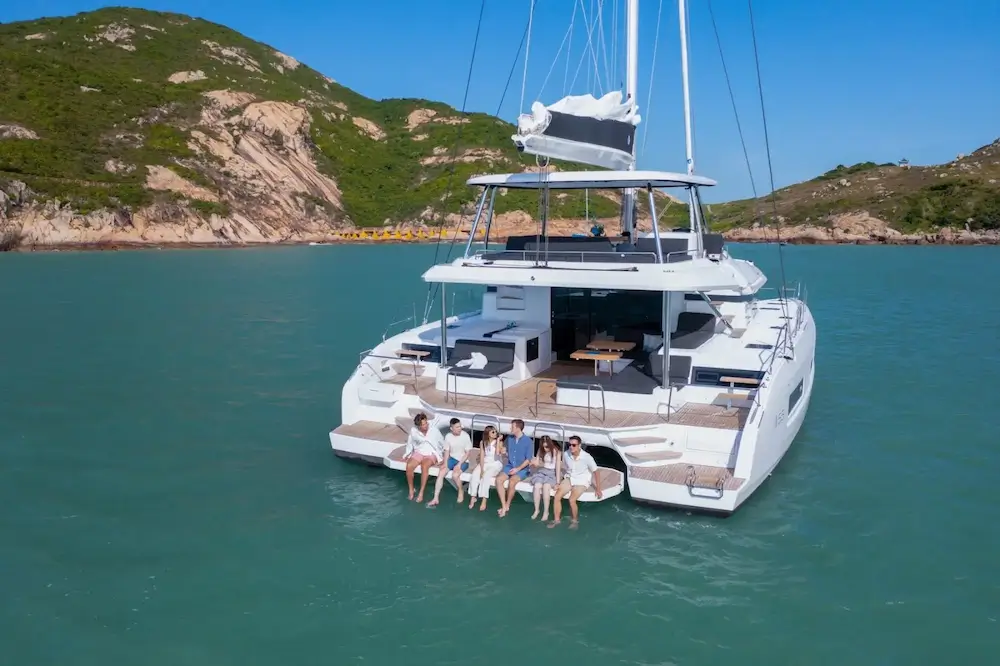
Is A Catamaran Safer Than A Yacht 2
Space and Comfort: A Safety Perspective
Space isn’t just about luxury; it’s also about safety. How do sailors benefit from the design in terms of space?
Catamarans: Spacious & Open
Catamarans are often lauded for their ample deck space. The wide beam ensures that interior spaces are expansive, making movement easier and less restrictive. Moreover, sleeping quarters in catamarans are often located away from the central area, offering more privacy. Those curious about the sleeping arrangements on a catamaran can dive into this comprehensive guide .
Yachts: Compact & Cozy
While yachts might not boast the spacious decks of catamarans, they offer a cozy and intimate setting. The interiors are more compact, which means everything is within arm’s reach, a benefit during rough seas where movement should be minimized.
Performance, Cost, and Draft: The Underlying Safety Aspects
Beyond the obvious design differences, a vessel’s performance, cost, and draft play essential roles in determining safety. Let’s explore these factors for both catamarans and yachts.
Navigating Through the Waves
When sailing in rough seas, the way a vessel interacts with waves can determine its safety.
Catamarans: Riding Over the Waves
Catamarans, with their broad beam, tend to float atop the waves rather than cutting through them. This can offer a smoother experience in light to moderate conditions. However, in stormy weather, this very trait can be a disadvantage, making the boat more susceptible to wave action.
Yachts: Cutting Through with Grace
The monohull design of yachts allows them to slice through waves. In heavy seas, yachts can offer a more predictable ride, ensuring that they can handle stormy conditions better.
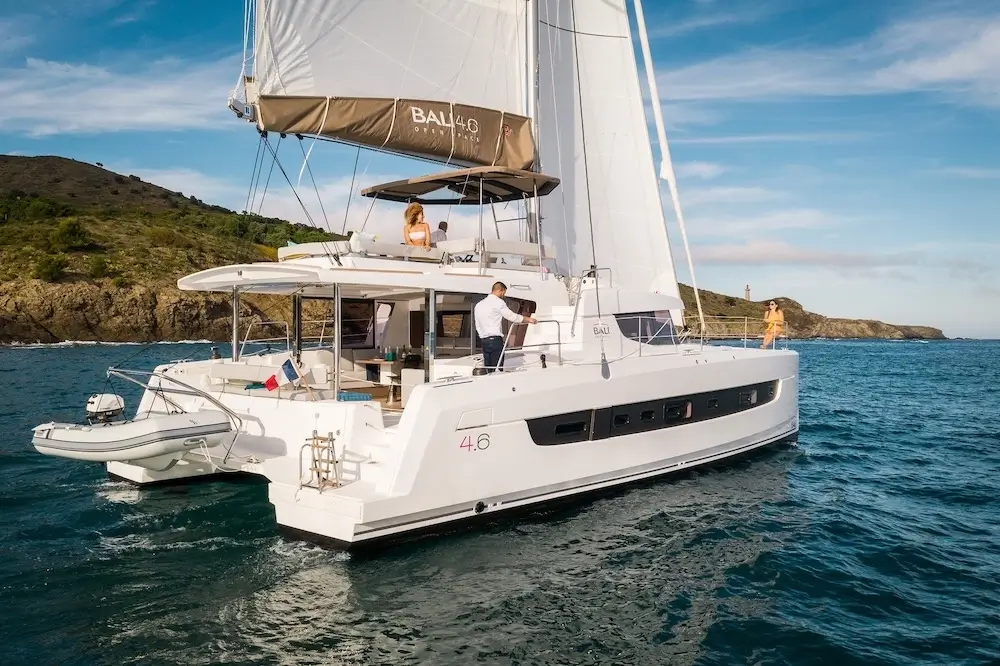
Is A Catamaran Safer Than A Yacht 3
Economic Implications: Maintenance and Cost
The safety of a vessel is directly related to its maintenance. And, often, the cost of upkeep plays a significant role in ensuring routine checks.
Catamarans: Pocket-Friendly Maintenance
Given their increasing popularity, catamarans have seen a surge in production, leading to competitive pricing for parts and maintenance. Their twin-engine setup can be advantageous. If one engine fails, the other can be used, adding an extra layer of safety during voyages.
Yachts: Steeper Costs, But Worth the Price?
Yachts, with their long-standing history, have a well-established maintenance protocol. While their upkeep might be costlier than catamarans, their robust build ensures longevity, justifying the investment.
Draft Considerations: Accessing Secluded Areas
The draft of a vessel determines how close it can get to shorelines or navigate shallow waters.
Catamarans: Shallow Draft Advantages
Catamarans have a shallow draft, which allows them to approach beaches closely and anchor in shallower waters. This trait is especially beneficial when exploring secluded areas or when seeking shelter near the shore during adverse weather.
Yachts: Deep Drafts for Deep Waters
Yachts, with their deeper drafts, are better suited for open waters. While this means they might not access shallow regions as catamarans do, their design ensures better stability in deeper, rougher seas.

Is A Catamaran Safer Than A Yacht 4
Safety Equipment and Amenities
No debate on safety is complete without considering the equipment and amenities on board.
Catamarans: A Modern Touch
Modern catamarans are equipped with the latest safety equipment. Their spacious design also allows for easy storage and access to safety gear. Additionally, amenities like multiple restrooms, vast lounging areas, and more prominent galley spaces contribute to comfort, indirectly enhancing safety by reducing fatigue.
Yachts: Classic Yet Contemporary
Yachts, being the age-old favorites, come equipped with tried and tested safety gear. Their design ensures that equipment is within arm’s reach, crucial during emergencies.
Making an Informed Choice: The Final Verdict on Safety
In the debate between catamarans and yachts, one might wonder if there’s a clear winner in terms of safety. Each vessel brings a unique set of attributes to the table. It’s essential to weigh these attributes against personal preferences, sailing conditions, and the purpose of the voyage.
The Stability Aspect Revisited
We discussed how catamarans, with their dual-hull design, offer incredible stability in calm to moderately rough seas. This stability can significantly reduce seasickness and ensure a comfortable voyage for those on board. However, in extreme weather conditions, this same stability can be a vulnerability. Yachts, on the other hand, might heel more, but their ability to right themselves offers a different kind of safety net.
Size and Space Matters
Catamarans: a roomier option.
One of the significant advantages of catamarans is their spaciousness. This feature isn’t just about luxury. A spacious deck and interiors allow for easier movement, reducing the chances of accidents on board. The ample space also ensures better ventilation, enhancing the overall experience. And, if you’re wondering where to relax during your voyage, here’s a guide on the sleeping options available on a catamaran.
Yachts: Compact but Efficient
Yachts might not offer the same amount of space as catamarans, but their design is streamlined and efficient. Every nook and corner is designed with a purpose, ensuring that sailors have everything they need within arm’s reach.
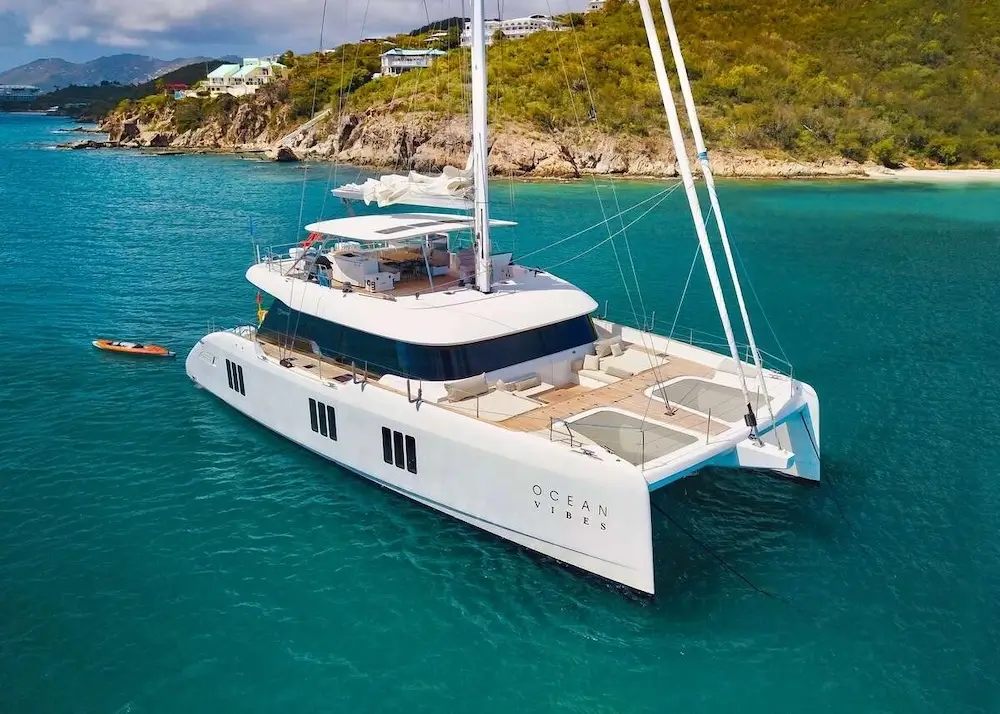
Is A Catamaran Safer Than A Yacht 5
Consider the Crew and Your Expertise
No matter the vessel, safety is often determined by the crew’s expertise and the decisions they make. A well-trained crew can handle emergencies efficiently, regardless of whether they are on a catamaran or yacht. Similarly, if you’re sailing yourself, your experience and judgment play a crucial role in ensuring safety.
What’s the Verdict?
So, is a catamaran safer than a yacht? The answer isn’t black and white. Both vessels have their advantages and challenges. It boils down to personal preferences, the nature of the journey, and the conditions you expect to encounter. Before making a choice, it’s worth exploring the options available, like the diverse fleet offered by Catamaran Charter Italy .
Choosing between a catamaran and a yacht is a personal decision, influenced by various factors. While catamarans offer stability and space, yachts bring with them a legacy of tested safety in diverse conditions. Ultimately, the safety of any vessel is a combination of its design, maintenance, the crew’s expertise, and the decisions made during the voyage. As the saying goes, “A smooth sea never made a skilled sailor.” Regardless of your choice, respecting the sea and understanding your vessel will ensure a safe and memorable sailing experience.
Related Posts
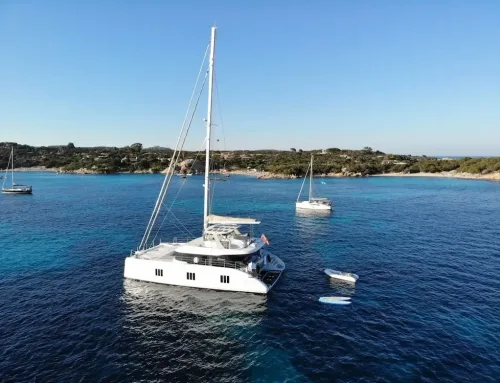
How do I plan a sailing route in Italy?

What are the sailing conditions like in Italy?

What is the cancellation policy for catamaran rentals in Italy?

Catamaran vs Yacht

When getting into sailing, there are so many types of boats you can choose from—pontoons, tritoons, catamarans, yachts, sailboats, fishing boats, deck boats—and all of them have different advantages and disadvantages when getting out into the water. But when it comes to a catamaran or a yacht, which is better, and what are the costs to calling one your own?
Table of Contents
What is a catamaran?
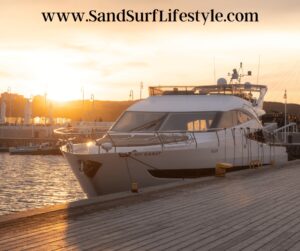
Catamarans come from the peoples of the Indian and Pacific Oceans, who used this form of boat to expand from island to island. The word itself is derived from the Tamil word “kattumaram” which means “logs bound together.”
Because of their construction, they usually have less hull volume, which means they have a shallower draft and a smaller displacement. They are also more hydrodynamic comparatively and require less power than another monohulled boat of the same size. The wide hull of the catamaran also reduces the likelihood that it will heel, or start to roll, in the wind. The wide stance also reduces the wake that the boat gives off.
It is possible to race with catamarans, especially if you are looking for both speed and stability overcapacity. Catamarans built for recreation and sport can be launched and landed from a beach and usually contain a crew of two.
What is a yacht?
A yacht is a blanket term for a boat that uses either sails or power for cruising, racing, or pleasure. While there is no real definition for a yacht, they are typically any sort of boat that has a cabin for overnight use and is a pleasure vessel over 30 feet in length.
There are different sizes of yachts under certain designations—any yacht over 79 feet is considered large, while any yacht over 131 feet is considered a superyacht or megayacht.
The word yacht comes from the Dutch language, which means “hunt.” It started as the name of the fast-sailing ships that the Dutch used to hunt for pirates in the 18th Century. The concept of pleasure boats, though, started early in the world’s history in Egyptian times and only increased in popularity as time went on.
There are several types of propulsion for yachts—sailing, which is when they use sails to catch the air and power. Yachts first started with steam power before turning to the internal combustion engine.
Most yachts, if large enough to accommodate, have a main salon and a forward stateroom in terms of cabins. The larger the yacht, the more rooms it may have.
Catamaran vs. Yacht: Structural Differences
If you are looking for a cruising catamaran, you will need a larger boat than the monohull counterparts. While a monohull can be small, usually around 30 feet, if you want the same sort of carrying capacity out of a catamaran, you will need a boat upwards of 40 feet.
Because of their larger size and width, catamarans will take up more space in your marina, but they are also more spacious than other boats—that width is not put to waste on the deck or underneath.
The double-hulled catamaran also gives more privacy when it comes to the living spaces—the cabins are conveniently separated, keeping the living quarters and sleeping quarters apart on most catamarans.
Looking to purchase a catamaran? Here are the pros and cons of owning one.
Catamaran vs. yacht: performance differences.
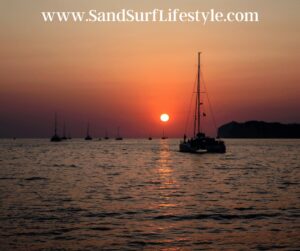
That speed, though, comes at a price—because they have two hulls, you will hear the water slapping against the boat from underneath, which is something you do not get with a monohulled boat.
Because they have two hulls, catamarans are nearly resistant to any sort of heeling, compared to a yacht. They also have extremely high resistance to capsizing, due to their multi-hulled construction. This stability allows for passengers to easily navigate the deck without fear of suffering from wave action. This stability will also let you cook and do any other activities on the deck without fear of displacement.
Catamarans are also easier to handle than another type of boat—one person can singlehandedly sail such a vessel. Because you have two engines and two rudders, it is easier to dock and maneuver compared to a monohulled boat.
Yachts tack much quicker than a catamaran as well—when you turn into the wind so you change which direction the wind blows on the ship—meaning your catamaran will slow down significantly as you turn. A monohull is more maneuverable in the wind.
Catamaran vs. Yacht: Cost Differences
A new, high-quality catamaran larger than 40 feet can run about half a million in cost. Pre-owned catamarans can run as low as $35,000, while larger, new catamarans can exceed $5 million.
Catamarans will also cost more because of the need for two engines and two rudders. The double hull means more equipment, which therefore increases the price. They also use different types of materials, making that cost increase. They also are typically higher quality construction and are safer and easy to sail, pushing the price higher. Because of this equipment increase, your service costs will also be higher.
If you are looking for a smaller yacht, those would put you within the 50 to 70 feet range. Choices also include the engine and optional equipment, along with whether you intend to purchase a new or a pre-owned yacht. New yachts in this size range can run about
Pre-owned yachts of this size can run anywhere between $300,000 for a smaller model to almost $6 million for a larger one. Most around 50 feet are an average of $375,000.
Catamaran vs. Yacht: Which is better?
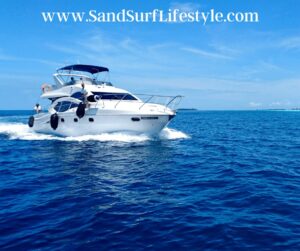
If you want to stay with the traditional sailing experience with more feedback about how your ship is moving, along with keeping a smaller footprint both on the water and in the marina, a yacht is the way to go. They are much more maneuverable than a catamaran in the water. Yachts are also cheaper than a catamaran.
Regardless of what you’re looking for in a boat, the choice remains with you about what you value most in your travels. Whether it’s a catamaran, a yacht, or something entirely different, know what you are looking for in your vessel before going out and looking to buy.
Please note: This blog post is for educational purposes only and does not constitute legal or medical advice. Please consult a legal expert or medical professional to address your specific needs.
Aloha! My name is Shawn and I Love the Beach and Ocean! From surfing to beach sports to boating and fishing I like it all. More importantly, I Love the people I get to meet who also share a passion for the sand and surf. Living and growing up near the ocean my heart has always been connected to the beach and its lifestyle. I wish to share my experience with those around the world. Mahalo (Thank You) for visiting and enjoy your stay here on my site!
Recent Posts
Adaptive Surfing: Overcoming Challenges and Inspiring Stories
Adaptive surfing has truly opened my eyes to the power of resilience and determination. The sport's inclusive nature has broadened my perspective and highlighted how adaptive surfers face and...
Spotlight on Surfing Destinations: Hawaii Edition
Exploring Hawaii's Surfing ParadiseSurfing in Hawaii has been a dream come true for me, as it's where I've discovered some of the most incredible waves and surfing cultures in the world. In this...

Catamaran VS Sailboat, 9 Important Differences You Should Know!
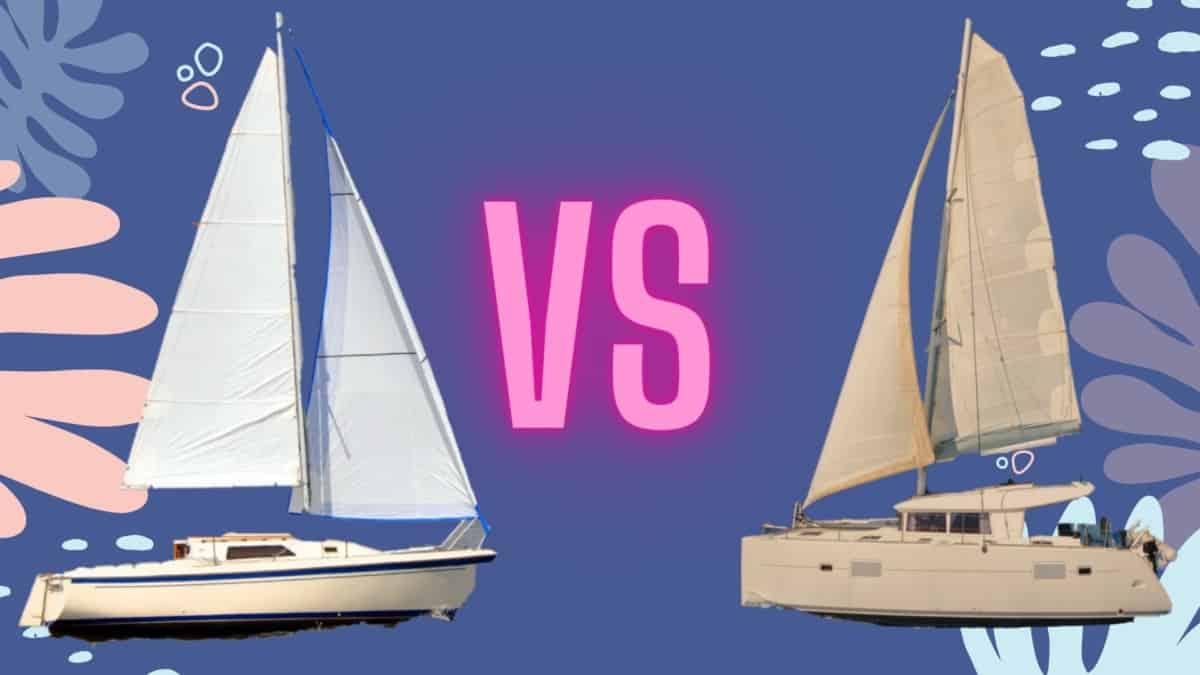
As an Amazon Associate, we earn from qualifying purchases. We may also earn commissions if you purchase products from other retailers after clicking on a link from our site.
This is one of the never-ending questions out there, catamarans vs. monohulls (also known by some just as sailboats). The discussions are wild and are, many times, really hard to follow unless you’re already a vivid sailor. By then, you probably already have your own opinion on what the differences are.
In this post, I’m trying to take a little more pragmatic approach to describe the 9 most important differences that I think you should know about.
Table of Contents
1. Catamarans Have Two Hulls, Sailboats or Monohulls Have One
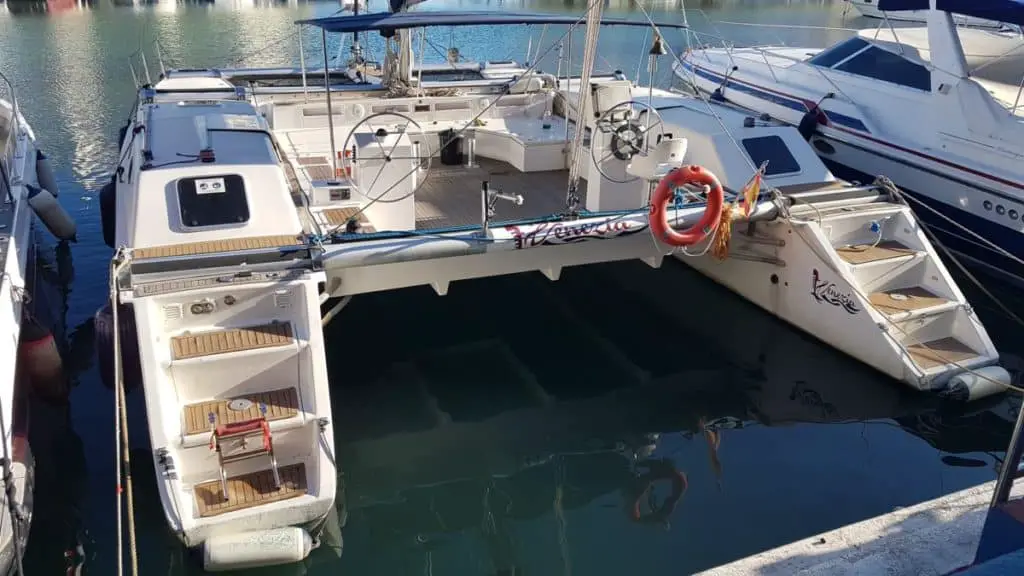
This is the most apparent feature that strikes you when you look at the two boats next to each other; one has two hulls, and the other only one. Mono, as you might know, means one (1).
Having two hulls also implies you need something that connects them, making the boat look a little bit like a manta ray, or is that only me?
2. Monohulls Will Rock From Side to Side
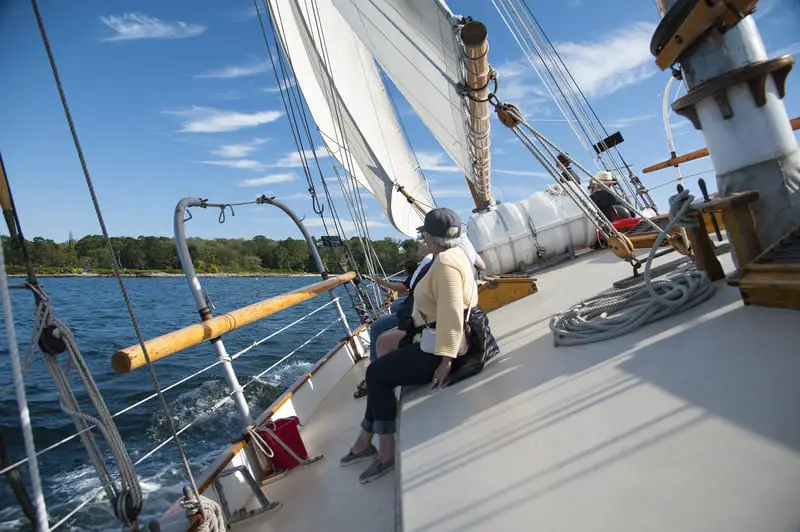
Catamarans don’t heel (leaning to its side in boat language). Therefore, they offer a very different sailing experience, which is more stable and usually more comfortable; this also applies when staying at anchor. The catamaran will move around with the wind, always staying flat, while the sailboat will rock from side to side and might even get you seasick .
This is especially noticeable when the wind is opposing the waves, making the boat have the wind pushing it from one side and the waves banging it from the other side. This makes for a very uncomfortable anchorage on a monohull. Basically, you are the iron, and the wind and wave are your hammer and anvil, not a perfect place to be.
3. Catamarans Offer More Space for the Same Length
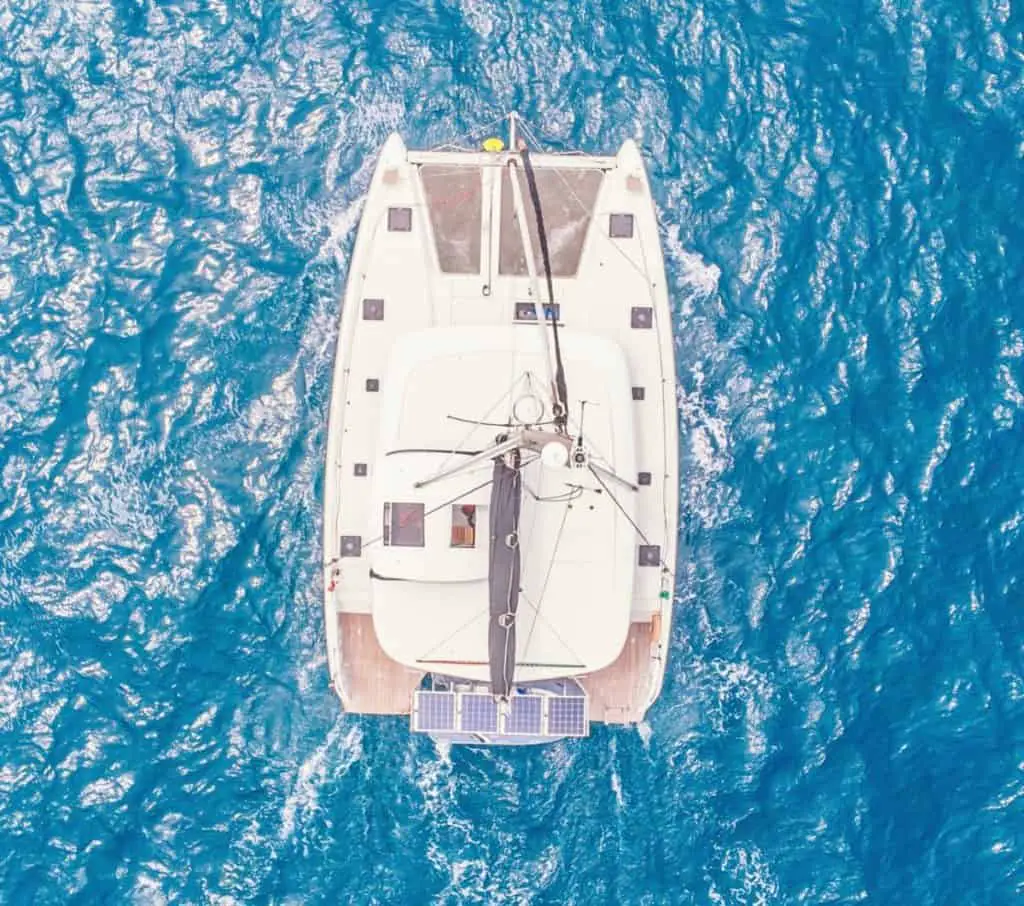
For the same length of boat, let’s say 40ft, you’re getting a lot more space on a catamaran. This is due to the two hulls, but also the big deck that attaches the hulls. There will also be even more space on the outside of the boat, both fore and aft of the mast. In between the bows, you will have either a solid deck or trampolines , which will greatly increase the space.
4. Catamarans Make Horrible Noises While Sailing Upwind
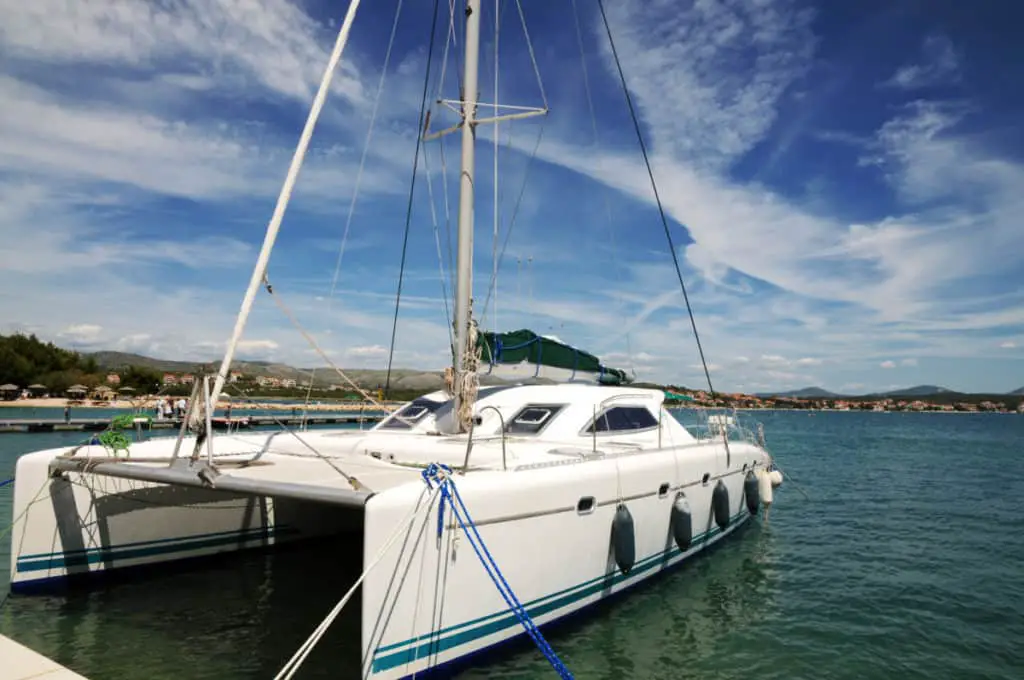
The distance between the water surface and the deck’s underside is called bridge deck clearance ; if it is not big enough, even small waves will start smashing into the underside.
This repeated cycle of waves hitting the boat does induce not only great noise but also a lot of vibrations and discomfort to the crew.
This problem is something that just doesn’t exist on monohulls (only one hull) and also is a strong argument from those who prefer monohulls.
The noise might not be a big deal when traveling coastal waters for a few hours a day, but consider going days on end straight into the wind, hearing that banging noise, ad a little motion sickness, and you will pretty soon wish you were on a monohull 🙂
5. Monohulls Are Slower Than Catamarans
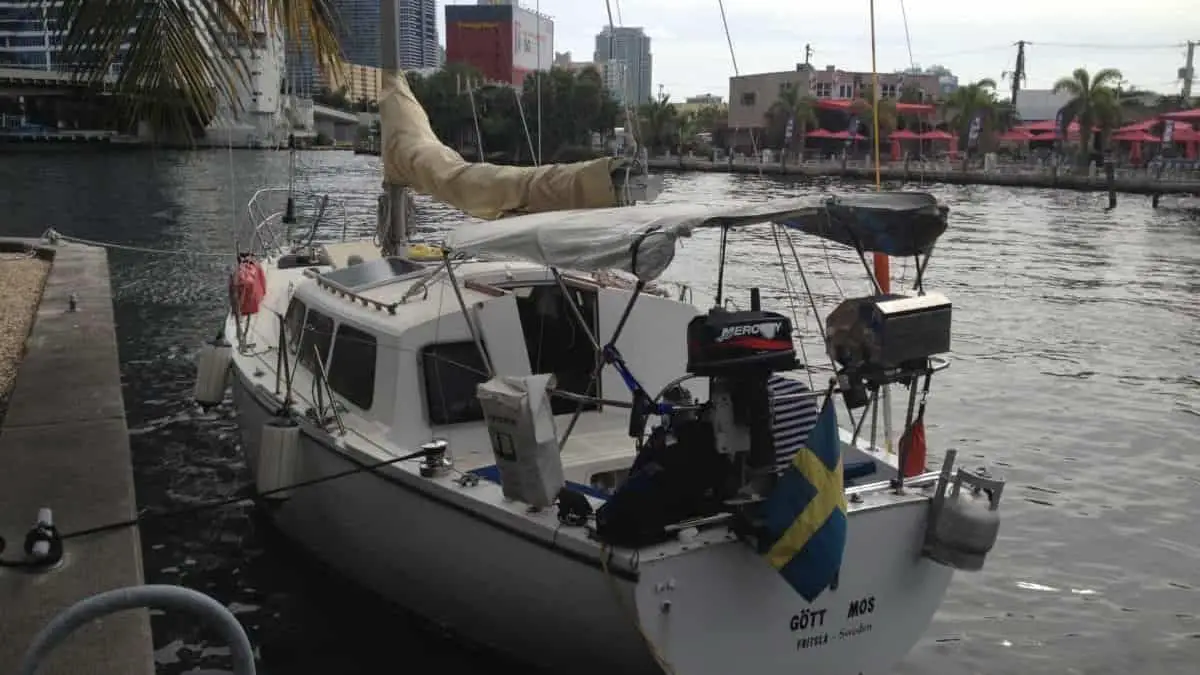
At least that is the short answer, this applies if we only compare the length of the boat, but if we compare the total length in the water, it’s a different story. Much of this speed comes from the decreased drag, bigger sails, and a catamaran’s lesser weight.
Here are some articles when you want to better understand catamaran speed:
- Cruising catamaran speed
- Fastest cruising catamarans
- Catamaran hull speed calculator
- Are trimarans even faster than catamarans?
- 20 Performance cruising catamarans
6. Catamarans Offer Less Helm Feedback
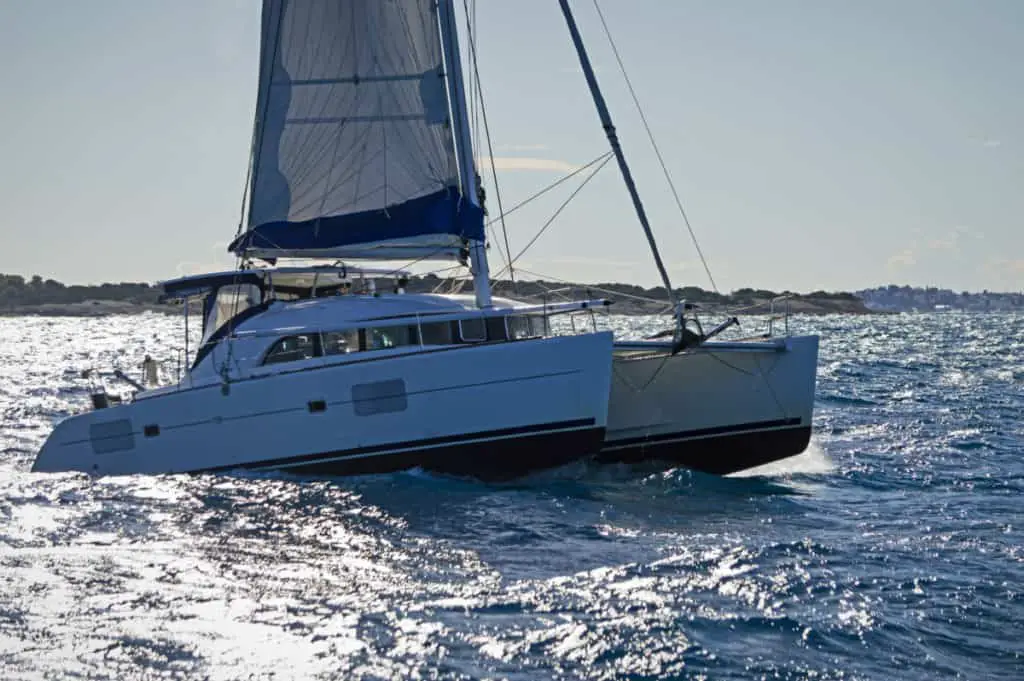
One big benefit of having a boat that heels is that it’s a great way to get feedback on whether or not the boat is overpowered. Since a catamaran stays flat, it is harder for a new captain to understand when to reef.
This could be a safety issue for those transitioning from monohulls to catamarans, which I believe is the most common way people acquire a catamaran.
7. Monohulls Are Harder to Dock
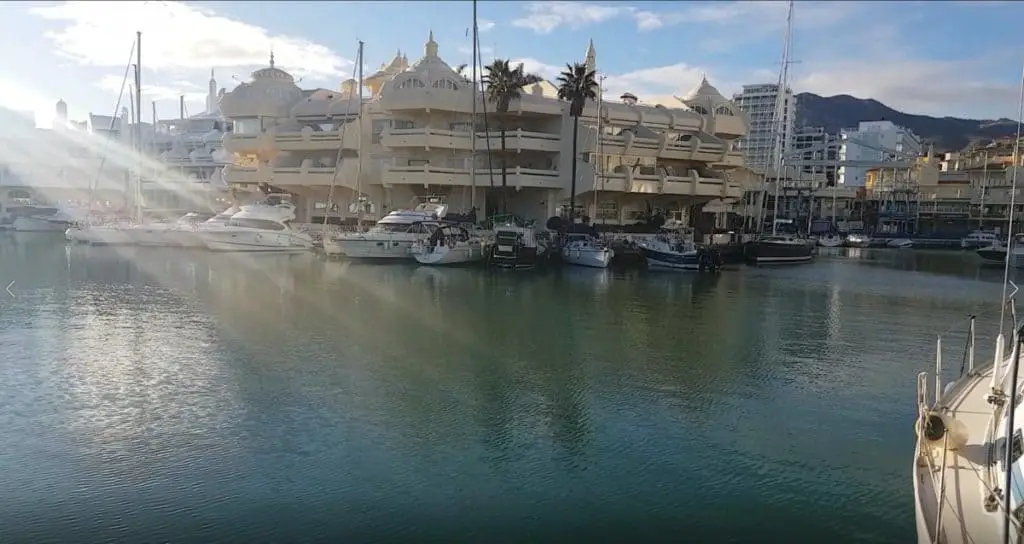
For a monohull to turn, it needs enough water passing around the rudder; for enough water to pass around the rudder, the boat needs to be moving. So this means once you stop your boat, you can’t turn; the things that move you are the wind and the current. This is the tricky part with a monohull, the timing needs to be perfect, or you’ll either go too fast and hit the dock, or you’ll go too slow and drift away.
On a catamaran, that’s different, you see; now you have two engines, much like a battle tank, you can now make a 360 turn on the spot. This means you can do a full stop, put one engine in forward and one in reverse, making the boat spin on its axis. That’s great! I wish my car would do that.
8. Catamarans Are More Fuel-Efficient
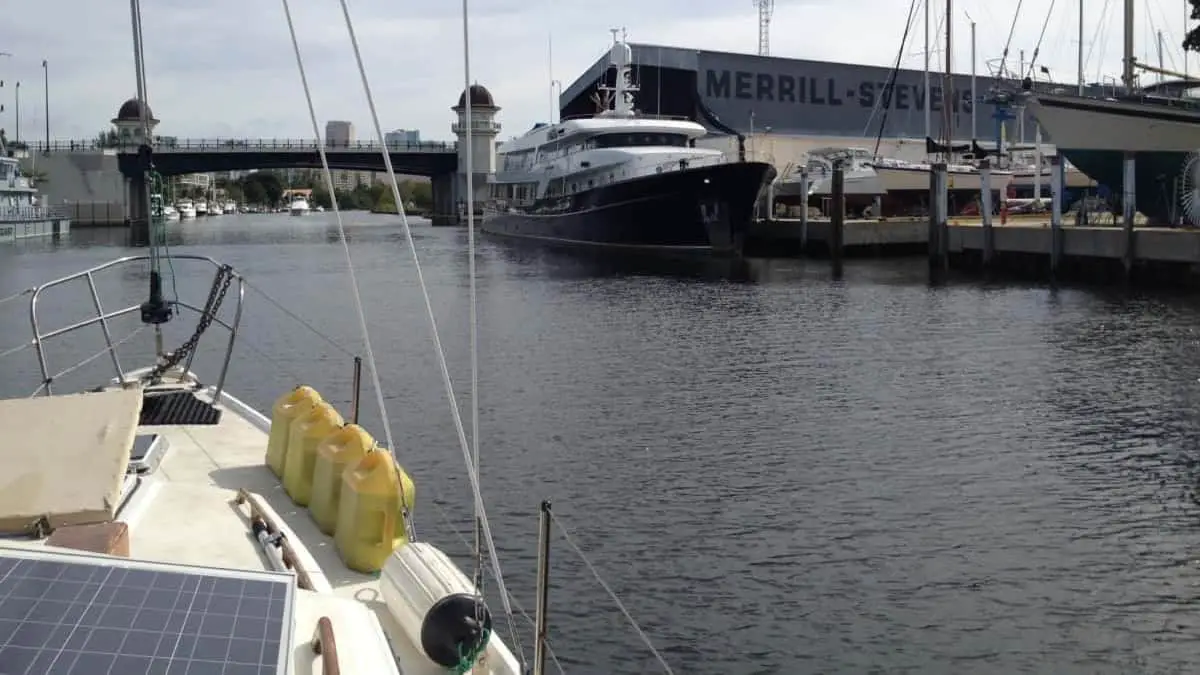
Saying a catamaran is fuel-efficient is like saying your Ford F150 truck is fuel-efficient. But, in comparison to its one-hull brother, it’s true, this really needs a lot more explanation for it to be a fair comparison, but only considering the lengths of the boat, the catamaran will consume less fuel.
This is mostly a consequence of the less drag a catamaran has since the weight is distributed over a greater area.
- Catamaran fuel efficiency data contributed by owners
- Electric vs gas: outboard engines. Which is the best?
9. Catamarans Offer More Comfort
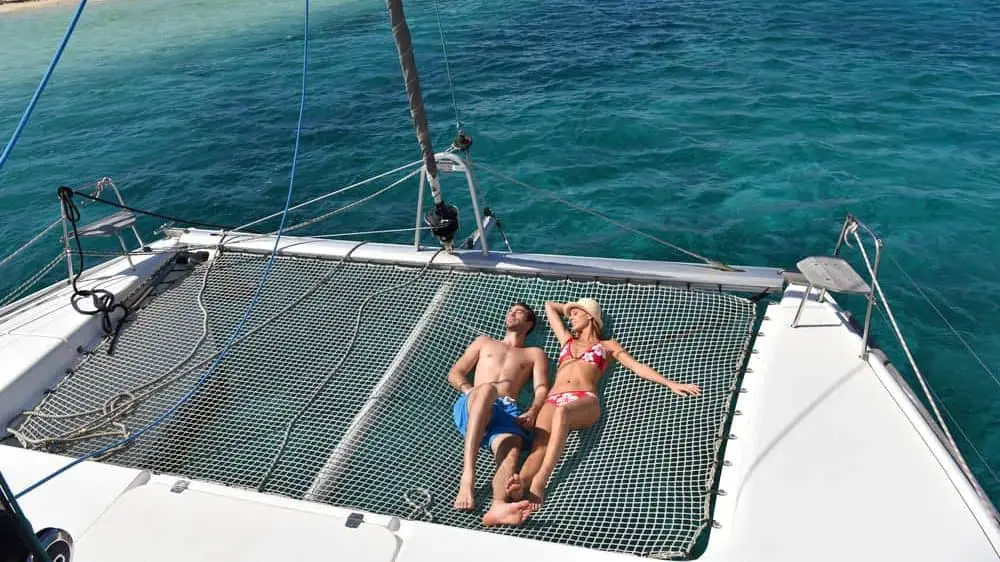
Since catamarans have more space and don’t heel as much, they offer a more comfortable experience. One beautiful aspect of having a big deck is that you can hang out in the trampolines; they are basically two big hammocks, and since hammocks already are great, putting them on a boat makes them awesome.
And since it doesn’t heel, you can also freely move around on the boat without spilling your drink or being at risk of falling overboard. This also means that going inside to cook is a treat since you don’t have to cook while trying not to fall over.
Looks and Other Factors
All in all, catamarans are great, but so are monohulls; there are also many other factors that I haven’t mentioned yet; these are mainly factors of the heart.
Many people feel that it isn’t real sailing if it isn’t done like it was in the good old days, heeling over and all. And to some extent, I can totally agree with that, but on the other hand, enjoying those two trampolines while on a sunny weather cruise down the bay is something I can’t forget.
And also the looks, catamarans look great; I think they look and almost move like those manta rays you can see down in the Bahamas. On the other hand, there is not much cooler than seeing a solid old monohull dig deep into the waves and go almost straight into the wind; what a feeling!
What do you think?
Owner of CatamaranFreedom.com. A minimalist that has lived in a caravan in Sweden, 35ft Monohull in the Bahamas, and right now in his self-built Van. He just started the next adventure, to circumnavigate the world on a Catamaran!
Leave a Reply Cancel reply
Your email address will not be published. Required fields are marked *
Save my name and email in this browser for the next time I comment.
Recent Posts
Must-Have Boat Gear for Catamaran Sailors!
Sailing is probably the most gear-intensive activity I've ever done; there are so many decisions to be made about what gear to buy now, for tomorrow, and what to definitely never buy. The gear on...
6 Best Trailerable Trimarans For Bluewater and Coastal Sailing
Having a boat costs a lot of money, even when you are not using it, marina fees, etc. And once it is in the water most sailors never go very far from their "home marina" and sailing will be somewhat...
- Yachting for beginners
- Owning a yacht
- Motor Yachts
- Sailing Yacht
- Indian Ocean
- Mediterranean
- Buying or Selling a Yacht
- Yachting Events
- FAQ – Luxury Yacht Charter
- FAQ – Buying a Yacht
- FAQ – Sell your Yacht
- How Much Does It Cost To Charter A Luxury Yacht?
- All our Blog Post & News

Trimaran vs. Catamaran: What are the Differences?
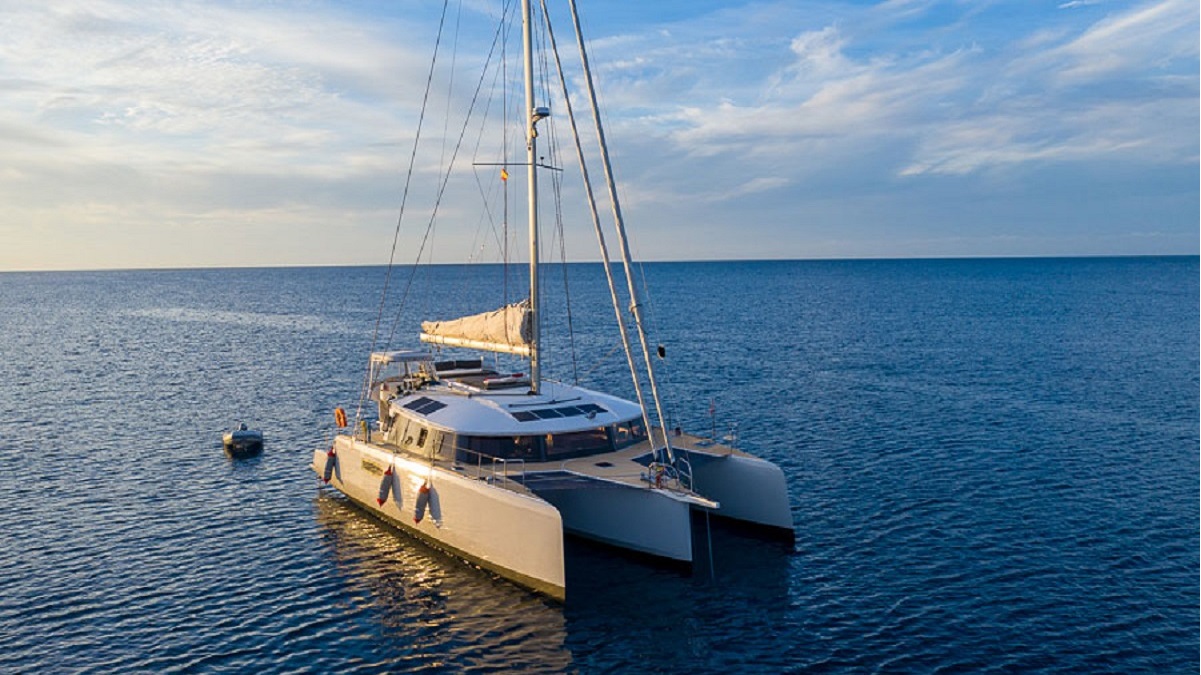
Experience the thrill of sailing on a multihull – a boat with two or three hulls. Discover the unique features of the trimaran and the catamaran , and how they differ in performance and comfort. Want speed and excitement? Take the helm of a trimaran. Prefer a leisurely cruise? Relax on a catamaran. Don’t miss out on this exciting article uncovering the secrets of multihull sailing.
How to recognize a trimaran from a catamaran?
First up, the catamaran. Simple, sleek, and stylish, this craft boasts not one, but two identical hulls – making it a twin amongst ships. Its minimalist design is a thing of beauty, and it might just be the perfect float for solo explorers or couples seeking a romantic ocean adventure.
On the other hand, the trimaran is a multihull masterclass in innovation. With a total of three hulls, including two small outriggers, this vessel’s design is unlike anything you’ve seen before. In fact, some have compared it to a spaceship, and we can see why! The trimaran’s unique layout and engineering wizardry make it a worthy addition to any seafarer’s fleet.
So, whether you’re a catamaran connoisseur or a trimaran trailblazer, there’s no denying that these vessels are truly remarkable. Just don’t ask us to choose a favourite!
What are the trimaran main characteristics?
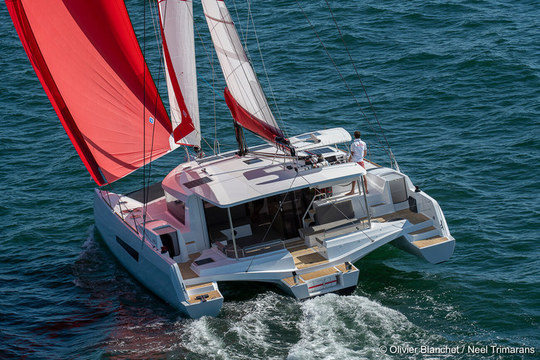
A trimaran’s three hulls are like the training wheels on a bicycle, making it incredibly stable even in choppy waters. These recreational boats are a sailor’s dream, offering a smooth ride and exceptional comfort. And when it comes to safety, trimarans are virtually unsinkable due to their triple-hull design – even the roughest storms won’t capsize them! Although compromising some sailing capacity, the security and stability of a trimaran are unmatched.
All about Neel trimaran here
What are the catamaran main characteristics?
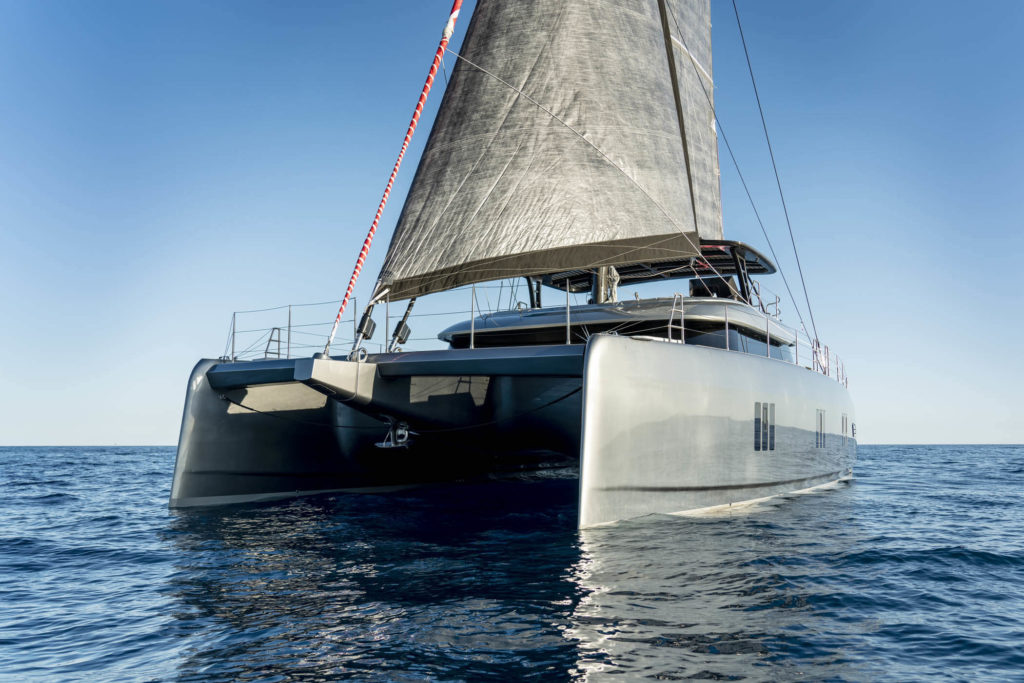
Discover the one-of-a-kind world of catamarans – versatile vessels affectionately nicknamed “cats”. Offering an exciting and luxurious sailing experience, these boats come in a range of sizes, from cozy two-person cabins to expansive group accommodation for up to 20. Some catamarans are budget-friendly options perfect for families, while others provide the ultimate indulgence and can transport you to some of the most coveted destinations in the Caribbean and Mediterranean. With their roomy interiors and stable design, catamarans are perfect for exploring calm sea gulfs, lagoons or shallow waters.
What is the (true) cost of chartering the yacht you've seen? 💰⛵
The advertised prices of all charter companies do not include APA, VAT & other variable costs.
Use our calculator to get a 100% FREE estimate of the REAL total cost of your next yacht charter! ⬇
All our catamarans & trimarans for charter here
Trimaran vs. Catamaran: which one has the largest surface area?

Catarmarans surface area is known to be spacious
Catamarans have filled the world’s oceans in recent years with more huge and luxury versions, including sailing catamarans like the Lagoon Seventy 7, Fountaine Pajot’s Allegria 67, and motor catamarans like the Sunreef Power 70. The biggest catamaran known is Hemisphere, and you may want to have a look at Douce France available for charter with WI.
Catamarans are well-known for their large living quarters, which are divided between the two hulls and the central platform.
Trimarans surface area are constantly improving
Among some of the cruising, habitable trimarans, the DragonFly boasts a unique Swing Wing system and a plush interior, while the Vietnamese-made Rapido Trimaran is the brainchild of the esteemed Morrelli & Melvin design house. But what really sets the Naval NEEL shipyard trimarans apart is the incredible “Cockloon” living area above the central hull – it’s like staying in a floating hotel! With cabins located solely on the floats, the central kitchen, panoramic saloon, and lounging areas are all linked together for an unbeatable sense of space and luxury. And don’t forget the expansive flybridge, too!
Read also : The yacht charter experience ladder
Trimaran vs. Catamaran: Stability and Performance
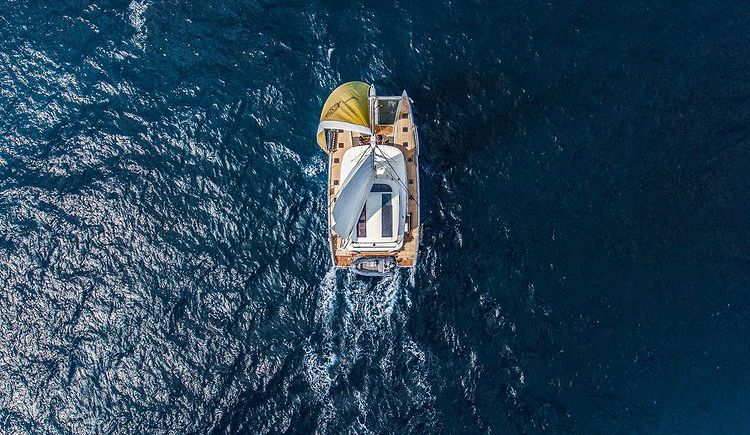
The Trimaran stability made it famous
With three hulls, including one main and two overhanging, a trimaran is built for stability even in the roughest waters. In fact, it’s nearly impossible for a trimaran to capsize, making it a safer option for the adventurous seafarer. And if by some chance or circumstance the boat does flip, fear not – it’ll stay afloat! The only downside? The trimaran provides both the comfort of a monohull and the safety of a multihull, but hey, no boat is perfect. Did we mention it’s also one of the fastest boats out there? Sounds like a win-win to us.
The Catamaran performances aren’t as versatile as trimaran
Catamarans are incredible vessels that offer not only a smooth sailing experience, but also a comfortable ride. Ranging in size from cozy cabins for two to massive ships that can fit 20, catamarans are top-notch for stability. However, they aren’t particularly cut out for rough seas, preferring calm waters like tranquil gulfs and shallow lagoons. Keep in mind that while they may not excel in upwind sailing and lack the heeling abilities of other boats, catamarans will still take you on a sailing adventure like no other.
Trimaran vs. Catamaran: Distinct Sailing Experiences
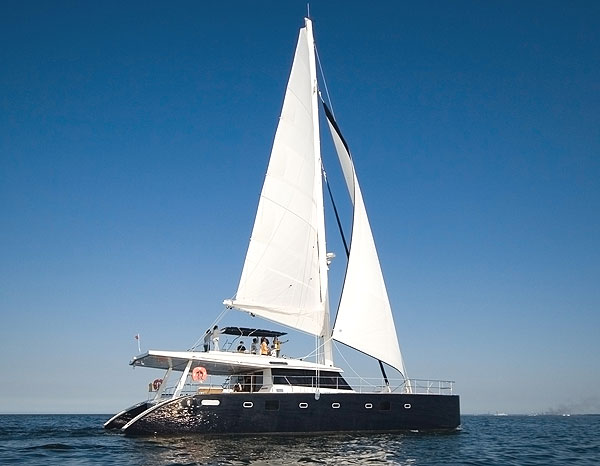
Sailboats rely on wind speed to move forward, but stability is crucial to avoid capsizing. Monohulls have a keel underneath to prevent this, making them more durable in heavy winds. Meanwhile, multihulls such as catamarans offer greater stability with their floats, resulting in a smoother ride even in rough seas. However, trimarans are more similar to monohulls and may tip more, offering advantages in rougher waters but less comfort on calm days. Overall, multihulls have an edge in stability compared to their monohull counterparts.
Trimaran vs. Catamaran: Safety
Trimarans are very safe boats.
You might be surprised to find out that Trimarans are extremely safe; in fact, many trimarans, are almost unsinkable. They have a core made up of foam, and the materials’ buoyancy is extremely high in comparison to the boat’s displacement. Trimarans are safe because of their breadth. The trimaran is the safest of the multihulls because of its three-hulled design, weight centering, and complete anti-drift scheme.
Moreover, even if the trimaran were to overturn, the structure would keep it from plummeting into the water, making it an extremely safe boat.
Catamarans safety is still very good
Catamarans are a safe way to travel the ocean. Offshore, catamarans are often far safer than monohulls of similar size. Enhanced resilience, speed, steadiness, and motion ease due to a lack of ballast all contribute to safety.
A large modern catamaran has an outstanding resilience and roll inertia. The mix of these factors makes invasion or capsizing extremely unlikely. When a 20-foot wave hits a catarmaran’s beam, the boat will just surf sideways.
Trimaran vs. Catamaran: Racing
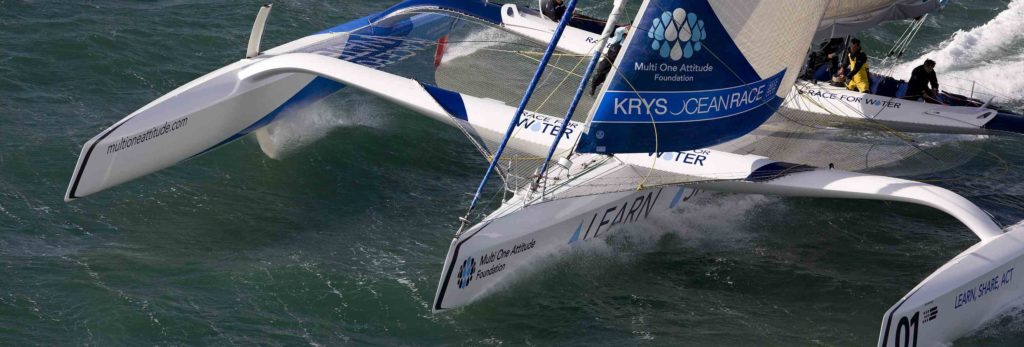
Catamarans are very fast downwind
Catamarans are recognized for their velocity, and some of them are capable of breaking world sailing records. Catamarans may travel at a pace of 15 to 30 mph, with the best reaching speeds of well over 60 knots.
Cruising catamarans may reach high speeds of 15 knots, or 17.3 mph, on average (27.84 kph). In the right wind conditions; however, some outstanding racing catamarans can reach a pace of up to 30 knots.
On downwind runs, reaches, and broad reaches, catamarans are typically quicker than trimarans. Sailing a catamaran is less exhausting than sailing a trimaran. Sailing flat has a number of benefits. Carrying tanks and other diving equipment is significantly simpler on a cat if you are a SCUBA diver.
Catamarans are lighter than trimarans because they do not require a heavy keel. This, along with the fact that their sails are placed equivalent to the wind, allows them to sail quicker than trimarans, particularly on a run or broad reach.
Trimarans are the usual racing winner
Trimarans are frequently preferred in racing these days, especially in the previous decade or so.
For long offshore races, racing trimarans’ speed and safety qualities have significant benefits. Even in severe seas, they can be pushed harder and are more forgiving than other racing catamarans. These are the primary reasons why trimarans have become so popular in recent multihull competitions. Trimarans, for example, have won the Jules Verne Trophy every year since 2010.
Trimarans can often increase their monohull sailing speed on almost every point of sail while cruising catamarans are usually 25-30 percent faster than a sailing monohull of the same length. Of course, when the boats are filled for cruising, these comparisons vary drastically.
A trimaran is more suited to sail upwind than a catamaran, which is more vulnerable to drifting. Trimarans are; therefore, quicker than catamarans, and this benefit is especially noticeable when cruising against the wind due to the weight centering in the middle hull, which lowers pitching.
The third hull really makes trimarans considerably quicker than any other hull form at a given extent based on the relation between a boat’s waterline length and speed i.e. that more hull distance in the water leads to higher speeds.
Which is Better: A Trimaran or a Catamaran?
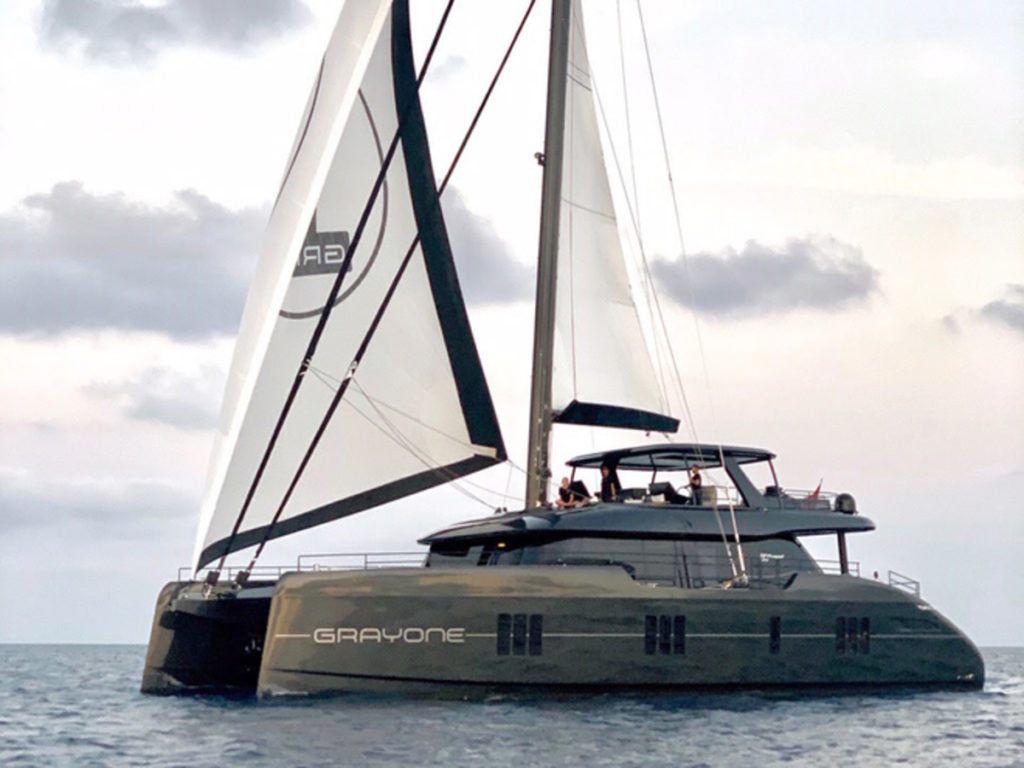
If you want to spend less time on deck, a catamaran is a great option. Catamarans are also ideal for hosting gatherings and parties while maintaining their stability on the water.
A trimaran is a more ideal boat for you if you want to develop your sailing talents on something more difficult. Moreover, if you’re a speed demon, keep an eye out for the fastest trimaran boats and pick the one that best meets your needs.
While picking between a catamaran and a trimaran appears simple on paper, it becomes more challenging when you see them in front of you. Check out our page for more details in order to make a more informed decision.
Read also : YACHT INSURANCE: THE DEFINITIVE OWNER’S GUIDE
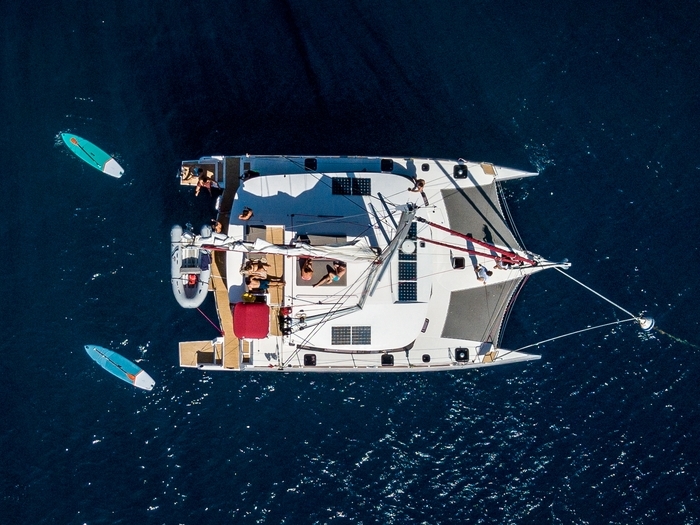
Experience the ultimate Caribbean holiday aboard l’Octant a Neel 51 trimaran.
Don’t miss out on this incredible opportunity from $14,500 per week.
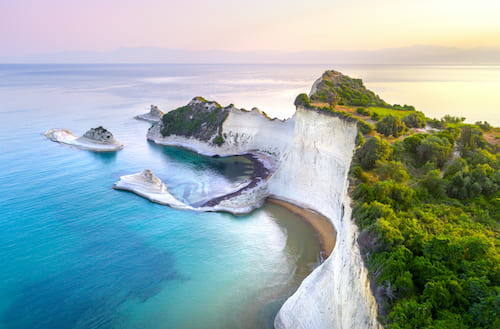
Gunboat 72V “Wonderful”: Our Review of the (Very) Fast Catamaran
The yacht refit guide: tips and realities, you might also like.


Windward Yachts Launches WhatsApp Channel for Latest Updates
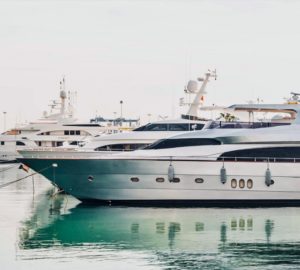
Yacht Brokerage Fees: What You Should Know
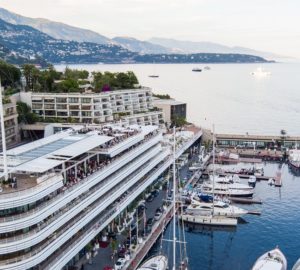
What is a Yacht Club? Benefits & Features Explained
Monohull vs. Catamaran: which yacht is for you?!
By Yacht Week
Posted on 29th June 2022

If you're excited to join The Yacht Week but have never sailed before, we're here to help you decide on your perfect floating home for the week. From catamarans to monohulls, Classic to Premium, check out our handy guide with all the different types of yachts to help you work out which one is best for you.
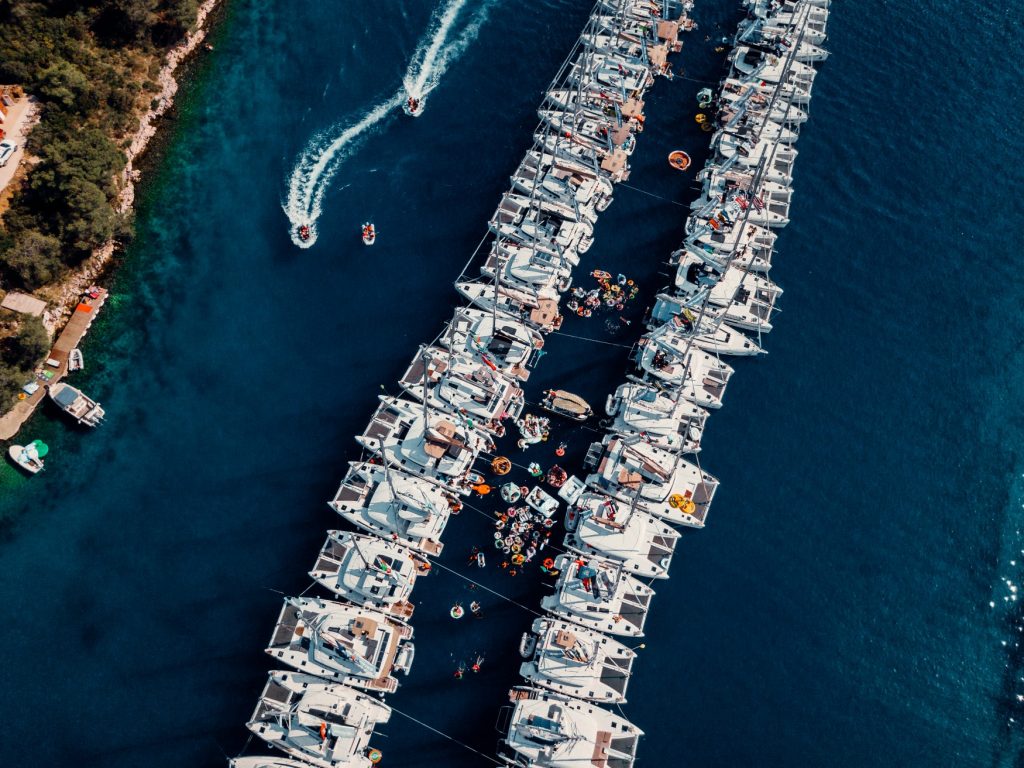
Catamaran vs monohull - what's the difference?
Firstly, let's talk terminology. To choose between a monohull and a catamaran you need to know what makes them different. Simply put, as the name suggests, a monohull has only one hull (the main body of a yacht), whereas a catamaran has two hulls.
The benefits of a catamaran having two hulls is that they will typically stay more level and offer a lot more space, while a monohull will always reach faster speeds when sailing. Here's what one of our amazing hosts, Cara Whiteman, has to say about the difference:
If you like to sail, make sure you book a monohull to get a real authentic experience with the yacht leaning over and cutting through the waves under sail! Don’t worry if you still like your space - you can always book the larger monohulls, such as the Jeanneau 54 .
Alternatively, if you are looking to top up on the tan, a catamaran is the best bet, with lots of outside space for lounging and sipping on cocktails. The kitchen is much bigger and the yacht stays more stable at sea, so if you’re a foodie you’ll enjoy the spacious and more social dining experience that the extra room allows.
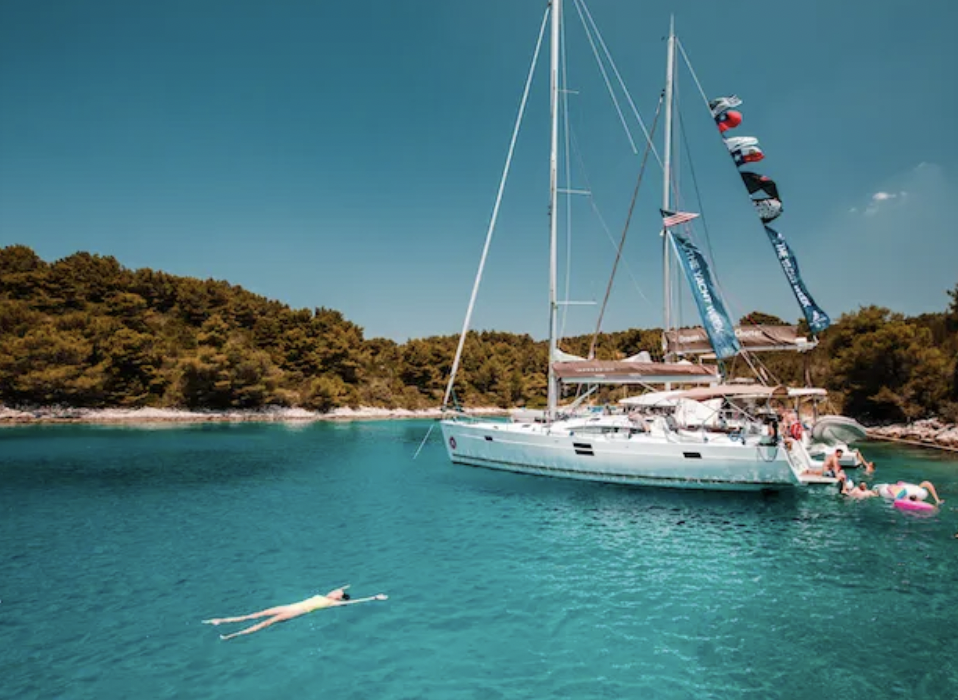
Things to think about before you book
There's nothing better than a recommendation from someone really in the know. Another of our amazing skippers, Anton Ha, has some great tips for you to think about before you book:
If you're planning to join TYW at the peak of summer, especially between weeks 26-34, then make sure you book a yacht with air-conditioning!
Don't plan to let people sleep in the saloon (lounge area) as it makes the yacht look messy all week long, which is no fun. If you can afford to keep your crew size down, you will really enjoy the uncluttered space.
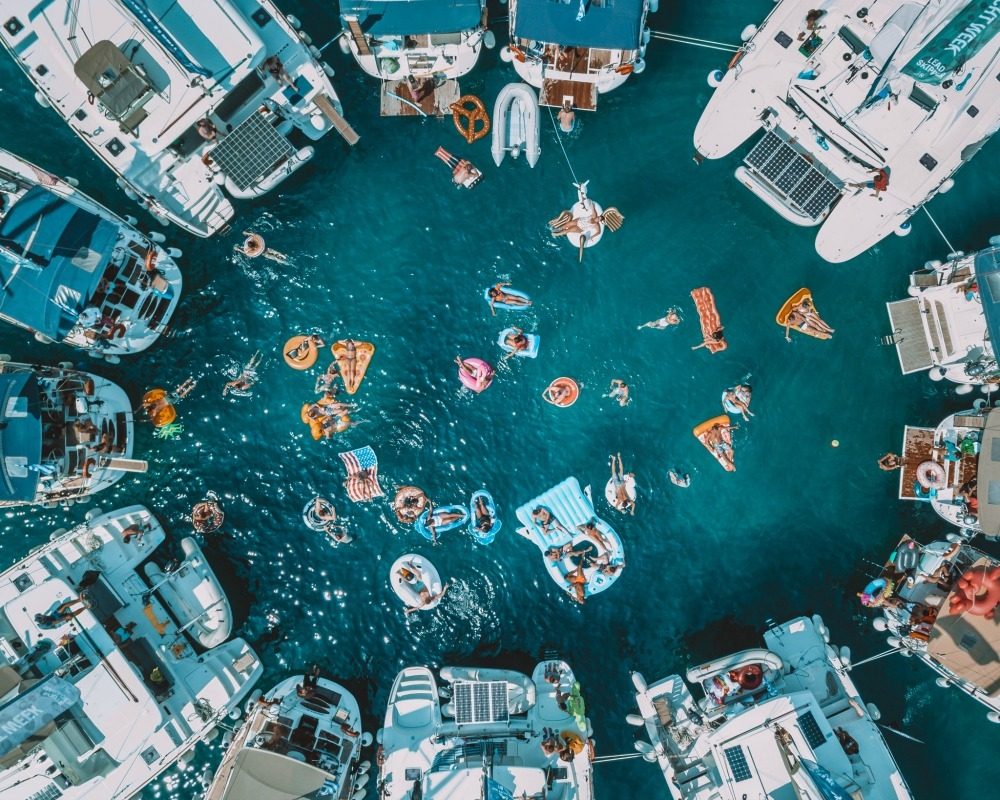
What's included with all our yachts?
So now you know the differences, but what do they all have in common? Here's everything that comes standard with our yachts:
- Your skipper - Very necessary, of course. Our amazing skippers are an essential part of your experience as they will help you sail your way through the week. They'll navigate your yacht, lead your crew and make sure you discover all the hidden gems along the way. They're there to ensure you have a safe and enjoyable experience and are happy to teach you some of the key skills for sailing if you’re keen to get involved.
- Fully equipped kitchen - Feast your way through the week by whipping up a storm in your very own kitchen. Packed with all the pots, pans and cutlery you could need. Don't want to bother with the cooking? Book yourself one of our friendly hosts for the week.
- Bedding and bathroom towels - All your linens are provided, so no need to pack any of these. We do suggest bringing your own beach towel so you don’t get seawater on your bathroom towel.
- Speakers - Every yacht has its own speakers, so you don't need to bother about packing these. Pump out the tunes as you sail your way through an unforgettable week.
- Wifi - while we definitely encourage you to switch off and enjoy every minute of the week, we also make sure you don’t lose touch with the real world (unless you want to, of course).
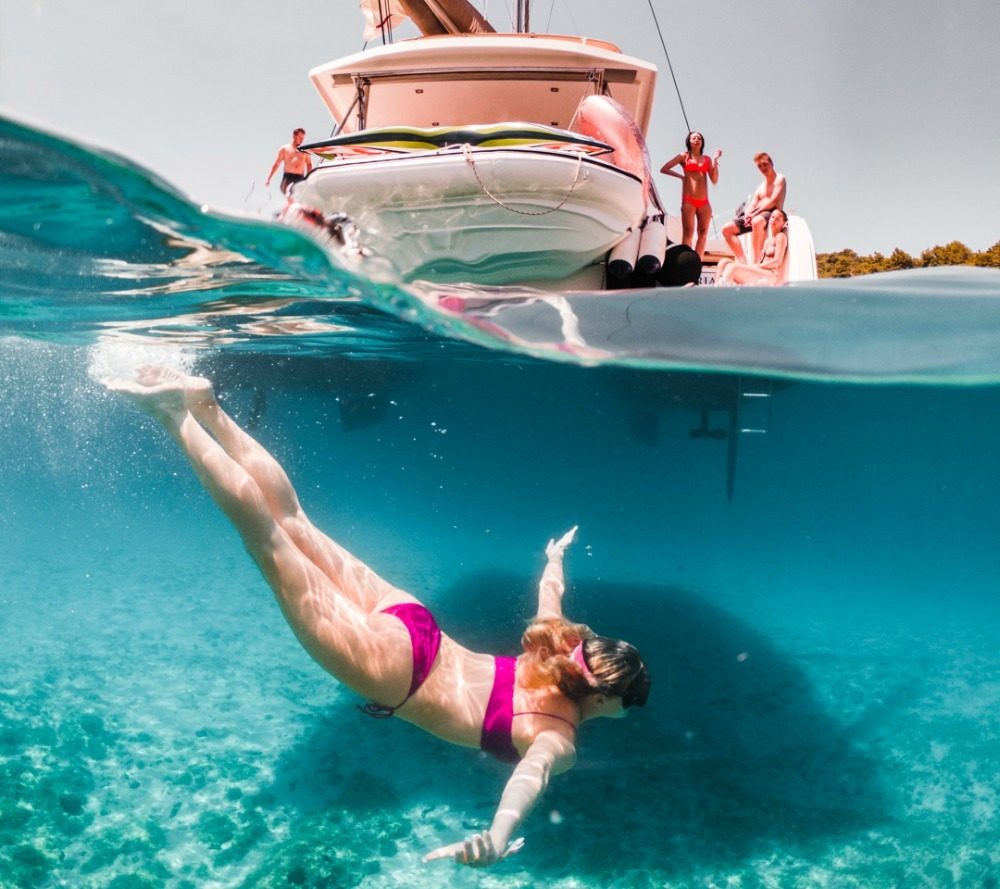
Which yachts do our skippers and hosts recommend?
So now you know about all our different categories of yacht, but which ones do our skippers and hosts love? Surprisingly, they all have their own preferences for different reasons. Check out which yacht three of our amazing skippers and hosts recommend.

" In my opinion, the Lagoon 450 catamaran is the perfect TYW boat. Four spacious cabins for up to eight guests. Two crew cabins, so your skipper and host will be well-rested. A huge icebox, which is a great addition to the air conditioning and three fridges (two for food, one for drinks) on hot days, as it means cold drinks all day long. There's also a huge sunbed on top and a net upfront, which are the perfect spots to enjoy a sunny day on the water. " - Anton Ha
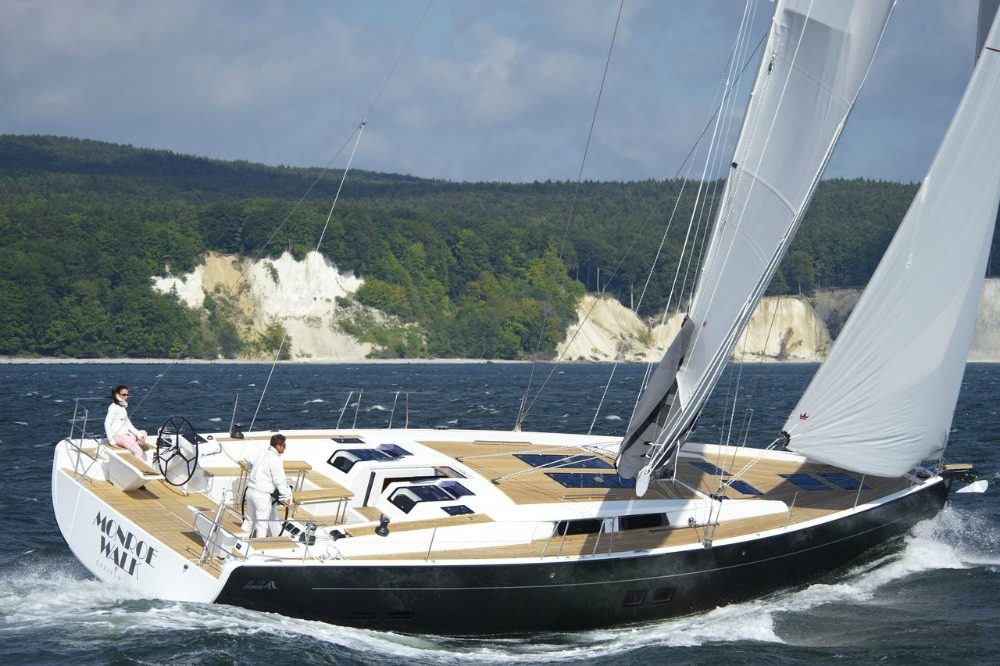
" The Hanse 575 is my favourite TYW yacht hands down! It is a luxury boat with coveted air conditioning. You have lots of room both up top for tanning and relaxing and down below so you don’t feel too cramped. The best part is that the Hanse can really send it sailing with good winds. Total best of all worlds scenario. " - Megan Whyte

" My favourite TYW yacht is the Bali 4.1 catamaran, mostly because of the vast living space it had both inside and out. The large dining area makes for sociable mealtimes without sacrificing sun lounging and dancing space out on deck! " - Cara Louise Whiteman
Share this post
Excited and ready to go?
Save your summer and sign up
We promise not to spam you

Catamaran Or Monohull? 27 Important Facts (Explained)
Catamarans and monohull boats are two very different kinds of vessels. Each craft offers distinct advantages and disadvantages that you’ll want to consider before choosing between the two.
In this post, we’ll go over some of the important things to consider when choosing between catamarans and monohull boats:
Table of Contents
Cost & Availability
Both catamarans and monohull boats come in small recreational sailing versions, larger motorboat versions, and larger sailing models. In all cases, the catamarans will cost more and will be harder to find.
The reason catamarans are harder to find because there are not as many of them, and they’re mostly made overseas.
Also, there aren’t as many catamaran manufacturers, so sailors have fewer options when buying them.
On top of this, catamarans have only recently become popular in the United States and other areas of the developed world. This means the used market for boats doesn’t have as many catamarans on it. You might find that you have fewer options when making a used catamaran purchase, which could bring costs up to a premium.
Two Times The Fun with Catamarans

Another reason that catamarans are more expensive than monohulls is the fact that catamaran buyers have to purchase two hulls, two engines, and two of all of the components that help make an engine work.
Traditional sailboats and large powerboats with one engine don’t have this cost issue.
On top of this, a catamaran is much wider than a monohull, and thus you have more space to build and equip.
On the other hand, once you’ve purchased the boat, you do get to enjoy the benefits of having two of everything. We’ll talk about the advantages of this further down in this post.
Maintenance Cost Makes A Difference
The maintenance on a catamaran is also more expensive than the maintenance on a monohull boat. This goes back to the fact that there is twice as much of everything to maintain.
Catamaran owners will need to do preventative maintenance on two different engines, and they’ll have two hulls and a large deck area to clean and maintain as well. If they’re getting the bottom of the boat treated, they’ll have to do this twice (once for each hull).
Even the interior components can usually be found twice.
Each cabin will usually have a head in it, so you’ll have at least two toilets and sinks to maintain, which obviously has its plusses and minuses.
One positive aspect of this is that catamaran owners do have the option of deferring some of their maintenance. For example, if one head is no longer functioning properly, you always have the second one that you can use.
It also adds a bit of safety as well.
This is because while the catamaran does have two engines to maintain, the owner does have power even if one of the engines happens to go down.
Some catamaran owners also like to point out that maintenance may not have to be done as frequently. This is because the engines don’t have to work quite as hard, and other items like additional bathrooms and sinks might only be used half as much.
How Much Space Do You Need?

A catamaran has more space than a monohull. This is because the boat is wider, and it has a much larger deck area. It also has twice as many hulls, so you have more overall space between the two of them.
The additional space is great for people looking to throw parties on their boats.
Most boat owners would agree that the catamaran is usually the party boat of choice at the docks.
Even if you aren’t into throwing parties, the extra space can still be nice for relaxing on the deck or getting a suntan. The wide-open space also makes it easy to use the boat as a fishing platform.
Additionally, you have more space for stuff like surfboards, rafts, and other items that can easily clutter up the deck of a monohull. Even fishing can be easier from a catamaran as the deck provides plenty of space between different anglers.
Catamaran owners also have additional space for carrying fresh water and adding generators and solar panels.
Interior space is generally more plentiful on a catamaran, and luxury catamarans have an easier time fitting large items like washers and dryers inside of them. You can have these on larger monohulls as well, but it will be harder to make them fit than it is in a catamaran.
On the other hand, all of the additional space means the catamaran owner has more space to maintain and clean. Also, all of the additional items that can be brought onto the boat will make it heavier. A heavier boat will use more fuel, and it will travel more slowly.
Living Quarters Vary Between The Two
The living quarters on a catamaran are much different than they are on a monohull. Most people would agree that the berths in a monohull are much more spacious than in a catamaran.
A monohull offers people the opportunity to have a large bed with space on either side to walk around it. This is great for couples who want to get out of bed without waking up their partner.
Catamarans, on the other hand, have the advantage of being able to offer large above-deck salon areas. The galleys, the dining areas, and the living areas can all be above-deck, while the two hulls can provide heads and berths.
Some boat owners say that living in a monohull is akin to living in a basement apartment . Other boat owners prefer the monohull because it brings them closer to the water and gives them the feeling of being at sea.
Privacy Can Be Prioritized On Catamarans
A catamaran offers up many different living areas that people can take advantage of. For example, each hull will typically have its own bathroom and bedroom.
This gives each sleeping area complete privacy from the other.
The living quarters are usually up on the deck, so early risers can wake up and move to these quarters without waking up the others.
The same holds for night owls. A night owl can stay up late without bothering the people who want to retire to their beds earlier.
With two hulls, large catamaran owners can hire a crew and give them their own hull to live in so that there is separation between the cruisers and the crew. This is a wonderful advantage for honeymooners looking to have their own space.
The downside to all of this, of course, is that sometimes a family may not want the additional privacy. For example, a family with small children might not want their children in a different hull than they are.
Additionally, the extra privacy can make it hard for people on the boat to communicate. This could become a big problem in the event of an emergency.
For this reason, it is often recommended that each hull have a radio in it so that the occupants can quickly communicate with each other. Remember, even in inland areas, cell phone reception may not be very good inside the boat hulls.
Recreation In a Monohull vs. a Catamaran
Most sailors agree that sailing a monohull boat is much more exhilarating than sailing a catamaran. Traditional sailboats heel, and sailors get instant feedback while they’re sailing. For the most part, catamarans stay stable, and you don’t get the same feeling with the movement of the wind and the water.
When it comes to monohull powerboats, you have the advantage of being able to pull water skiers, kneeboarders, and tubers with ease, as long as the boat has the power and a planing hull. A power catamaran usually doesn’t have the speed or maneuverability to pull off these recreational opportunities because they are displacement hull designs.
Catamarans excel in more leisurely recreational activities. A catamaran makes a great party deck as well as a great cruising deck. Catamaran owners can comfortably walk around a catamaran without having to worry that the boat might knock them over the next time it decides to heel. This allows boaters to sit and talk with one another comfortably.
A catamaran can also be used as a beaching vessel. This makes it a great platform for people looking to go swimming or fishing around sand bars and other shallow water areas. It also makes it a great boat for sailors looking to sail a larger boat on a river or lake known for having shallow areas.
Swimming and Diving
Swimming and diving off of a catamaran are usually much easier than doing the same from a monohull. The wide stance of the two hulls offers boat designers the option to put in staircases at the back of both hulls.
In between these staircases, some boats will have an additional diving platform and/or a dedicated frame for pieces of equipment and dinghy storage. This makes catamarans great for swimmers, snorkelers, and divers.
On the other hand, modern monohull sailboats can also have good transom stairs for easy access to the dinghy and swimming. Both types of boats can easily travel far out to sea, giving boaters the option of diving in areas that can’t be accessed from beaches and developed areas.
Boat Draft In Shallow Waters
For the uninitiated, the boat’s draft refers to how deep the boat’s hull sits within the water.
A monohull typically sits deep within the water, while a catamaran sits much higher on the water. This is why we stated that a catamaran is good for shallow waters.
The advantage of having a boat that can go into shallow waters isn’t restricted to just recreational activities like swimming and fishing. A boat that can go into shallow water is safer to operate in areas where a boat with a deeper draft might become damaged.
Additionally, a catamaran has more stability on calm waters. This helps make a catamaran more comfortable to relax or sleep on while at anchor or the dock.
The deeper draft of a monohull boat has its advantages as well. A deeper draft provides more stability in rough waters and allows a boat to go further into the sea.
For this reason, many coastal cruisers will prefer catamarans, while many ocean voyagers will prefer monohull boats. In fact, some areas of the Caribbean and the Florida Keys can be off-limits to boats with deep drafts as it simply isn’t safe for the boat to navigate these waters.
This isn’t to say that you can’t navigate these waters in a monohull boat, but you will have to be cautious depending on how deep your monohull’s boat draft is. You wouldn’t have this issue in a catamaran.
Stability On The Sea

A catamaran offers a lot more stability in shallow waters, in calm waters, at the dock, and anchorage. This makes the boat great for cruising and for relaxing in port.
A monohull offers a lot more stability in rough waters.
This makes this boat great for heading out to sea and for navigating vast distances.
Safety Issues To Consider
Both catamarans and monohulls can be built to navigate the waters they were made for safely. This will be determined more by the boat’s category designation rather than the type of boat.
However, each boat deals with unsafe situations in different ways. For instance, a monohull boat is likely to right itself if it is capsized.
This means that even in rough seas, you’re unlikely to find yourself permanently capsized.
The downside to this is that should you become completely swamped from a capsize in a monohull boat, you are much more likely to sink. In fact, if there is a hull breach on a monohull boat, your boat could sink.
Catamarans are said to be unsinkable. This isn’t completely true, but it is very unlikely that a catamaran will sink. Even if a hull is breached, you still have a second hull to keep the catamaran afloat.
However, a catamaran can’t right itself. If you capsize your catamaran, it will stay capsized.
One other safety concern to consider is that a monohull sailboat will heel while a catamaran will not. This increases the chances that someone could fall off the boat or onto the deck in a monohull boat.
Catamarans Are Faster Than Monohull Boats
A catamaran is faster than the average monohull boat.
This is because they face less water resistance, and their narrow hulls don’t have to deal with their own bow waves as a monohull does.
Of course, catamarans aren’t always faster. Old cruising catamarans may not go faster than 8 knots, and modern monohulls can exceed 10 knots.
Monohull boats tend to sail downwind and in choppy seas better than catamarans. This gives them a speed advantage during ocean voyages.
We have a separate post with complete average speeds per type of catemaran . It’s a must read if you are at all concerned about speed!
Fuel Consumption Considerations
Catamarans have two engines to burn fuel, which can drive up fuel costs.
However, a catamaran is lighter on the water, so it usually takes less energy to move a catamaran. This means you’ll end up using less fuel in a catamaran than you would in a monohull.
On top of this, catamarans can decide to use just one engine in low wind areas. This further decreases the amount of fuel that a catamaran consumes.
These rules only apply to calm waters.
A monohull navigates waters with high waves and strong winds much more efficiently than a catamaran. In this case, you’ll use less fuel in a monohull than you would in a catamaran.
Sailing Differences To Notice
Sailing a monohull boat can be exhilarating. These boats can glide through choppy waters, and you get to feel the motion of the boat as the sea rushes by the cockpit and the wind causes you to heel.
This type of sailing also provides instant feedback as you’ll know what you need to do with the sails as you’ll feel what is going on through the boat’s motion.
Sailors all over the world have been using monohull sailboats for years, and you’ll find plenty of outlets for recreational sailing with a monohull sailboat.
Sailing catamarans do not heel like a monohull sailboat.
These boats, therefore, do not provide the sailor with instant feedback. Also, if you incorrectly sail a catamaran, you do risk capsizing the boat more easily.
Training Can Be Quite Hard
Sailing a catamaran and sailing a monohull boat are two different experiences. People looking to sail either should probably get professional training.
Obtaining this training will always be easier with a monohull boat.
This is because monohulls are more popular, so you’ll have more instructors available to you.
Do You (Or Your Friends) Get Seasick?
People who are prone to getting seasick easily might want to consider a catamaran. A catamaran provides much more stability in calm waters, and you get a lot less movement.
On the other hand, people who are not prone to getting seasick might prefer a monohull in choppy waters.
This is because a monohull will deal with deep and choppy waters with high waves much better than a catamaran will.
As a result, a catamarans movement can seem extreme under these types of conditions. People who have never gotten seasick before can end up sick under these conditions.
Here’s a separate article we wrote with everything you should know about seasickness on Catamarans . There are some things you can do and some things you should know!
Docking Is (Usually) Easier With A Monohull Boat
Docking a catamaran can be a difficult endeavor.
This is because catamarans are often too wide to be docked within the slips located in central areas of a marina.
Because of this, they need to be docked at the end of the dock. This leaves them with fewer spots to dock. It also makes docking more expensive.
Catamaran owners traveling through areas that are unlikely to have many catamarans in them may find it difficult to find a dock at all. This is true in areas of the northern Atlantic where monohulls are much more popular than catamarans.
Storage Issues To Consider
Even storing a catamaran can be more difficult. This is because storage facilities often do not have the equipment to get a catamaran out of the water.
The wide width of these boats requires special lifts, and not all boat marinas will have them.
Storage facilities that do get the catamaran out of the water will often charge more money for it. They’ll charge additional fees for taking the catamaran out of the water, and they’ll charge additional fees for the actual storage of the boat as well.
Redundancy And Backup Equipment
We touched upon this earlier, but it is worth repeating that catamarans have many redundancy built into them. This can be a big advantage when it comes to safety.
For example, if one rudder becomes inoperable, the boat can still be steered with the other one. If one engine becomes inoperable, the boat can still be driven with the other one.
In extreme cases, a hull could become damaged, and you could still stay afloat because the other hull will keep the boat safely above water. These safety advantages can save lives and keep people from becoming stranded out at sea.
The primary downside is the maintenance issue that we mentioned earlier. All of these redundant components will need to be maintained. As a result, maintenance costs will be close to twice as expensive in a catamaran.
Cooking Is Easier On Catamarans

Cooking on a catamaran is usually easier than it is on a monohull. The main reason for this is that a catamaran doesn’t heel like a monohull, so you don’t have to worry as much about things falling over.
This not only makes cooking easier, but it makes cooking safer as well.
Additionally, catamaran galleys tend to have more space in them to move around. Also, they are often up on the deck, so you don’t have to climb in and out of the hull with your dinner in hand.
Dinghy Storage
Monohulls and catamarans can both hold dinghies. The larger the boat, the larger the dinghy can be.
However, catamarans have a wide area at the rear of the boat that is perfect for holding dinghies.
This makes getting in and out of the dinghy easier. Also, people can often have larger dinghies on their catamarans because the boat’s stern is so accommodating.
Power Generation Is Easy On A Catamaran
A catamaran has a lot of space for solar panels and wind turbines. Rigid panels can be placed in areas that won’t be walked on, like overtop of the bimini, and flexible panels can be placed in areas where the panels might end up getting stepped on.
The width of a catamaran even gives them more opportunities to put hydro generators into the water.
This means catamarans can generate more power than the average monohull boat can generate.
On the other hand, a monohull usually has less powered items to worry about. Monohulls need less power to operate at full capacity, so you may not need all of the additional space for generating power.
Ventilation Issues To Think About
Some people feel that monohull boats don’t offer enough ventilation. This is especially true in warmer areas of the world.
Catamarans also lack ventilation within their hulls, but fortunately for them, much of the living space is located up on deck. This gives catamarans an edge when it comes to cruising in warm weather.
On the other hand, monohull owners aren’t exposed to the cold winds that you might find up on deck in harsher climates.
This lack of airflow may actually be of benefit in this instance.
Some people find monohulls to be better looking than catamarans and vice versa.
This all comes down to personal preference, so you’ll have to decide for yourself which type of boat has the advantage in this case.
Some people think catamarans are the most elegant thing in the world while others prefer monohull boats as they look more classic.
Resale Value Is An Important Factor
If you read our extensive guide to boat depreciation per boat type , you know that no matter what boat you buy, it will always go down in value. This is just a sad fact of boat ownership that people need to consider before buying a boat.
Many factors go into how much you’ll be able to get for your boat when you resell it. These factors are the condition of the boat, the age of the boat, and the economy in general. For example, people are less likely to want to buy boats during a recession. This is especially true when it comes to smaller boats.
However, one additional factor that catamaran owners need to consider when thinking about resale value is the value of the dollar.
People from the United States don’t have many American catamarans to choose from and will usually need to buy these overseas.
This means that a catamaran will be less expensive to buy when the dollar is strong compared to the Euro and more expensive to buy when the dollar is weaker in comparison. This will affect the used market as well because higher values on new catamarans can help to bring up the value on the used market.
With a monohull boat, you may not have to consider situations like this as there are makers of monohull boats all over the world.
Don’t Let The Length Trick You!
One thought to keep in mind when comparing monohull boats and catamarans is that their different shapes account for different space advantages.
For example, a 40-foot long catamaran will have much more cubic space than a 40-foot long monohull.
Because of this, when comparing boats, you should look at the cubic space rather than the length. In this case, you may be comparing a 48-foot long monohull with a 40-foot long catamaran.
When you compare the two types of boats in this manner, the price differences aren’t quite as large, and the comparison is fairer. It also may make the operating and maintenance costs more similar.
This is an important distinction to make because the length of the boats can trick you!
Consider Trying Both (Before Buying)
Boats can be an expensive purchase, so it makes sense to try them out before you decide to make your purchase.
Rent each type of boat and use it on the types of waters that you intend to cruise on the most.
Try the boat out in different weather conditions as well, and don’t be afraid to do multiple rentals before you make your final choice. The time and money invested into making sure you get the boat you really want will be more than worth it in the end.
Click to share...
- Articles and Guides
Catamaran vs Trimaran: Choosing the Perfect Multihull Vessel
26th mar 2023 by toi williams.

The debate over whether catamarans or trimarans are better boats has been going on for a long time without resolution, but the reason is understandable. The truth is that despite their many similarities, catamarans and trimarans have distinct characteristics that set them apart from each other, so each type of vessel offers a distinct boating experience. The catamaran vs. trimaran debate largely boils down to personal preference and how you intend to use the boat. Here are some of the things you need to consider when choosing between a catamaran and a trimaran.
What Is a Catamaran?
A catamaran is a multi-hulled boat that has two twin hulls connected by a structure supported by a wide beam. Catamarans come in a wide variety of sizes, ranging from small rowing boats to large boats that are big enough to be used as car ferries. The structure connecting the two hulls can be anything from a simple frame with webbing to a superstructure that includes cabin and/or cargo space. Most of the recreational catamarans for sale are designed to hold two to 20 passengers.

What Is a Trimaran?
A trimaran is also a multi-hulled boat, but it has three hulls instead of two like the catamaran. The middle (main) hull is larger than the two small outer hulls attached to it. These hulls are connected by a lateral beam, wing, or some other form of superstructure, depending on the model. These types of boats also come in a wide variety of sizes, ranging from recreational yachts to ferries.

Advantages of Catamaran vs. Trimaran
The advantages of catamarans vs. trimarans are mainly based on comfort. Catamarans are spacious boats, known for their large living quarters with plenty of room on board for hosting gatherings and parties. Their popularity has enticed many boat builders to create increasingly luxurious designs on larger and larger boats. The catamaran also has a more classic style that appeals to those who want a boat with a simple, sleek shape. Catamarans are best suited for boating in calm seas, lagoons, and shallow waters.
Advantages of Trimaran vs. Catamaran
The advantages of trimarans vs. catamarans mainly come down to speed. Trimarans are among the speediest boats available, offering lightning-fast speeds on open waters. Many recent winners of notable boating competitions have been won by boaters piloting trimarans. These boats also perform well when heading upwind and are remarkably stable with their three-hulled design. The anchoring gear is installed on the main hull and is easy to deploy.
Trimaran vs. Catamaran Speed
In the trimaran vs. catamaran speed debate, the trimaran is the clear winner. For long offshore races, trimarans have become the preferred vessels, and boaters piloting trimarans have won the Jules Verne Trophy in every race held since 2010. This is because of their unique design, which has speed and safety qualities that provide significant benefits for boaters.
The trimaran's third hull makes the boat considerably faster than any other hull form due to the correlation between the boat’s waterline length and its speed. Having more hull distance in the water lets the boat reach higher speeds. Trimarans can also be pushed harder and are more forgiving than other boat styles in racing environments.
That doesn't mean that catamarans are slow. Some styles of catamarans are capable of breaking world records when the boating conditions are right. On downwind runs, a racing catamaran may be quicker than a trimaran, but for overall speed in various conditions, the trimaran comes out on top.
Catamaran vs. Trimaran Performance
In the catamaran vs. trimaran performance debate, both sides have their advantages. A catamaran is easier to handle and maneuver with the boater having to handle the lines and halyards less often. However, this ease comes at the expense of speed, with cruising catamarans generally traveling slower than comparable trimarans.
Trimarans are more versatile in their performance, and they perform better than a catamaran when traveling against the current or the wind. Trimarans can be used in nearly all weather conditions, are less vulnerable to drifting, and have less roll motion than a catamaran. However, handling a trimaran requires more work than handling a catamaran, which can be exhausting over long periods of sailing.
Trimaran vs. Catamaran Efficiency
When comparing trimaran vs. catamaran efficiency, the differences are minimal. Multi-hulled boats are more fuel-efficient than comparable mono-hulled boats due to their hull forms and their lighter weights. Multi-hulled boats also tend to have smaller displacement and shallower drafts than other boat styles.
The biggest difference in trimaran vs. catamaran efficiency is that catamarans nearly always have twin engines while trimarans generally run with one engine. A trimaran also has less hydrodynamic resistance than a catamaran because it spreads out the displacement across three hulls instead of two. This allows each hull to be narrower and more streamlined.

Catamaran vs. Trimaran Stability
The stability of multi-hulled boats is one of their biggest advantages over mono-hulled vessels. Multi-hulled boats benefit greatly from their wider stance on the water, and their wide beams and floats offer higher stability than a ballasted keel. Multi-hulled boats are also more buoyant because their floats help prevent immersion. When comparing catamaran vs. trimaran stability, the better boat will depend on the conditions on the water.
A catamaran's geometrically stabilized design reduces both heeling and wave-induced motion, providing a stable platform underway and at anchor. However, the catamaran's design is not as suitable for navigating heavy seas as the trimaran's build. The trimaran's three hulls provide excellent stability even in rough waves, but this can also make a trimaran less comfortable than a catamaran when the water is calm.
Catamaran vs. Trimaran Safety
Both catamarans and trimarans are considered to be safer on the water than mono-hulled boats. A catamaran has superior resilience and roll inertia that makes capsizing extremely unlikely. Its speed, steadiness, and ease of motion due to a lack of ballast also contribute to increased safety.
Trimarans are considered the safest multi-hulled boats because their three-hulled design makes them almost unsinkable. Many also have a core made of high buoyancy foam, helping them stay afloat even in the most brutal storms. Weight centering and a complete anti-drift scheme also make the boat safer for everyone aboard.
Trimaran vs. Catamaran Maintenance
Comparing trimaran vs. catamaran maintenance costs shows that many of the costs will be very similar for both types of boats. These costs include yearly boat service and repairs, annual haul-outs, and insurance coverage but exclude major upgrades. You will also have to budget for dockage, winterization, and storage for each year if you don't intend to use the boat year-round.
Boaters are advised to budget between 5% and 10% of the boat's value for annual maintenance costs if their boat is less than five years old and a little more if the boat is older than that. Different maintenance jobs can be charged in different ways. Sometimes, the charges are based on the length of the boat while other charges are based on the number of hours worked.

Catamaran vs. Trimaran Cost
If you are looking for an affordable seafaring vessel, catamarans and trimaran are both good choices. There are many reasonably priced catamarans and trimarans suited for families as well as other models that provide more luxury for an additional cost. The materials that the manufacturer used to build the boat and the electronics included will also impact the price of the boat.
With so many different factors impacting the cost of different boats, you should choose the best vessel for you based on the features you want as well as your budget. Doing some research using the information on Rightboat's listings will help you find the right combination of quality and affordability you are looking for. Because we offer both new and used boats, nearly any boater will be able to find a boat in our listings that fits their needs.
Choosing between a catamaran and a trimaran may seem simple at first, but the different sizes, styles, and amenities offered can make the choice much more complicated than you would think. If you prefer comfort and ample space while cruising, a catamaran may be the better choice. However, if you like speeding across the water and enjoy the thrill of racing, then a trimaran may be your best option.
Whichever boat you decide to purchase should fit your specific circumstances and requirements. Start the decision-making process by deciding what the primary use for your new boat will be. Will it be used more for family cruising or sport fishing? What bodies of water will you be boating in? Are you planning on staying close to shore or taking the boat into deeper waters? All these factors will impact whether you should choose a catamaran or a trimaran.
With Rightboat's listings, you can learn about the features of the latest catamaran and trimaran models and see what you can expect to pay for the boats you are considering. You can sort through our listings by price, age of the boat, length of the boat, or listing date and then narrow down the results of a search using the rest of our filtering tools. If you are interested in buying a new or used catamaran or trimaran, take a look at our listings, and see what we have to offer today!
Related article: Ketch vs Yawl
Written By: Toi Williams
More from: Toi Williams
Related Articles and Guides
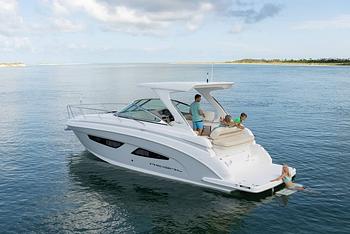
6th Sep 2024
The Best Mini Yacht Brands for Cruising and Luxury
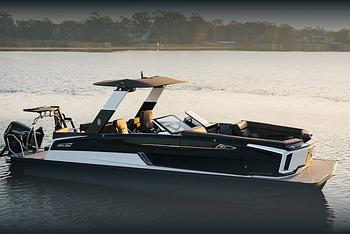
16th Aug 2024
Best Luxury Pontoon Boat Brands Have it All: Glamor, Speed, Fishing, Waterslides...
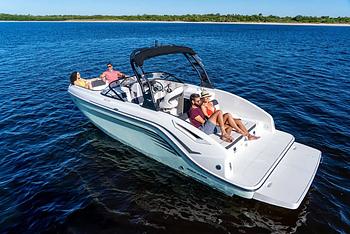
10th Aug 2024
Deck Boat vs. Bowrider: Which Runabout is Best?

19th Jul 2024
The World’s Best Yacht Brands

- Explore Rightboat
- Boats for Sale
- Boating Articles
- Buyers Guide
- About RightBoat
- Sell Your Boat
- Boat Selling Advice
- All manufacturers
- All categories
- Are you a broker/dealer?
- Learn more about the Rightboat:HUB
Enter your email to keep up to date with the latest news
Join for free
Sign up now for free and discover how easy it is to keep up to date with THE latest boats for sale. Find your right boat, and tailor your voyage to finding your next boat.
Benefits of becoming a member:
- Set up tailored alerts
- Personalise your experience
- Download full specifications and broker details
- Keep tabs on your favourite boats
Are you a broker? Join as a Broker
Rightboat - join for free.
Do you have an account already? Login
Save this search
Save your search and receive new boats in your email..
You can unsubscribe from your alerts whenever you like. By pressing the button you accept the Legal Terms and conditions
Yachting World
- Digital Edition

Best catamaran and multihull: We sail the very best yachts on two and three hulls
- Toby Hodges
- March 20, 2024
Toby Hodges takes a look at all the nominees and the winner of the best catamaran and multihull category in the much-anticipated European Yacht of the Year Awards
There are many categories in the European Yacht of the Year awards, from the best luxury yachts and performance yachts to the best yachts for families and event a best specialist yacht category. But with multihulls rapidly increasing in popularity, the best catamaran and multihull category was possibly the most hotly anticipated.
The small number of entrants in this category in no way reflects the rich range or huge demand for multihulls. Many new models were launched by the big yards in the preceding years and they’re struggling to keep up with bulging order books.
However, these three shortlisted represented a choice pick of the latest fast cruisers and each, in their own very different ways, are responding to this insatiable demand for high end space and pace cruising.
Best catamaran and multihull
Best catamaran and multihull winner 2024 – outremer 52.
My highlight test of 2023? Sailing this Outremer 52 for 200 miles over two days and nights! Quite how such a large vessel, one that is capable of doing laps of the planet in true comfort, is also capable of providing such enjoyable sailing is the secret sauce that helps scoop this prize.
And it was pushed hard for this award by the disruptive HH. But the Outremer is such a well rounded, measured and thought out yacht for bluewater cruising at a reliable speed – it’s the full package, a dream boat for family bluewater sailing and arguably the French yard’s best and most refined model to date.
Designer VPLP was tasked with replacing the popular and well proven 51 with more comfort and stowage, while maintaining the performance. It says it took the best of the 55 (which won this award two years ago), and the best of the 51’s deck plan to create this 52. The result means too many good features to point out here, from the variety of helm positions, including a completely protected position inboard using the swing pedestal, to the well conceived spaces. I’d therefore recommend reading our full test report online or in YW’s June 2023 issue!
Neel continues to enjoy its cruising trimaran niche, using the wow factor of bridgedeck accommodation combined with the type of sailing enjoyment and feedback monohull sailors appreciate.
The impressive lightwind performance and direct feel of a Neel I am used to. But I don’t think I’ve ever been so surprised by the amount of cabins or space as I was on this 52. It’s available with four to six cabins plus the option for two crew cabins aft! Some of this maze works well, other areas, such as the forward cabins in the main hull not quite so well. Horizon and rig sightlines and some finishing also leaves room for improvement.
The HH44 seemingly manages to achieve the space and pace balance in a compact 45ft package, while also being one of the most innovative and exciting new production yachts I have sailed. From its looks to layout, to practical on deck solutions such as swing pedestals, side gates through the bulwarks and transom gates that double as swim platforms and boost cockpit security, it’s packed with fresh thinking.
And on the subject of ‘fresh’, the natural ventilation encouraged into the yacht through those massive forward facing coachroof windows which open – a feat made possible thanks to a stiff carbon composite structure – negates any aircon requirements.
With its deep carbon boards and tall carbon rig the HH44 is a powerful, reactive animal to sail. However, it’s the incorporation of the first parallel hybrid electric drive units which really makes this high tech high performance cat stand out. The electric motors are attached to the aft end of conventional diesel engines, not only providing silent power, but renewable energy through regenerative drives while sailing.
Best catamaran and multihull 2023
Best catamaran winner – nautitech 44.
If the very best catamaran delivers the ideal comfort to performance compromise, here’s a catamaran that seems to strike the perfect balance.
For those who cite a lack of visibility and protection as reasons not to choose this aft helm route, try sailing this first – direct steering brings so much more helming pleasure that you get the enjoyable feeling and communication more associated with a monohull. The attention to keeping weight low and central, vacuum infused vinylester build and a low coachroof and boom all aid this performance. The fine entry Lombard-designed hulls allowed us to properly point upwind at 8 knots (in 13), but it was the hands-on steering sensation that really stayed with me.
While there’s no real inside/outside boundary – the saloon bridges both – the Chedal-Anglay interior design works well. It is not as voluminous as some, but is certainly enough to be smugly comfortable at anchor, finished to a good quality, with walnut Alpi trim as standard. The layout option for a ‘smart room’ office/laundry/bunk room or stowage cabin is indeed really smart.
Out of all the multihulls nominated or sailed last year, this cat impressed me the most under sail. It’s the ideal size to go distance sailing, with good performance, low draught and space for family and friends. It had me dreaming.
Balance 482
I was drawn to the Balance 482, thanks to the combination of good looking modern design, high average speeds and, chiefly, the profusion of clever thinking and practical ideas that it brings. The South African build uses a foam core with E-glass laminate and cored furniture for a light weight of 11.3 tonnes, but also with the ability to take a generous payload.
An electric furler option combined with screecher sail helps offer effortless handling and fun sailing, although the 482 prefers a breeze in the double figures. Smart options such as load cells on the rigging, a bowsprit camera to monitor the anchor chain, plus engine room and mast cams all help for maintaining vigilance. Other features we like include the solar panels properly installed on raised brackets, raincatchers built into the coachroof, and how all sheets and lines are led to the helm station. But the prize solution is the VersaHelm, which allows you to swing the wheel inboard, close off the helm station, and stand watch and steer from a fully protected position.
Catana Ocean Class
The Catana Ocean Class is a bulky model which is geared more towards creature comforts than the higher performance of its predecessors. That said, it uses carbon in the structure and roof, foam cored furniture, the tanks are mounted low in the hulls and it has daggerboards and fine entry bows. The weight savings help it offer a massive 5.5 tonne cruising payload, plus there’s capacious stowage and large tank, refrigeration and laundry capacity.
Positioned between Lagoon and Outremer, the Catana echoes a bit of its sister brand Bali’s concept with its internal cockpit-cum-saloon layout while providing good ventilation via large sliding doors and opening windows. We liked how it’s easy to handle solo from one helm station, including the electric remote control of the boards, plus the layout of the galley and navstation.
Those chasing speed and helming pleasure should perhaps look to the C-Cat 48, as it’s as close to helming a fast monohull as a cruising cat is likely to get and one of the rare times we enjoyed sailing upwind in light breezes on a multihull! This is largely thanks to a lightweight, stiff build – the Comar yard has managed to save 1.7 tonnes over the first boat (9.5 tonnes light) and increased the draught of the curved daggerboards to 2.95m.
A carbon roof and rig comes as standard, as well as an epoxy hull, full carbon deck, bulkheads and compression beam. It is a little quirky with comparatively small volumes, but this François Perus design will outperform most other performance cats and monohulls of a similar length.
The Excess 14 shares that direct sensation you get from aft helms and some of the performance of the C-Cat, but in a more balanced, voluminous layout for cruising. The Excess 14 benefits from the research of VPLP’s Vannes racing office, where attention was focused on weight reduction, with savings particularly in furniture, on improved stiffness (PET foam cored sandwich for main structural bulkheads), and the efficiency of deeper fixed keels.
The result is telling on the water, as it should be for any best catamaran contender, where you can log easy miles: we clocked late 7s upwind, reached in the late 8s and regularly averaged 9 knots with gennaker in 12-15 knots. Clear glass windows give acceptable visibility from the helms through the coachroof and the comparatively minimalist interior. In short it offers a good mix of volume, reasonable performance and enjoyable sailing – see our full review last month.
Sailing performance was another key facet in the battle of the big cats from the big cat yards, Lagoon and Fountaine Pajot. Both models offer luxurious amounts of space for home from home comfort, as watersports bases for long term cruising.
The decision to push the mast to the front of the coachroof to allow for a larger genoa than its recent preference for self-tacking jibs has paid off on the Lagoon 51. It helped us sail efficiently into the waves (albeit not pointing too high) before clocking double figures reaching with the code sail in 15 knots.
The Lagoon’s large flybridge with dual access is a USP at this size that will be a hit or miss deal breaker for many. The 51 offers unrivalled accommodation volume in three, four or six cabins, and relaxation zones, and good circulation through these big spaces. Once again the jury applauds Lagoon for thoroughly testing the prototype model during a six month tour. Over 100 have already sold.
We saw in our December issue how the experienced owners of the Fountaine Pajot test boat choose to live and work full time aboard their Aura 51. It’s a design that promotes space, enough to take friends, family and crucially for them, all the toys to enjoy at anchor. Its capability of averaging 8-10 knots also appeals, although the single side helm and hydraulic steering result in scant connection to the sailing in light winds (the same applies to the Lagoon).
The fact the yard already offers this in a hybrid version and has an electric and hydrogen model in the pipeline could sway some, but the decision between the FP and the Lagoon will likely come down to preference between a central flybridge or offset bulkhead helm together with interior design and layout.
If you enjoyed this….
Yachting World is the world’s leading magazine for bluewater cruisers and offshore sailors. Every month we have inspirational adventures and practical features to help you realise your sailing dreams. Build your knowledge with a subscription delivered to your door. See our latest offers and save at least 30% off the cover price.
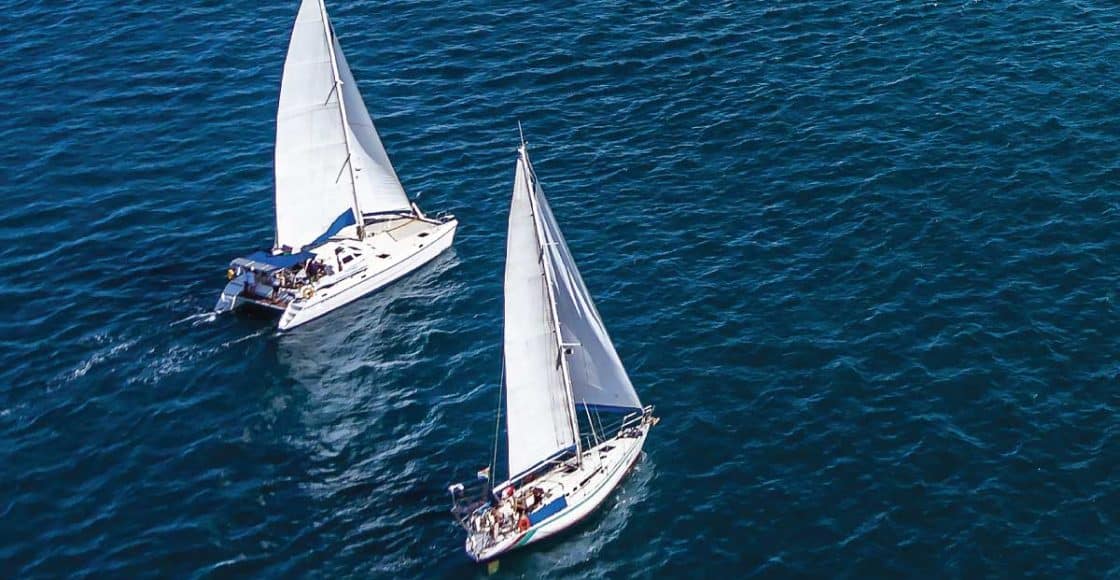
Catamaran vs. Monohull: Which Is Better?

Table of Contents
Last Updated on September 1, 2023 by Boatsetter Team
It used to be that sailors and powerboaters (blowboaters and stinkpotters, respectively) used to hold the loudest arguments about which was better– sailboats or powerboats. Today, the debate is centered around catamarans and monohulls— how many hulls are best? Is there a best?
Let’s look at what each boat offers— and continue to read for all Pro Boatsetter Tips .
Got a boat? Put it to work
The benefits of catamarans
Spacious for large crews, easier on your body, shallow drafts, safety system in case of emergencies.
Pro Boatsetter Tip: Did you know catamarans have seen a great surge in popularity over the last decade?
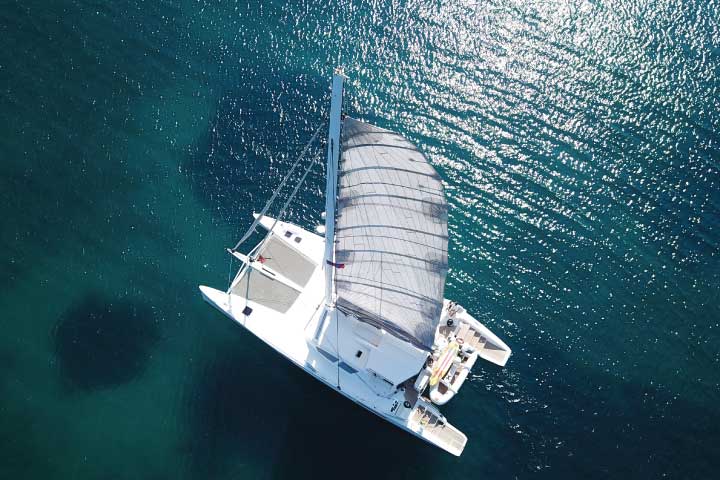
If you’ve got a large crew or plan on throwing parties aboard, you’ll probably benefit from the catamaran’s (also known as “cats”) roominess. Cats offer separation on deck with the aft cockpit , forward lounge or trampoline, and maybe even a flybridge .
Inside, cats have cabins and multiple heads for convenience. A cat of a given length (let’s say 40 feet) has 1.25 x the space of the same length monohull. In other words, it feels the same as a 50-foot monohull. It’s also usually laid out in a more user-friendly manner.
Cats have two hulls, making walking easier for kids, older folks, and pets! Because of its steadiness, you and your crew are less likely to be fatigued by the end of your boat trip. Maybe stay out longer to catch more fish.
Best of all, you’re less likely to feel seasickness because they don’t feel “on their ear” even when sailing in high winds and rough conditions. Not to mention, they’re much easier to sleep on.
Most sailing catamarans have a shallow draft perfect for skinny water cruising like the Chesapeake Bay and Florida. They can venture into areas previously off-limits to deep-draft monohull sailboats.
Most cats have double the systems, including bilge pumps, freshwater pumps, showers, heads, engines, etc. This means if one system fails, you’ve got a backup!
Twin screws also offer easier docking and increased maneuverability. It’s much easier to drive a large sailing cat than a single-engine monohull, especially in a cross-breeze and when docking, backing, or maneuvering in tight quarters.
The benefits of monohulls
- Performance
- Easy cruising
- Familiarity
- Availability & expense
Pro Boat Type Tip: Operating a monohull can be challenging! If this is your first time sailing on a monohull , make sure to rent with one of our pro captains.
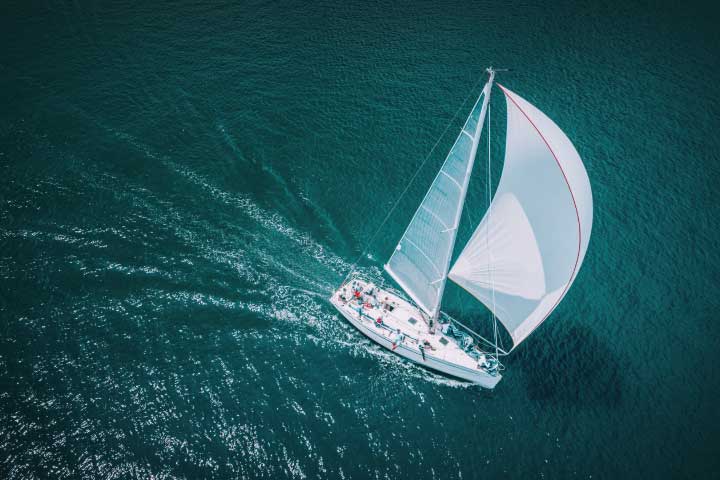
Competitive performer
If you want to win a sailboat race, use a monohull. This boat’s design makes it a favorable contender even when weather conditions are working against you.
Let’s add a caveat here for cruising under power– cats tend to be more fuel efficient because they’re lighter and they’re not dragging a heavy keel through the water.
Easier motion
Monohull sailboats have their own groove. This motion is predictable and distinguishable by pro sailors. Cats, on the other hand, depend on the body of water’s condition state. Also, cats pound when going upwind into big seas if their bridge deck is pummeled by waves, while monohulls tend to slice through the waves.
Familiar handling
Monohulls have been around for centuries, and chances are that you learned to sail or powerboat on one, so their handling is more familiar. A cat’s dimensions may seem intimidating at first, especially if you are short-handed.
Availability & cost
Monohulls are more available, especially for rent. There are simply more of them. They’re also usually less expensive to rent and less expensive to moor in a marina.
The good news about catamarans and monohulls
There’s no right or wrong choice. It all depends on your budget but, above all, your boating lifestyle. So the better question is: what will you use your sailboat to do?
Party at hidden coves with your crew. Take the kids out for a fun sailing excursion. Sunset cruises with your partner. Enter a regatta; win! Rent it out for an extra income.
Learn more about boating types, gear, and fun water toys at Boating Resources .
Boatsetter is a unique boat-sharing platform that gives everyone — whether you own a boat or you’re just renting — the chance to experience life on the water. You can list a boat , book a boat , or make money as a captain .
List, rent, earn — Only at Boatsetter.

Zuzana Prochazka is an award-winning freelance journalist and photographer with regular contributions to more than a dozen sailing and powerboating magazines and online publications including Southern Boating, SEA, Latitudes & Attitudes and SAIL. She is SAIL magazines Charter Editor and the Executive Director of Boating Writers International. Zuzana serves as judge for SAIL’s Best Boats awards and for Europe’s Best of Boats in Berlin.
A USCG 100 Ton Master, Zuzana founded and manages a flotilla charter organization called Zescapes that takes guests adventure sailing at destinations worldwide.
Zuzana has lived in Europe, Africa and the United States and has traveled extensively in South America, the islands of the South Pacific and Mexico.
Browse by experience

Explore articles
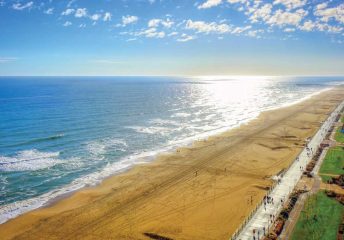
Best Beaches Near Washington, D.C.

Best Lakes in Colorado for Boating

11 Most Beautiful Bodies of Water in the U.S.
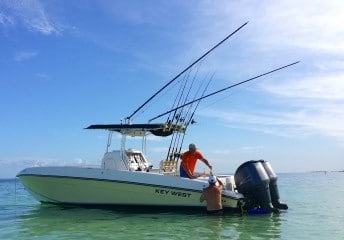
Your Guide to Purchasing the Perfect Center Console

Catamaran vs. Monohull Sailboats

When it comes to catamaran vs. monohull, there are two schools of thought that always prompt impassioned debates as to which one is much better.
If you've used both a catamaran (a boat with two hulls) and a monohull (a boat with one hull), you know that they both have pros and cons. In most cases, it all boils down to your personal preferences and intended use but that shouldn't prevent us from highlighting the better one.
A catamaran is much better than a monohull in many ways. Catamarans are more stable, faster, and spacious. They also offer safer anchorage and are easy to control. Monohulls are more maneuverable, have lower costs, and better when sailing upwind. It all comes down to personal preference and intended purposes, but when it's all said and done, a catamaran has more advantages than a monohull.
In this incisive article, we'll highlight the critical differences between a catamaran and a monohull and see the one that comes out on top.
Table of contents
Catamaran vs Monohull
Safety while out there on the water is one of the most critical things that any sailor should have in mind when choosing the type of boat to use.
Catamarans shine on many aspects of safety. They're generally more stable and seem to have natural buoyancy since they don't have ballast and this makes them almost unsinkable. Generally, catamarans are designed with a considerable amount of reserve buoyancy thanks to the crannies of the vessel, nooks, and closed-cell foam. These objects can, however, become a serious cause of safety concern should there be a fire outbreak. All in all, a cat can sink in an accident, but it'll most likely float on the surface of water unlike monohulls, which will sink to the bottom.
Again, catamarans have flat decks. This makes it a lot safer to walk on them than it would be to walk on angled decks of monohulls. Given their flat decks, a catamaran boat will stay level and have less pitching and so it's a lot easier to keep the crew aboard and safe even in rough weather.
Another important fact that may contribute to the safety of a catamaran is its speed. If you've always believed that speed equals safety, then a catamaran is the right boat for you. In short, the speed of a catamaran will allow you to outrun rough weather. A modern catamaran can clock nearly 250 miles a day, which is quite faster, and so there's no reason why you should get caught in bad weather.
In terms of safety, a monohull is nowhere near a catamaran as far as safety is concerned. The most important thing about a monohull in terms of safety is its self-righting capabilities. With a monohull, you're likely to return to an upright position even after capsizing and this can give you a chance of accessing onboard safety equipment, floatation devices, life raft, EPIRBS, dinghy, strobe lights, and many more.
Unfortunately, the same cannot be said of a catamaran. With a catamaran, you'll stay upside down once you're upside down and this can be fatal in the middle of the ocean.
Verdict: The self-righting capabilities of a monohull can be life-saving but it isn't guaranteed. On the contrary, a catamaran has loads of safety features chief among them is its unsinkability, so it easily comes out on top as far as safety is concerned.
Speed and Performance
If everything including length remains the same, a catamaran is about 30% faster than a monohull. A cat can sail at half the speed of wind but this will, of course, upon the angle of the wind. It remains the faster vessel and will allow you to arrive at your destination promptly. If anything, you can outrun bad weather with a catamaran.
Monohulls are generally designed to operate pleasantly with the sailing elements. This means that they won't fight these elements and will, in turn, offer slow but sure sailing. However, they do not have a lower wetted surface area and are certainly much slower when compared to catamarans. They can, nonetheless, be a great choice for sailing upwind.
Verdict: When it comes to speed, the catamaran wins hands down. No argument.
Needless to say, a catamaran is designed with two parallel hulls that give it a more reliable form of stability. This is crucial in preventing heeling and capsizing while also mitigating any chances of rolling when speeding. This stability is also of great importance in eliminating seasickness for passengers.
The level of stability that a catamaran has is one of the main reasons why capsizing is a very rare occurrence. A catamaran can lurch when the tops of the waves are at a certain distance, thereby leading to less bobbing.
The stability of a monohull will always be questioned, especially when compared to a catamaran. To put it into perspective, a monohull is four times more likely to capsize than a catamaran because its design means that it has less stability. If anything, a mono's single-beam design makes it seven times more likely to feel the effects of heeling than a catamaran of the same size. In essence, heeling is a major problem in monohulls.
Verdict: The high level of stability that a catamaran brings to sailing will make even a novice sailor feel more confident sailing on a catamaran. Differently, a monohull is less stable and seems to be in constant rolling and pitching motion, which makes it very unstable and unsafe to walk around the deck.
Maneuverability
In most cases, cats always have twin engines, set almost 20 feet apart. This will not only give you superb close control in tight situations but certainly removes the need for a bow thruster. While it may seem redundant to have twin engines on a cat, you'll appreciate the importance of the second engine if the first engine develops a mechanical issue while you're out there on the water.
The shallow drafts of the catamaran also play a major role in maneuverability in the sense that you can navigate into places where you can't get with a monohull such as close to the shore without thinking about running aground.
From a different point of view, a monohull can be better in terms of maneuverability since you won't be dealing with two hulls. A monohull can also make sharp turns and even sail through narrow channels and tight spaces, which is almost impossible with a catamaran. Additionally, a monohull has a higher hull displacement, which is essential in reducing the adverse effects of crosswinds, especially in tight conditions.
Verdict: The differences in terms of maneuverability are slight in both the catamaran and monohull. The fair verdict here is a draw.
Docking and Anchorage
With no ballast or a considerable keel, the overall weight of a cat is significantly reduced. This makes it more lightweight and this is why it wouldn't be uncommon for a 36+ foot catamaran to explore some of the shallow areas that a monohull wouldn't dare reach.
However, the wider and unique size of a cat means that it won't easily fit on a traditional slip and this needs a unique set of skills and careful planning to anchor at most docks. This means that finding the right space at the dock can be quite difficult, so you may have to take a dinghy to the shore.
A monohull is a lot easier to dock as it takes less space compared to a catamaran. This means that your docking, hauling, and slipping charges will be much less than those of a catamaran.
Verdict: Does it make any sense to bring two boats to the shore? Well, this is what you do when you have a catamaran and it certainly loses to the mono as far as docking and anchorage are concerned.
Ride Comfort
A comfortable ride is, without a doubt, one of the most important things to consider when looking for the right boat for you.
The fact that a catamaran is designed with a wider footprint is of great importance in mitigating the negative effects of unpredictable rolling and pitching that sailing is known for. A catamaran has a broad surface area, which makes it more comfortable and stable. As such, it's a lot easier and safer to cook while sailing.
Again, your passengers will be less prone to seasickness in a catamaran because there's less pitching and a cat doesn't roll from swell to swell as it happens in a monohull. That's not all; walking on the deck of a catamaran is a lot easier and safer since the boat is flat. This makes reefing much easier and safer and your chances of falling overboard are greatly reduced. More importantly, it's more pleasurable to sleep in a catamaran because it never heels.
In terms of ride comfort, a monohull offers smooth sailing as it doesn't slap or pound the water like a catamaran. This is because it works harmoniously with the sailing element and doesn't fight it like a catamaran, especially when sailing upwind. However, seasickness brought about by constant rolling and pitching of a monohull.
Verdict: If you want to have a comfortable sailing ride, a catamaran has many benefits than a monohull as long as it has a superb bridge deck clearance that disperses wave action.
Maintenance
A catamaran is general designed with two of everything. From the two hulls to the two engines, you seem to get things double, which can be reliable when sailing if there's an issue with one part. In other words, you always have a backup.
However, the costs of maintenance can be high if you have to maintain the boat, even though you can still use one part if the other part isn't working.
The fact that you only have single parts means that you have to be very careful and ensure that your monohull vessel is maintained or repaired regularly. Fortunately, the costs of maintenance and repairs are greatly reduced when compared to those of a catamaran.
Verdict: It's highly doubtful that you'll take your catamaran out if one of the two hulls or engines are faulty. The monohull wins this.
The costs of a catamaran are substantially high since everything seems to come in pairs. However, catamarans are known to have high resale values, very low depreciation rates, and can sell a lot faster than monohulls because they're more popular with modern sailors. But because catamarans aren't widely manufactured in the United States, their costs are still high as you'll have to include the delivery costs.
When deciding to buy a monohull vessel, you should keep in mind that they're widely available on the market so their costs might be a bit lower compared to catamarans. Again, their low maintenance cost will work to your advantage.
Verdict: The costs of buying and maintaining a monohull are quite low, so it's the best choice if you're on a tight budget but still want to enjoy sailing. Catamarans are very costly to build and are more expensive than monohulls.
The amount of deck space afforded by a catamaran is huge and always very spacious. The amount of space that a cat can afford you is one of the main reasons why you should choose it if you're looking for comfort or planning to live aboard the vessel.
On the contrary, monohulls are narrower when compared to catamarans; hence they have a very limited deck space. This is particularly mitigated by the fact that they have additional storage space.
Verdict: A catamaran has a lot more deck space and wins on this.
Load Distribution
Unlike monohulls, catamarans are rectangular and are more stable. This is essential in giving the passengers more freedom without necessarily having to worry about how their weight is distributed inside the boat.
A monohull is almost similar to standing on one leg and balancing can be quite overwhelming. This means that the weight of the passengers will have to be evenly distributed to ensure that the boat is balanced. Of course, this will limit the freedom of passengers and any imbalance might make the boat capsize.
Verdict: You don't have to worry about load distribution in a catamaran but this can be a negative issue in a monohull.
Fuel Efficiency
If you want to save money by reducing the fuel costs, a catamaran is an ideal option. A cat generally experiences little drag or resistance and doesn't need lots of fuel to move. They also have a steady rise in speed, which means that there will be no sudden increase in fuel consumption.
In comparison, the level of drag created due to greater displacement in a monohull vessel means that there will be a higher resistance and this translates to higher fuel consumption.
Verdict: A monohull consumes more fuel than a catamaran, so a cat is an ideal option if you're looking for fuel-efficiency.
In Conclusion
To this end, it's easy to see that a catamaran comes out on top as the best option on many fronts. This doesn't mean that a monohull doesn't have its advantages. Of course, it has both advantages and disadvantages just like a catamaran does.
And even though the catamaran comes out on top, the final decision is on you and may depend on your personal preferences. Whatever you choose, make sure that you enjoy your sailing vacation.
Related Articles
Daniel Wade
I've personally had thousands of questions about sailing and sailboats over the years. As I learn and experience sailing, and the community, I share the answers that work and make sense to me, here on Life of Sailing.
by this author
Learn About Sailboats
Most Recent

What Does "Sailing By The Lee" Mean?
October 3, 2023

The Best Sailing Schools And Programs: Reviews & Ratings
September 26, 2023
Important Legal Info
Lifeofsailing.com is a participant in the Amazon Services LLC Associates Program, an affiliate advertising program designed to provide a means for sites to earn advertising fees by advertising and linking to Amazon. This site also participates in other affiliate programs and is compensated for referring traffic and business to these companies.
Similar Posts

Affordable Sailboats You Can Build at Home
September 13, 2023

Best Small Sailboat Ornaments
September 12, 2023

Discover the Magic of Hydrofoil Sailboats
December 11, 2023
Popular Posts

Best Liveaboard Catamaran Sailboats
December 28, 2023

Can a Novice Sail Around the World?
Elizabeth O'Malley
June 15, 2022

4 Best Electric Outboard Motors

How Long Did It Take The Vikings To Sail To England?

10 Best Sailboat Brands (And Why)
December 20, 2023

7 Best Places To Liveaboard A Sailboat
Get the best sailing content.
Top Rated Posts
© 2024 Life of Sailing Email: [email protected] Address: 11816 Inwood Rd #3024 Dallas, TX 75244 Disclaimer Privacy Policy

Catamaran vs. Monohull: We Changed, Should You?

There are two schools of thought when it comes to monohull versus catamaran . We have done extensive cruising and lived aboard two monohulls and four catamarans over the past 25+ years . We experienced the good and the bad for both single hull and multihulls first hand. Quite honestly, the pluses for catamarans far outweigh the minuses. There are multiple benefits of catamarans. They are faster, more stable and spacious, and have shallower drafts allowing safer anchorage closer to shore. Being on a stable platform with no heeling cuts down on crew fatigue and seasickness leaving the crew more alert and in control of the vessel. Even novice sailors feel more confident on catamarans.
When we built our monohull Royal Salute in the early 90s, catamarans were not established and were looked upon with extreme suspicion by most cruisers, including ourselves. “Safety and the capsize” issue were always the first things to come up against sailing catamarans. It is a fact that monohulls can get rolled in heavy seas but will right themselves because of the heavy lead keel, and while crew and vessel will be battered, the roll is survivable.

However a catamaran once capsized, will remain upside down (jokingly referring to this state of the catamaran as “reaching its most stable position when upside down”). The inability of a catamaran to self-right was and still is a major bone of contention. However, what is not often discussed is that a monohull has about a 5,000 pound keel of lead that is constantly trying to drag the boat to the bottom of the ocean versus a catamaran that has no ballast and is in most cases with modern catamarans, unsinkable.
So the options are to either sail the world on a boat that, if it springs a leak, will sink like a stone or a vessel that cannot self-right in the event of a capsize but will not sink no matter what. So from a practical point of view, here are our observations over the last 25+ years of living aboard, on the advantages and disadvantages of a catamaran.
ADVANTAGES OF A CATAMARAN
1. speed equals safety.
The speed of a catamaran makes it possible to outrun bad weather. While catamarans do not point as high into the wind as a monohull (or if it does, it makes more leeway or slides sideways), it is about 20% faster than a monohull. This means that even if you sail upwind at a slightly wider angle to the wind than a monohull and have to cover more distance, you will still arrive at your destination long before a monohull.
A modern performance catamaran with daggerboards and good quality sails will point as high as a similar sized monohull. It will point the same as a comparable monohull and sail much faster and therefore arrive at an upwind position much sooner than a the monohull. It is important to note that most of the production catamarans on the market are under-powered and are equipped with standard smaller sails. In lighter breezes many of these designs perform poorly unless fitted with bigger headsails, a Code Zero and a square-top mainsail.
While we believe that more comfortable and safer in rough weather , we have to concede that when the weather gets really bad (60 knots of wind or more) we would personally prefer to be on a monohull from the standpoint of surviving. I would say that a monohull is preferable for serious offshore single-handed sailing because you can more easily hove-to in a monohull. We have been in some extreme weather on a number of catamarans and never really felt that we were in danger, although it takes some nifty seamanship.
A monohull could capsize in extreme weather or even roll in a storm, but they generally come back upright. A catamaran on the other hand, will not right itself. But the cat will generally stay afloat, offering a good place to survive while you wait out the storm or until help comes along. Well-designed modern catamarans are very hard to capsize though.
Having said all that, most catamarans can do 200 to 250 miles a day and with modern technology allowing one to pull down weather at will, there is no good reason why you should get caught in extreme weather. A faster boat is a safer boat as it will in many cases be able to outrun bad weather. With good weather routing information a catamaran can avoid most serious weather and, at worst, place itself in the most favorable position to avoid the brunt of a storm.
2. A Catamaran is a Stable, Safe Platform Underway
Catamarans have no ballast in the keels like monohulls do and therefor it relies on beam and buoyancy for stability. Typically cruising catamarans will have a beam to length ratio of roughly 50%, although many designs nowadays exceed the 50% rule of thumb. So, a 45-ft long catamaran will be about 22-ft wide, providing a very stable platform when sailing. Unlike catamarans, monohulls cannot overcome the rolling and pitching with their narrow beam and the lead ballast for stability.
This rolling and pitching makes the deck on a monohull very unsafe whereas on walking around on the deck of a catamaran while underway is far easier since the boat is much more stable, and it doesn’t heel. This makes sail changes and reefing much easier and a lot safer for the crew. Without the rolling and pitching motion, the danger of falling overboard on a catamaran is considerably less than on a monohull.
3. Crew Fatigue Reduces on a Catamaran
Because a catamaran does not heel over like a monohull, it offers far more comfort underway because the motion is mostly fore and aft pitching and very little beam-to-beam rolling. On all points of sail, a catamaran tracks upright and significantly reduces crew fatigue and seasickness. Seasickness is usually caused by things like anxiety, fatigue, hunger and cold, which all add to a sense of disorientation. This leads the crew to making bad decisions and seamanship errors that could be fatal to the crew and vessel. The more stable platform of the catamaran will hugely keep those issues at bay, making the crew more alert and energized.
Every action and chore including cooking is much easier on a catamaran when underway. It is much more pleasant to be on the deck level looking out rather than being stuck “down below.” It is also much nicer to sleep on a boat that doesn’t heel. I remember nights at sea in our monohull when I was rolling around in my bunk unless I was properly wedge in a little corner. That is simply not the case on catamarans.
All these factors ensure that your crew will not expend unnecessary energy to simply try and stay upright, onboard and safe on a long passage. Your crew on a catamaran will be well rested and alert and will be able to function well if a stressful situation arises.
4. Comfort at Anchor
Catamarans provide a wide platform and therefore offer lovely spaces to relax at anchor without the rolling motion that monohulls have a tendency to do in a swell. During our 15 years of cruising on a monohull, we have often had to leave anchorages that we really were not finished exploring because of a rolly, uncomfortable anchorage. Big rollers or swells coming into an anchorage can make conditions in an anchorage very uncomfortable and unsafe.
We were anchored off Funchal on the island of Madeira in our monohull Royal Salute once, when we were forced to leave our anchorage. The rolling became so bad, we were rolling from gunnel to gunnel. The anchorage became untenable to remain anchored, forcing us to go out to sea in foul weather in the middle of the night. This is an extreme case but believe me, we have left many an idyllic anchorage because of a rolling swell into the anchorage. Catamarans, on the other hand, do not roll from like monohulls have a tendency to do and are far more comfortable at anchor.
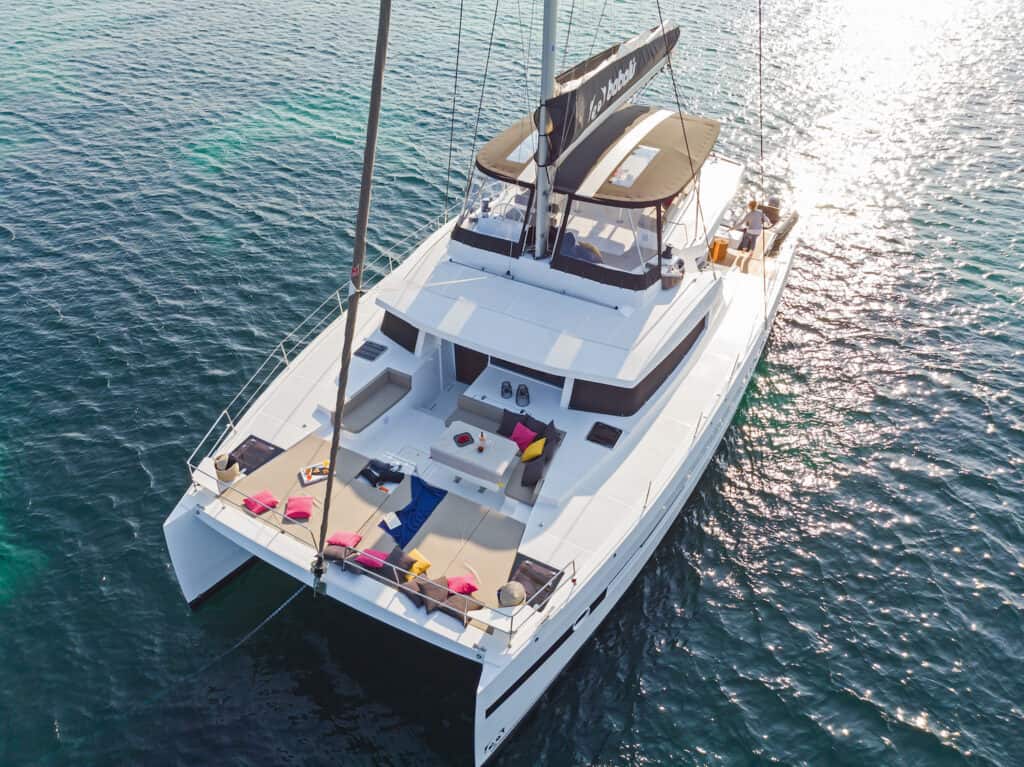
5. Anchor Bridal Setup

Catamarans are fitted with a bridle, attached to both bows and down to the anchor chain, resulting in a very stable position at anchor. What we found with our monohull was that because the bow acts as a sail (because of the high freeboard), the boat tended to sail at anchor in high winds. It sailed in one direction until the chain snatched and tacked over and sailed in the other direction, feeling like it might dislodge the anchor altogether. The catamaran on the other hand sits at anchor a lot more stable and doesn’t sail around as much.
6. Ease of Boarding on a Catamaran
Thank goodness we were much younger and more agile during our monohull days. Royal Salute and most monohulls of her generation or older, have high free-boards, making it quite a feat to get onto the boat from the dinghy. It was one of the most challenging things to do because unlike the more modern monohulls that have a scoop at the back, we had to climb up on the side of the boat to get on and off. We, of course rigged steps, etc. but it was always a hassle compared to the ease of getting on and off a catamaran from a dingy or from the water.
7. Shallow Draft Equals Better Anchorages
Catamarans have significantly shallower drafts than monohulls, allowing for safer anchorages closer to shore. Most catamarans in the 40-ft to 50-ft range draw between 3-ft to 4.5-ft, so they can anchor in places that a monohulls can not even consider. In the shallow waters of the Bahamas for example, the catamarans have a big advantage. We often anchor our own catamaran just a few feet away from a beach. It definitely allows one to be able to explore areas where the water is shallow without the fear of running aground.
The shallow draft also allows for emergency repairs in shallow water and even doing the bottom job when the tide goes out as we have done in places like Mtwapa Creek in Kenya, East Africa. The catamaran easily rests on her keels on the sand without help making it a breeze to do the “annual haul out” even in remote locations.
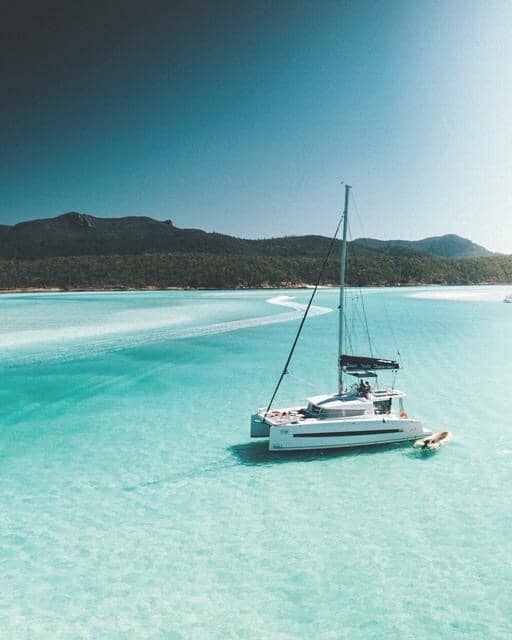
8. Dinghy Davits & Dinghy Size
All catamarans have a set of davits that make it very easy to raise and lower the dingy. Our monohull and most cruising monohulls do not have an efficient or easily accessible set of davits. This makes raising and lowering the dingy an elaborate production. Catamarans on the other hand, has davits systems easily accessible and some even have platforms to rest the dinghy on.
The lack of beam and difficulty of lifting the dinghy also limits the size and type of dingy that one can reasonably carry on a monohull. As we all know, the dingy is your transport to and from shore and diving or fishing spots, so the bigger and faster the dingy, the better off you are. A catamaran can carry both a heavier and bigger dinghy which makes the popular center consul dinghy so much more possible.

9. Interior Space and Comfort on a Catamaran
We sailed 32,000 NM on our 45-ft monohull, happy as clams, not realizing that sailing does not have to be done lying on your ear 24/7 while on passage or sitting knee-to-knee in the cockpit at anchor with your two other guests at the dinner table! One can liken sitting in a monohull cockpit to sitting in an empty Jacuzzi, you are always nice and close to the other folks.
Now that we are on our fourth catamaran, there are a few things that have become more evident to us than the incredible space and comfort of a catamaran, not only at anchor but also underway. The cockpit and living space in general are huge compared to a monohull, making for very comfortable and spacious living conditions. It feels more like you are at home, rather than just on a camping trip.
Knowing that one spends at least 90% of one’s cruising life at anchor, it’s important to have good open living space, which most modern cats nowadays offer. A lot of cats have walk around beds, lots of storage, every modern appliance including washer/dryer, etc. However, one has to fight the urge to fill the space if you want to keep the cat light and fast.

Sailing with guests onboard for extended periods of time, in close quarters can become claustrophobic but on a catamaran people are spread out and separated. With guests sleeping in one hull and the owners in another, catamarans offer much more privacy and separation. Some cats even have privacy doors that will close off the entire hull and has a separate entrance onto the deck, which really separates you from the guests completely.
There is very little heeling on a catamaran, so there is no need for hand grips and safety harnesses inside the boat. There is nothing better (and safer) than being able to walk from the cockpit into the living room (saloon) on one level or one step down at most. In a monohull, when heeling at a severe angle, you would have to claw your way from the companionway steps down to the living area, while fighting to stay upright, significantly tapping your energy.
Unless you hit extreme conditions, everything stays put on a catamaran reducing the anxiety before doing passages of having to stow and secure everything. This very issue makes a lot of cruisers reluctant to weigh anchor and explore more often. It is just too much effort to pack away all your stuff once comfortable in an anchorage!
One thing you will notice is that the stove on catamarans are not gimbaled like it is on monohulls and this should tell the story in itself. The stability and comfort on a catamaran is far superior. Cooking is easy and safer. I often open a nice cold beer, put it down to do something and forget about it only to find a warm beer later in the same place I left it. This is not something that happens on a monohull.
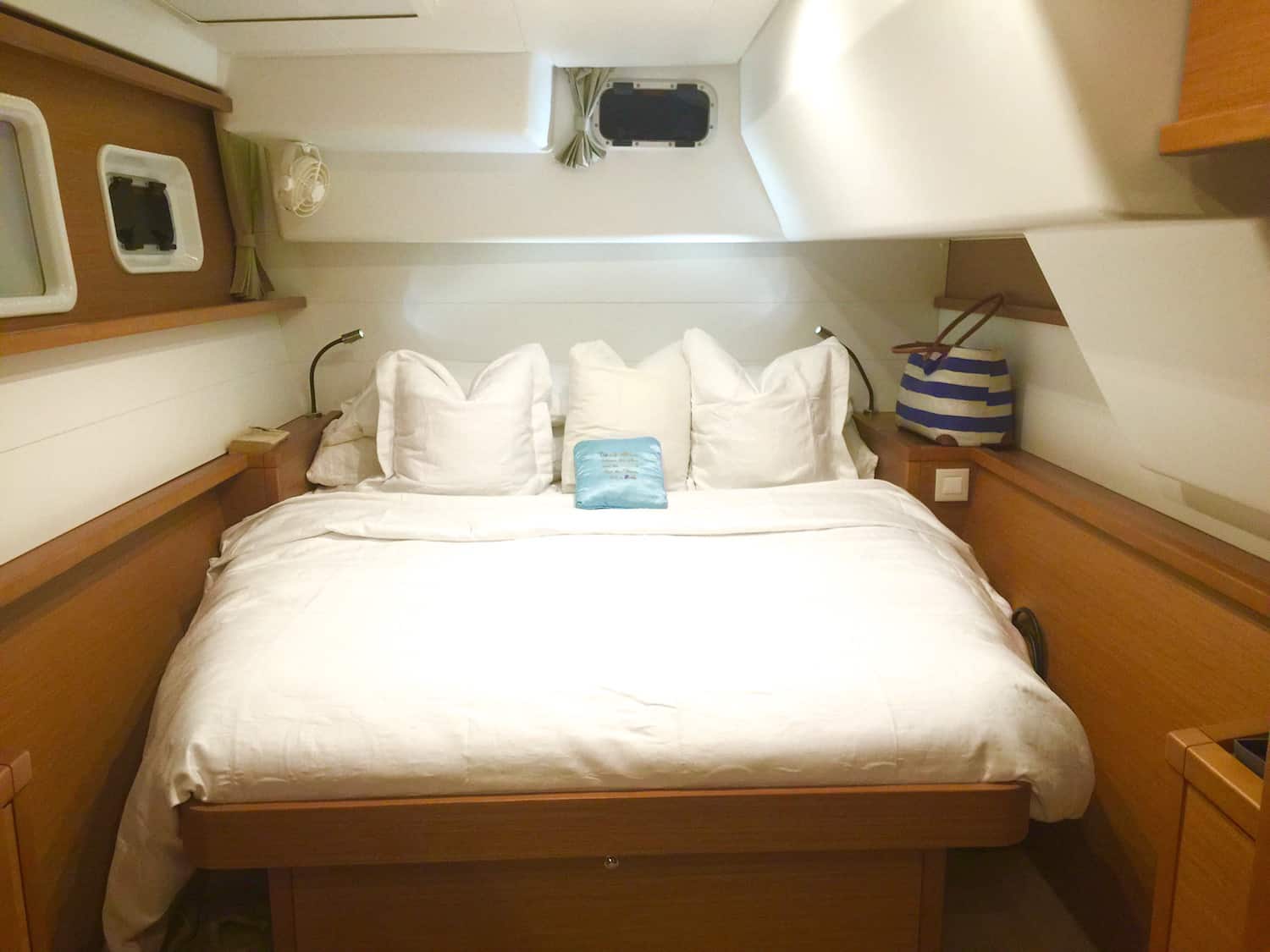
10. Redundancy on a Catamaran
Unlike monohulls, catamarans have a lot of critical redundancies. That of course means two hulls to clean and anti-foul, double the engine maintenance, etc. but having two of the critical equipment like engines for instance, outweighs the downside.
With two engines, if one fails you still have adequate propulsion to go anywhere. If by some fluke the second engine also fails, you have a full set of spares to fix at least one of them. Our friends once hit a sleeping whale off Tanzania, and when it dove, it hit the prop, bending it. They limped into the narrow channel on the one engine but at least they could make it to a safe harbor where we surveyed and repaired their damage.
We often only use one engine when motoring while making passage in order to conserve our fuel. The one engine is totally capable of moving the boat along at a good speed unless you are in heavy seas and you may need more power. Other than that we only use two engines to dock or maneuver the boat in close quarters.
Because there are two engines there are also two independent charging systems via the alternator on each engine. If one alternator goes out, there is still another complete charging system. There are two rudders and if one fails or falls off (as has happened to our friends on a monohull off Columbia, where they almost lost their boat) you have a second rudder that is completely capable of steering the boat by itself indefinitely. That holds true for several things on a catamaran!
11. Maneuverability
The engines are spaced far apart on a catamaran and it makes maneuvering much easier and more precise than monohulls, unless the monohull has a bow thruster. We did not have a bow thruster (not many monohulls do) and had to rely on prop-walk and using prop wash on the rudder. A modern catamaran can do a 360 turn on her own axis. A monohull cannot do this and have a bigger turning circle. However, a monohull under sail is much more maneuverable and certainly will tack a lot faster than a catamaran. The ease in maneuverability under engine on a catamaran in close quarters specifically, is vastly superior comparatively.
12. Rigging
Because of the beam on a catamaran the spinnaker pole has become unnecessary equipment. Hallelujah, I say. That pole on our monohull was a pain the behind and I always hated having to use it. On a catamaran, one can fly an asymmetrical cruising chute or spinnaker, using the bows to tack the clew or run a guy through a block so it is very much simplified, easier and safer.We also sail wing-on-wing with twin headsails when we sail downwind. We use our furling jib and furling Code Zero. It is as easy as one, two, three.
DISADVANTAGES OF A CATAMARAN
1. bridgedeck slamming.
One advantage most monohulls do have when underway is that they don’t slam. Catamarans with a low bridgedeck clearance can experience significant slamming in confused seas sailing upwind. This slamming can be quite disconcerting when you first experience it as we did on a Shuttleworth 44 design, our first ever catamaran experience, 20+ years ago. At times, it felt as though the boat was falling apart. Of course the boat was fine but nevertheless, the stress on the crew from the constant noise and discomfort was significant.
Monohulls don’t have a bridgedeck which means no slamming and are therefore a bit more comfortable than l ow bridgedeck catamarans when beating into severe confused conditions or “washing machine” conditions as we call it. Modern catamarans mostly have better bridgedeck clearance and the slamming is significantly less. However, not all cats have a good clear tunnel under the bridgedeck. Some manufacturers build beds into the bridge deck in order to make more space in the chest of the catamaran where the slamming occurs. These protuberances into the bridgedeck tunnel will likely increase slamming. So be mindful of that when selecting a catamaran. We currently own a Bali 5.4 and the bridgedeck clearance on this boat is more than adequate and the tunnel is clear. We therefor experience very little slamming compared to our Prout 45 that we previously owned (picture of sister ship below) with a much lower bridgedeck.
We Explain Bridgedeck Clearance
In the pictures below, the Bali 5.4 has very good clearance from the water to the bridgedeck and has a nice clean tunnel versus the very low bridgedeck of the Sunreef 50.

2. Sailing Downwind
Monohull spreaders are set at 90 degrees to the mast whereas a catamaran has to have backswept spreaders. The reason is that, on a monohull, there is a backstay and using this, plus the intermediates you can get a nice pre-bend in the mast (the pre-bend is to flatten out the main sail and allow for better performance).
On a catamaran with no back stay, you need to use the back swept spreaders and the diamonds to pre-bend the mast. The reason I point this out is because on a catamaran, if you want to broad reach or run, the mainsail cannot be let out all the way because the backswept spreader tips could punch holes in the fabric.
On a monohull, the spreaders are at 90 degrees so you can let the main and the boom out much further which is, of course, much more effective. This is one of the reasons it is better to broad reach and tack downwind on a catamaran.
Whether a monohull or multihull, sailing dead downwind doesn’t usually make great VMG. Therefor a regular cruising cat, much like a monohull, needs a lot of sail area and has to sail deep downwind if it is to achieve a decent speed made good (VMG). This video demonstrates how we achieve this by sailing wing-on-wing downwind.

It is more difficult to find a dock either as a transient or a permanent slip for a catamaran in general because of the wide beam. But this is changing fast and will soon not be too much of an issue. In the USA dockage is charged by the length of the boat in feet, so there is no disadvantage there but, in some places, (the Mediterranean for example), dockage is charged at length times one and a half because of the additional beam.
Since the catamaran is stable at anchor, we mostly anchor out. We have more privacy, a better breeze and usually a stunning view.We have a nice dinghy with a good outboard engine and is big and comfortable enough to get to shore fast and together with the modern conveniences like the generator, watermaker and washer/dryer, docking becomes a non-issue.
It is definitely more difficult to find a travel lift with enough beam for a catamaran for a haulout, while, for a monohull, there are absolutely no problems anywhere. The wide beam of cats also greatly limits the number of shipyards that can haul them out. Most catamarans over 40-ft must be hauled out with a 50-ton travel lift. This not only increases the cost of the haulout, but greatly limits the choice of the shipyards for repairs and maintenance. With limited choice, prices are high for shipyard services.
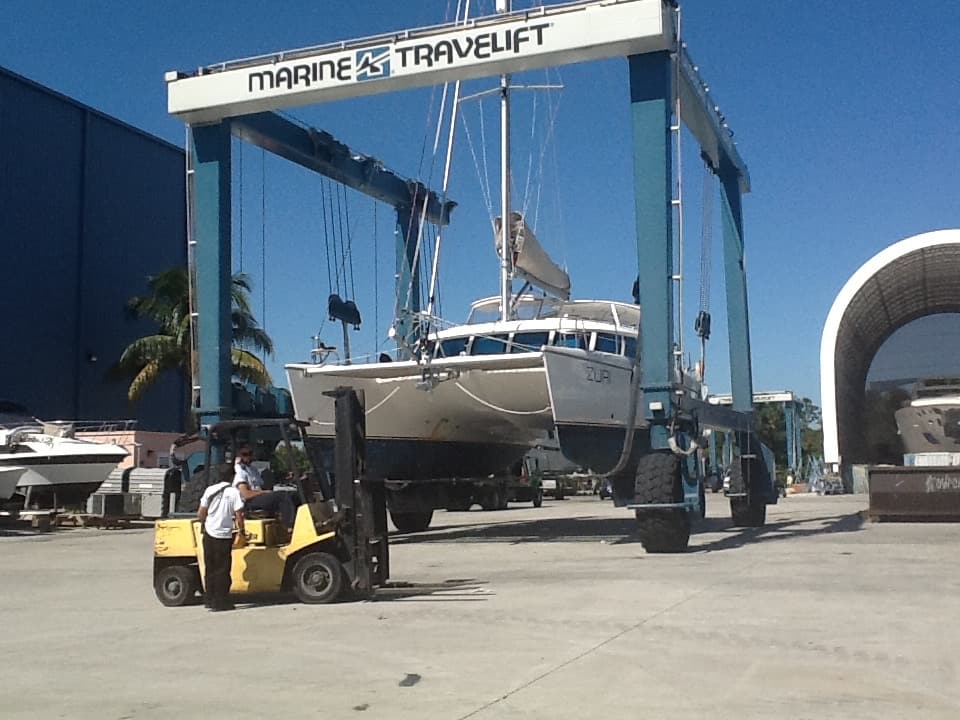
Catamarans do tend to have a lot more windage than monohulls. This can be an issue especially when maneuvering in close quarters with a strong wind. But I have found that, provided the engines are powerful enough for the size of catamaran, that twin engines negate this problem. Also, many modern large catamarans now have a bow thruster fitted. It is super easy to dock.
The cost of getting into a catamaran is much higher than that of monohulls. That could put a serious dent in your cruising kitty or require you to put your dream on hold a little longer. Pre-owned monohulls on the other hand are very cheap to buy comparatively, because the supply presently far outweighs the demand.
Catamarans are in high demand and they typically hold their value much better and longer and the trend is now heavily in favor of the catamaran market. When prospective buyers contact us for catamarans under $250,000 the choices are very limited and catamarans under $100,000 is near impossible to buy. In this case, your best bet is to go with a monohull unless you go with much older boats like the Prouts or the less expensive Geminis.
Our Own Catamarans & Monohulls
FYI: Royal Salute , a Bruce Roberts 45 monohull, was the first boat we owned and sailed approx. 30,000NM on. Mythral, a Seafarer 30, was our “toy boat” while we were waiting for our catamaran to be built. Even though this classic little monohull sailed around the world, it didn’t have much in modern conveniences like running water. Siyaya was an Island Spirit 40 catamaran that we sailed from Cape Town to Florida on and then taught live-aboard sailing classes for several years. Zuri I was a Prout 45, a beautifully crafted catamaran but by today’s standards is considered old technology. Our Lagoon 450 SporTop ( Zuri II ) is a fantastic live-aboard catamaran. We lived and taught aboard her for three years but sold her last year and we currently own a Bali 5.4 ( Zuri III or Z3 as we call her now). Read about our various boats .

CONCLUSION: CATAMARAN vs MONOHULL
We were dyed in the wool monohull sailors for 15+ years. We loved the pretty lines of monohulls, the sailing ability and what we believed at the time to be much safer vessels. However, now that we have been avid catamaran enthusiasts, we simply can never go back to monohulls. Catamarans have come of age and with modern technology have overcome most objections that sailors of old had against them. They are well designed and built, are safe, and we simply love that they sail fast and upright. There is not a whole lot to dislike about a catamaran when you live aboard. We have weighed all the pros and cons of catamarans and found that the pros far exceed the cons. We made the change to a catamaran and do not regret it one bit!
We hope that this article will clear things up for all the prospective catamaran owners out there.
Contact us if you have any questions regarding catamarans, Fractional Yacht Ownership or our Charter Management Programs .
Estelle Cockcroft
Join our community.
Get the latest on catamaran news, sailing events, buying and selling tips, community happenings, webinars & seminars, and much more!
4 thoughts on “Catamaran vs. Monohull: We Changed, Should You?”
I read that the engineering on the catamarans were improved over the years. Whats the oldest year would you recommend designwise?
Scott, my apologies for the late reply. We’ve been traveling in Africa. Anyway, catamarans have come a long way and improvements in technology is happening at lightning speed. I reckon that even the older model catamarans are good. It depends on what your needs are. If you want something a little better performance wise, I would go for something no older than 15 years.
After buying a catamaran what is the difference in expense of a catamaran vs a monohull. Many articles state that not only the initial cost of a catamaran is more it the operating cost as well.
Hi Todd, it is more expensive. The annual dockage and haul out as well as maintenance will be more expensive. You obviously have two engines to maintain and various other pieces of equipment to service in both hulls. While there is more equipment there is also more redundancy and of course you have the comfort factor. So, depending on your situation, it’s probably worth it.
Leave a Comment Cancel Reply
Your email address will not be published. Required fields are marked *
Save my name, email, and website in this browser for the next time I comment.
Recent Posts

Top 10 Reasons to Sell (and Sail) Your Catamaran in Annapolis, MD
We have a new home in Annapolis! The office is located in Annapolis, Maryland

Top 10 Reasons to Sell (and Sail) Your Catamaran in Texas
Our Texas Office is located in the Watergate Marina Center in Clear Lake Shores,
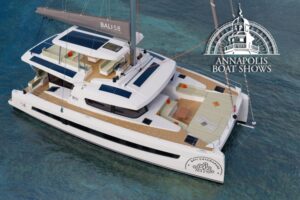
Annapolis Boat Show 2024
Meet with our team! Want to learn more about the Bali and Catana

Exploring the Catana OC 50 Catamaran: A Comprehensive Overview
The Catana OC 50 Catamaran, the latest addition to the Catana Ocean Class series,

For more than 30 years, we have been a part of the catamaran community and created Catamaran Guru™ to encourage and educate all the aspiring sailing out there. We understand the dream of traveling the world by catamaran and created a one-stop-shop to make that dream a reality for you.

- Stephen & Estelle
- Testimonials
Get Started
- Yacht Sales
- Used Yachts
- Charter Management
- Boat as Business Programs
- Seminars & Events

FREE CANCELLATION & RESCHEDULING 2024
+385 21 55 33 01 +385 91 3000 009
+385 91 3000 009
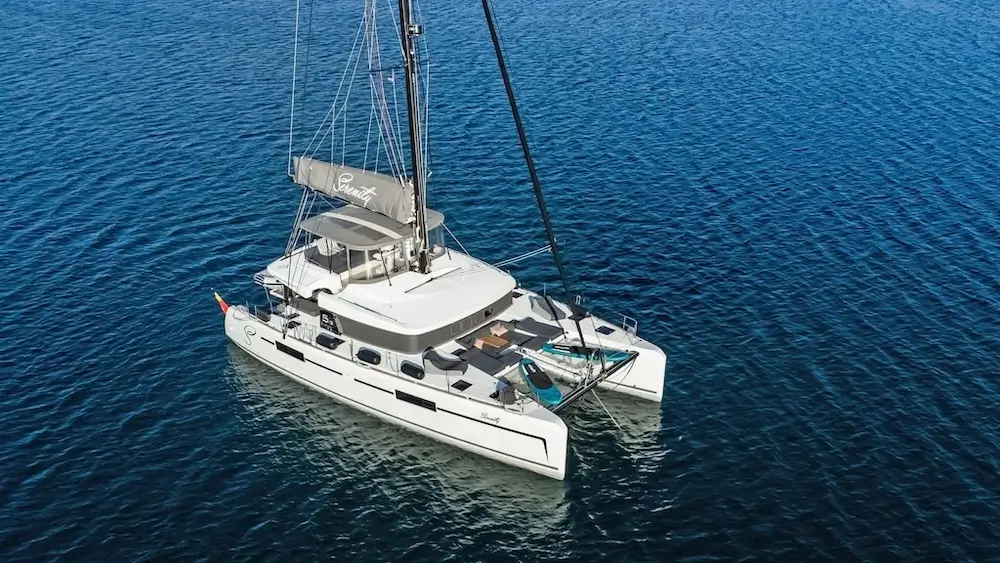
Is a Catamaran Safer Than a Yacht?
When it comes to marine voyages, safety is a paramount concern. Both catamarans and yachts are popular vessels for cruising, especially for those considering a Greece yacht charter . But which of the two stands out when it comes to safety? Let’s delve into the dynamics of each to unveil the answer.
Understanding the Basics
Before diving into the specifics, it’s essential to comprehend the basic structure and characteristics of both vessels.
Catamarans:
- Dual-Hulled Structure: Catamarans have two parallel hulls of equal size. This design offers more space, which many find appealing when looking into yacht rental Greece .
- Stability: The broad base provided by the two hulls ensures that catamarans are stable in waters, reducing the risk of capsizing.
- Single-Hulled Structure: Unlike catamarans, yachts have a single hull. This design can provide a smooth sail in stable weather conditions.
- Deep Draft: Due to their deep draft, yachts can handle rough seas better and navigate deeper waters.
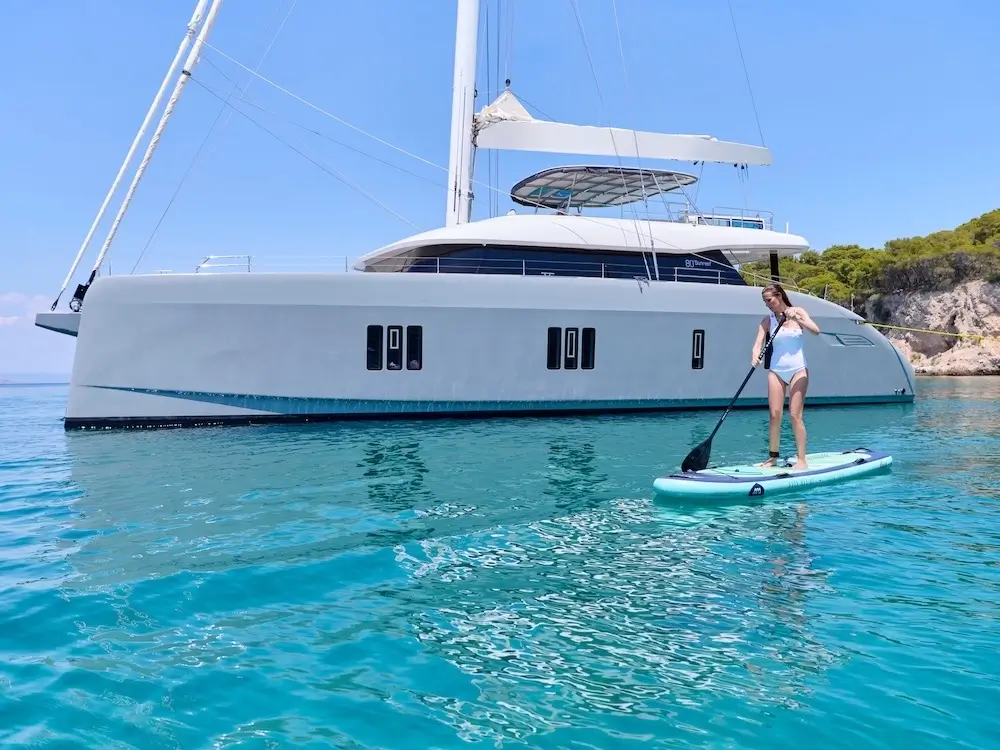
Is A Catamaran Safer Than A Yacht 2
Stability in Various Conditions
Stability is one of the primary concerns when it comes to safety at sea. Let’s understand how each vessel fares.
- Resistance to Rolling: Thanks to their wide stance, catamarans resist rolling in calm to moderately choppy waters. This feature makes them especially sought after for a comfortable catamaran charter Greece experience.
- Shallower Draft: With a shallow draft, catamarans can navigate shallow waters and are less likely to run aground, opening up a plethora of anchoring options.
- Handling Rough Seas: Yachts, with their deeper draft, can sail better in rough seas. The weight and design offer more resistance against challenging weather conditions.
- Keel Design: The keel in yachts helps counteract the force of the wind, allowing it to sail upwind efficiently.
Safety Features and Equipment
Both catamarans and yachts come equipped with safety gear and navigation tools. However, the choice between them often boils down to personal preferences, the intended itinerary, and the specific conditions they are expected to encounter.
For many planning to sail the picturesque Greek waters, understanding the unique characteristics of each vessel can greatly enhance the overall experience. Whether you’re seeking adventure or relaxation, knowing your vessel can make all the difference.
Performance, Comfort, and Space
While safety is a paramount concern, one cannot discount the importance of performance, comfort, and space when choosing a vessel for your next adventure. After all, your journey should be as pleasant as the destination, especially when you’re in the serene waters of Greece.
Catamarans: The Dual Delight
Speed and performance.
- Flatter Sailing: Catamarans tend to sail flatter than monohull yachts. Their design ensures that they don’t heel (tilt) much, providing a more comfortable experience for those aboard.
- Lightweight Design: Many catamarans have a lightweight design, which can translate to faster speeds in the right conditions, enhancing the thrill of your yacht rental Greece experience.
Comfort and Space
- Vast Living Space: The broad design between the two hulls of a catamaran offers spacious living areas both inside and out. This makes them ideal for families or larger groups.
- Privacy: With cabins typically situated in the hulls, guests can enjoy more privacy compared to some yacht designs.
- Panoramic Views: The main living area, often referred to as the saloon, is usually situated above the two hulls, offering panoramic views of the sea.
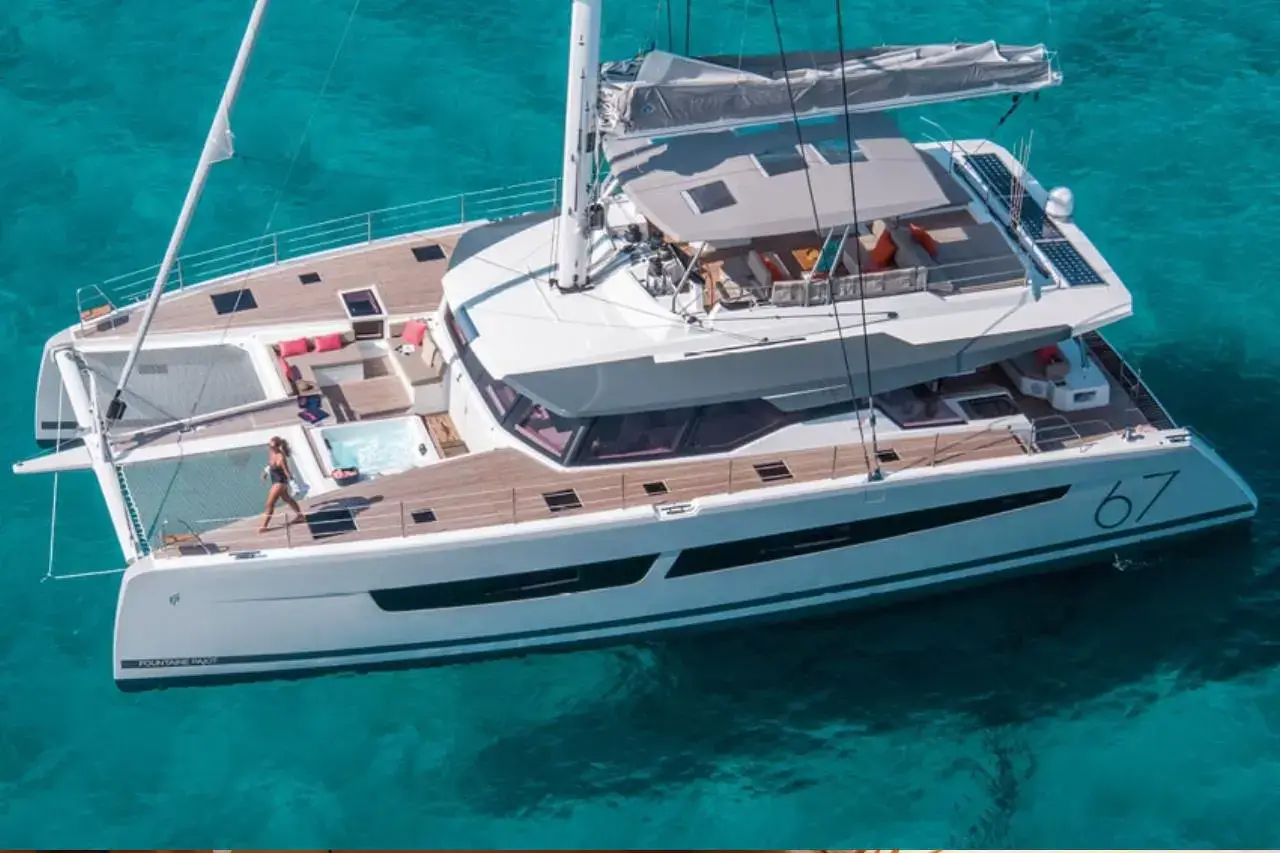
Is A Catamaran Safer Than A Yacht 3,1
Yachts: The Singular Sensation
- Adaptive Sailing: With their single-hulled design, yachts can adapt to various sea conditions. Their deep keel offers stability, especially when tacking upwind.
- Optimized for Distance: Yachts are often optimized for long-distance cruising. They can store more provisions and are built to handle extended periods at sea.
- Classic Design: Yachts often exude a sense of luxury and tradition, with detailed woodworking, plush interiors, and a cozy ambiance.
- Storage: Yachts tend to offer more storage options compared to catamarans. This is especially beneficial for longer journeys.
- Ease of Maneuverability: Despite their size, yachts are often easier to maneuver in tight marinas, thanks to their single-hulled design.
In summary, while catamarans boast expansive living spaces and stability, yachts offer a blend of tradition, luxury, and long-distance capabilities. The decision between the two often hinges on the type of experience one seeks during their catamaran charter Greece adventure.
Practical Considerations: Costs, Maintenance, and Itinerary
When deciding between a catamaran and a yacht for your next seafaring adventure, it’s crucial to consider practical aspects like costs, maintenance, and how well each fits into your dream itinerary, especially if you’re thinking of a yacht rental in Greece .
Cost Implications
Initial purchase and rental costs.
- Catamarans: Generally, catamarans tend to be more expensive than monohull yachts of the same length. Their expansive design, which incorporates more material, plays a role in this.
- Yachts: While yachts might be less expensive initially, keep in mind that their long-term operational costs can accumulate.
Operational Costs
- Fuel Consumption: Catamarans, being lighter and having twin engines, can sometimes consume more fuel than a single-engined yacht. However, this can vary based on the vessel’s size and the conditions.
- Maintenance: Due to their dual-hulled design, catamarans might require more frequent maintenance checks, especially if they are often sailed in challenging conditions.
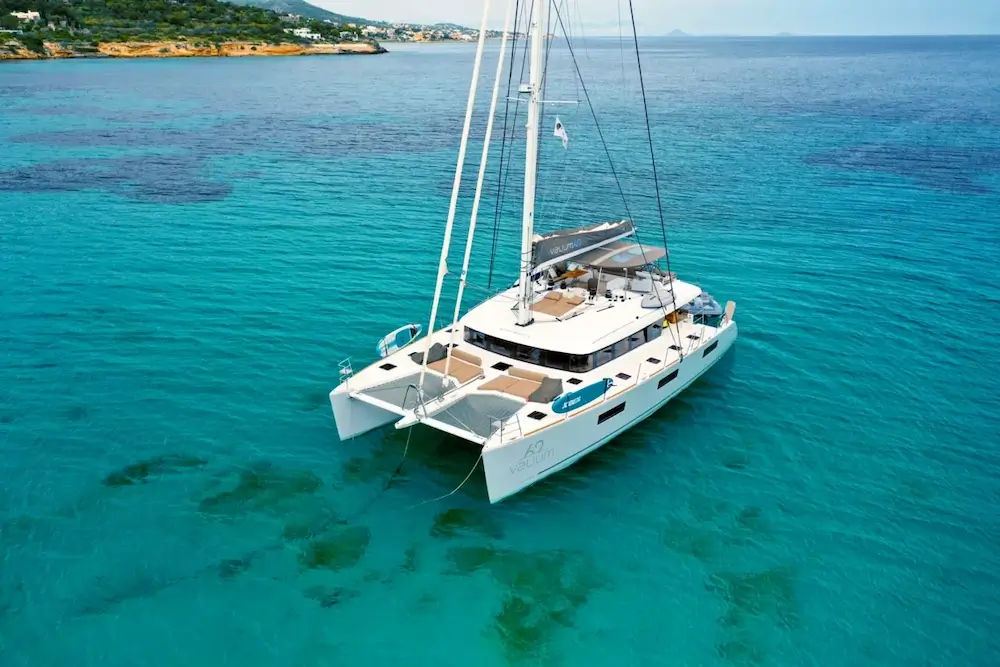
Is A Catamaran Safer Than A Yacht 4
Itinerary Concerns
Considering your intended destinations can also influence your decision. For instance, some areas might have mooring facilities better suited to one type of vessel over the other.
- Catamarans: Their shallow draft means they can easily access shallower waters, making them perfect for exploring hidden coves or beaching in secluded areas, which can be a highlight of your catamaran charter in Greece .
- Yachts: With their deeper draft, yachts might be restricted from certain shallow regions. However, they are excellent for blue-water cruising and exploring distant islands.
Conclusion: Making Your Choice
Choosing between a catamaran and a yacht for your Greek sailing adventure boils down to your personal preferences, the kind of experience you desire, and practical considerations. Both vessels offer unique advantages. Catamarans are renowned for their stability, space, and shallow draft, making them perfect for island-hopping and anchoring close to beaches. On the other hand, yachts exude a classic charm, capable of long-distance cruising and often giving a more traditional sailing experience.
Whether you opt for a catamaran or a yacht, ensure you make the most of your journey, exploring the breathtaking landscapes and azure waters that Greece has to offer. Whichever vessel you choose, the essence of the adventure lies in the journey itself and the memories you create along the way.
Related Posts

Which Greek islands are recommended for first-time visitors?
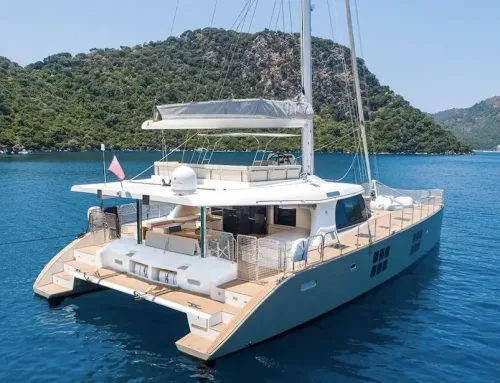
How do I choose the right catamaran for my needs?
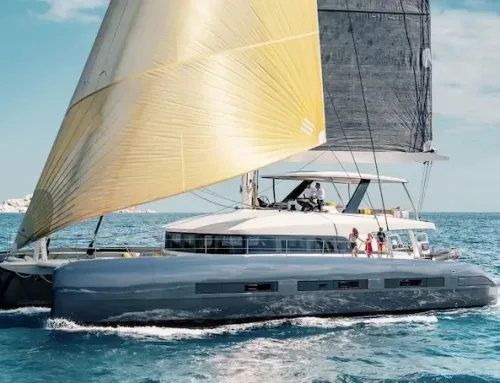
Is there a minimum or maximum rental period for a catamaran in Greece?
- Marine Supplies
- Maintenance & Boating Guides
Catamaran vs Monohull: Pros, Cons & Main Differences
By: B.J. Porter Editor

The choice of catamaran vs monohull ultimately comes down to preference. What’s critical for one buyer may mean little to another. If your partner refuses to set foot on a boat which heels, that’s a deal-breaker for a monohull. But if you’re passionate about classic looks and styling, your quest for beauty may override other considerations and rule out catamarans.
We can’t tell you whether a catamaran or a monohull is right for you. But we can help you with the pros and cons of each for your search.
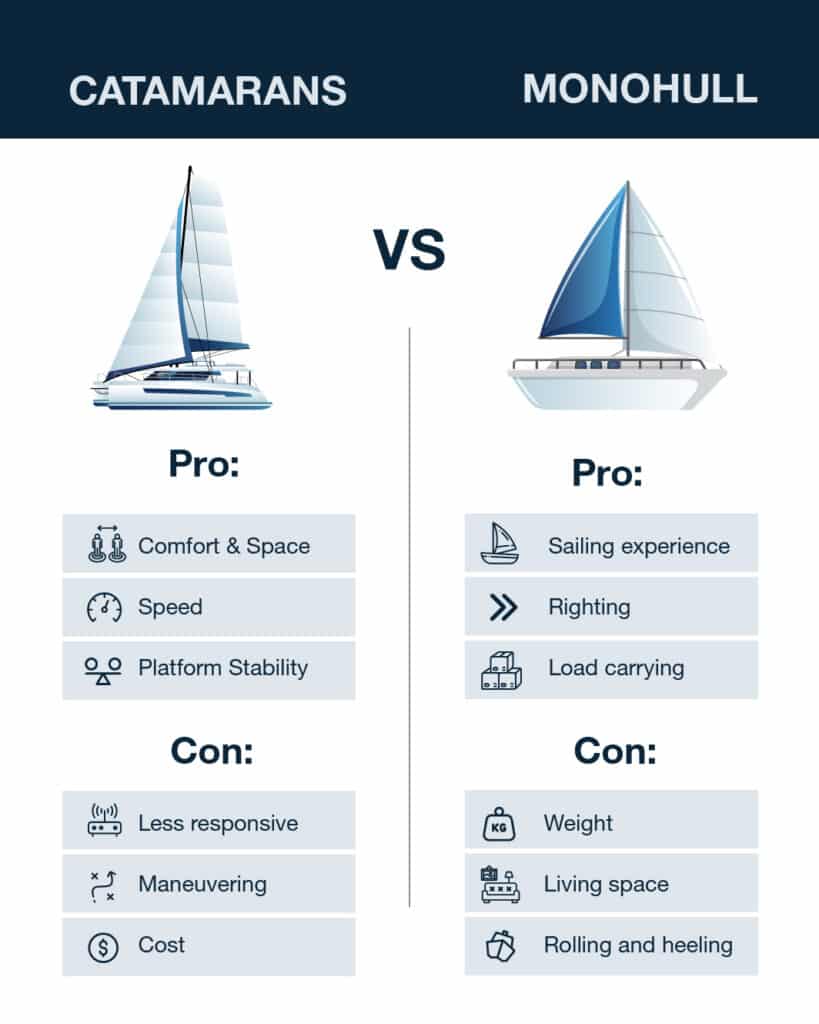
The Strengths and Pros
No matter your choice of monohull or catamaran, there are safe, comfortable, and excellent sailing boats of both types. Neither has an exclusive lock on any strength, and both sail safely and comfortably. But there’s a different emphasis on how they do it. No matter what you are trying to do – sail fast, cruise the world, or just host a crowd at the dock, there are monohulls and catamarans that can work for any requirement.
Catamaran advantages
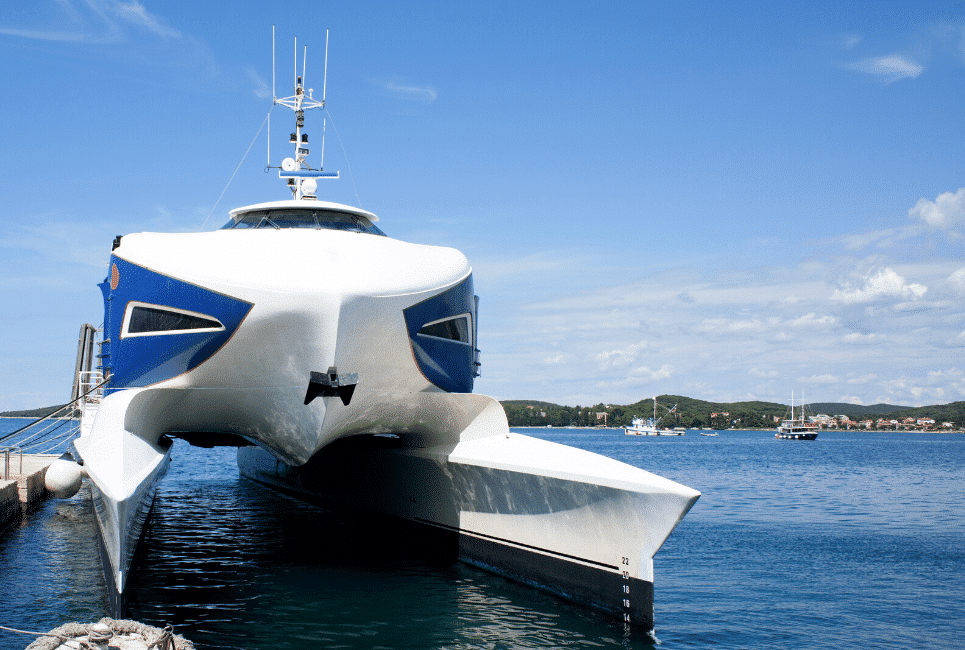
Space and comfort: Two hulls and a wide beam make a very stable platform with lots of volume in the saloon and cockpit. Most living space is above the waterline, with wonderful light and airflow. Cabins in the hulls offer better privacy and isolation, usually with standing headroom.
Straight line speed: Most catamarans are faster in straight-line sailing speed (1) that similar sized or even longer monohulls. Without a lead keel, they’re lighter, so more driving force from the sails converts to speed, and narrower hull forms may have less drag than wide hulls with deep keels. Some heavier cruising catamarans may not be faster, especially if they keep rig size small for ease of handling.
Stability : The beam of two hulls with a bridge deck leads to much higher stability and resistance to roll (2). Waves in an anchorage that induce violent roll in a monohull may make a catamaran bounce or bob. Under sail, catamarans do not heel appreciably even when powered up.
Twin engines. : With one engine in forward and balanced in reverse, most catamarans can spin in a circle in place and make sharp adjustments to the boat’s direction. If you have an engine failure, you also have a second engine, giving a safety edge when you can’t sail.
Monohull advantages

Upwind sailing performance: While catamarans have the edge at straight-line speed, monohulls sail closer to the wind. When you’re racing or you have to sail upwind to get to the next island, this can get you there faster.
Sailing feel and responsiveness : The “feel” of sailing a monohull is much better. With a single hull, you’ll feel wind pressure and trim adjustments immediately for a more responsive helm and a better ability to sail to the wind.
Maneuvering under sail: Monohulls are quite nimble tacking and turning under sail, and there’s less risk of slow or missed tacks.
Righting Moment: The primary offshore safety argument for monohulls is their ability to right when capsized. The heavy keel keeps the boat deck up when sailing, and most monohulls will come back upright even after a complete capsize.
Cargo and Loading: A higher displacement boat with thousands of pounds of lead hung from the bottom isn’t going to be as affected by loading as a relatively light multihull.
Aesthetics: This is subjective, as many catamaran enthusiasts love how they look. Classic sailboat styling, with swept sleek looks, springy sheer lines, and all the “right” proportions are more common on monohulls.
Also read: The 5 Best Electric Anchor Winches
Weaknesses and Cons
Like strengths, weaknesses are relative; just because one class has a strength doesn’t mean the other doesn’t. There are spacious monohulls and beautiful catamarans, just like there are cramped catamarans and unattractive monohulls. The differences have to be highlighted relative to each other, and the weaknesses of one are most apparent compared to the strengths of the other.
Catamaran Cons
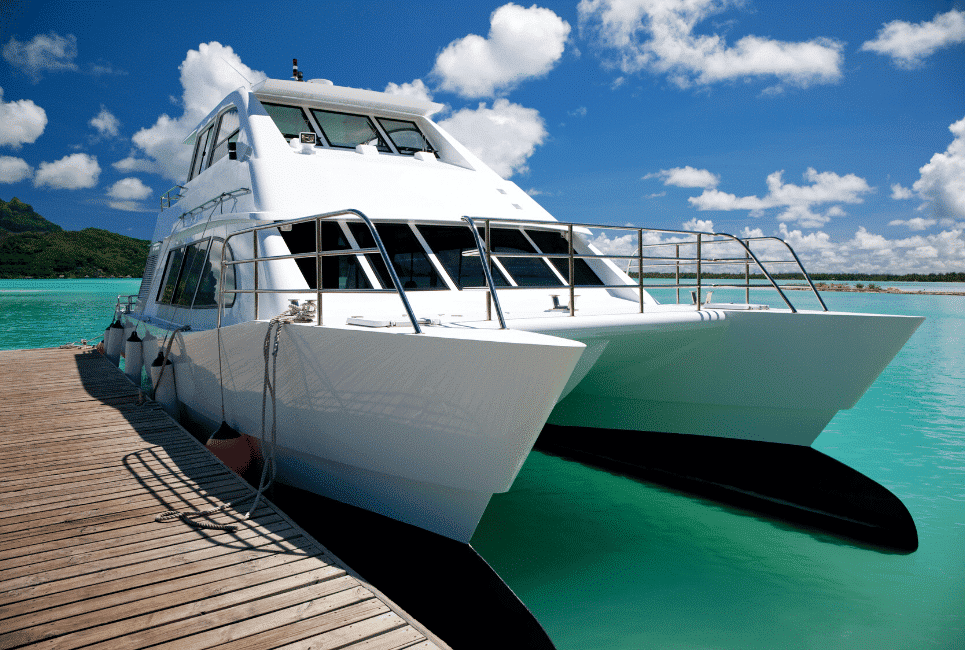
Upwind performance: Cats don’t sail as close to the wind, but they make up for it by sailing faster off the wind. You’ll sail a less direct course upwind. Even if you get in at the same time, you’ll have to sail farther.
Less responsive sailing: Two hulls with two rudders and a very broad platform reduce the helm feel when sailing, cutting responsiveness sailing in shifting wind and wave conditions. It also makes tacking slower.
No-flip zone: It is very difficult, but not impossible, to flip a large catamaran (3). But if a catamaran capsizes, it will not flip back over by itself.
Large in marina/close quarters: You have two problems in marinas. Beamy cats are tough to maneuver in tight spaces because they’re big and visibility is tough over the hulls. And many marinas charge extra because the wide beam extends into the next slip. The good news is that twin engines make tight maneuvering easier.
Price point: Catamarans are more difficult to build and need more materials. This is directly reflected in the cost of the boats.
Monohull Cons
They are heavier: Every large monohull needs a keel for stability (4). They can not sail or stay upright without thousands of pounds of ballast, and this makes them heavier and slows them down. Tiny monohulls can use a centerboard or daggerboard for stability, but most boats big enough to sleep on need ballast.
Darker interiors : Most monohull living space is lower in the boat, where you can’t put enormous windows for light and circulation. It’s very hard to get space as bright and airy as catamaran saloons.
Less living space: With one hull and no bridge deck saloon, most monohulls feel cramped compared to spacious catamarans.
More prone to rolling motions : Only one hull makes monohulls susceptible to rolling in waves, and the movement can be quite uncomfortable.
Heeling: Tipping is just part of sailing monohulls upwind and is unavoidable. It can be reduced on some other points of sail, but not eliminated. Many people, especially non-sailors and new sailors, find this movement uncomfortable or distressing.
You might also be interested in: How to Buff a Boat | A Detailed Guide by a Boating Expert

Troubleshooting Pontoon Boat Battery
Pontoon boats are a great way to enjoy the water and spend quality time with family and friends. But just like any other boat, they rely on a battery to power various systems, including navigation lights, trolling motors, and other…
Boat Accessories

Best Ice Fishing Fish Finders in 2023
In search of the best ice fishing fish finders in 2023? Not all fish finders are created equal, particularly when it comes to ice fishing. Specialized features are crucial to ensure successful outings in harsh winter conditions. You require a…

Best Side Imaging Fish Finders in 2023
Navigating the world of angling equipment can be challenging. That's especially true when it comes to side imaging fish finders, given the extensive range of options available in 2023. This post makes it easy for you to narrow down your…

How to Choose a Fishfinder for Your Boat: A Comprehensive Guide
Today, we embark on a journey to unravel the secrets of choosing the perfect fish finder for your boat. As we navigate through an ocean of options, we'll explore different types of fish finders, delve into their key features, and…
Accessories
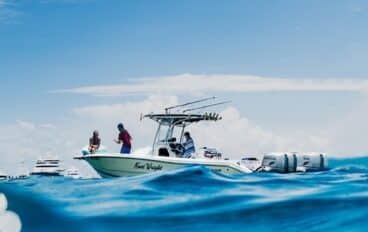
5 Best Portable Fish Finder in 2023
Looking for a portable fish finder for kayaking, ice fishing, or other activities? The good news is that there are a lot of solid products out there. The year 2023 has ushered in an array of advanced models, each brimming…
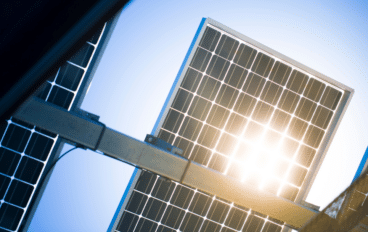
Charging Your Trolling Motor Battery with a Solar Panel
Charging your trolling motor battery with a solar panel is not just the right thing to do for the environment, it is extremely convenient. When you’re out on the boat, with any luck, you’ll have access to a good amount…
Don't miss out
- THE PRINCESS PASSPORT
- Email Newsletter
- Yacht Walkthroughs
- Destinations
- Electronics
- Boating Safety
- Ultimate Boating Giveaway

Discover the Top Power Catamarans for 2024
- By Yachting Staff
- Updated: September 10, 2024
Power catamarans have seen a surge in popularity, growing both in size and appeal. These cruise-focused yachts offer homelike comfort, fuel efficiency and user-friendly operation, making them a favorite among avid travelers. Their popularity extends to the bareboat charter market for the same reasons.
In this article, we explore the world’s top power catamarans, ranging from a 36-footer ideal for a cruising couple to a 78-footer perfect for entertaining friends and family. The propulsion options are diverse, including outboards, diesel inboards, hybrids, and even all-solar setups.
Top Luxury Power Catamarans
The following power catamarans are all vessels we’ve reviewed. They are listed in no particular order.
- Fountaine Pajot MY44 : A family-oriented cat suitable for long-range cruising and aimed at owner-operators.
- Silent Yachts 60 : This is a catamaran that can cruise comfortably for long distances using emissions-free solar-electric propulsion.
- Horizon PC74 : With interior and deck space like a much larger vessel, the PC74 is perfect for cruising the Bahamas and Caribbean.
- Aquila 36 : This beefy 36-footer is an outboard-powered, express-cruiser-style catamaran.
- Lagoon Seventy 8 Powercat : A spacious design, this vessel fits the volume of a 130-foot-long monohull into just 78 feet of length overall.
- Horizon PC68 : This cat has a stable ride, long range, volume to spare and intriguing layout options.
- Two Oceans 555 : An elegantly simple yet luxurious 55-foot custom with the space and amenities of a much larger vessel.
- Lagoon 630 : From its open salon to its spacious decks, the Lagoon is a comfortable and luxurious platform.
- Fountaine Pajot MY5 : A midsize cruiser with serious big-boat space for family and friends.
- Prestige Yachts M8 : The voluminous 65-footer lets owners customize onboard spaces.
- Aquila 47 Molokai : Calling all anglers: This cat has 60-plus-knot speed and is set up for serious bluewater adventure.
Fountaine Pajot MY44
The Fountaine Pajot MY44 , a creation of Italian architect Pierangelo Andreani and French designer Daniel Andrieu, has a main deck that’s open from the aft-deck seating all the way forward to the starboard helm station. The sense of spaciousness is significant, for several reasons. First, four glass panels aft can all slide to port, creating an indoor-outdoor space with the aft deck and salon. In the salon, 32-inch-high windows extend for 12 feet down the sides of the yacht, with three sections per side, bringing in natural light along with the three forward panes that comprise the windshield. Finally, 6-foot-6-inch headroom provides vertical clearance, with a 21-foot-7-inch beam that adds interior roominess while keeping the yacht stable.
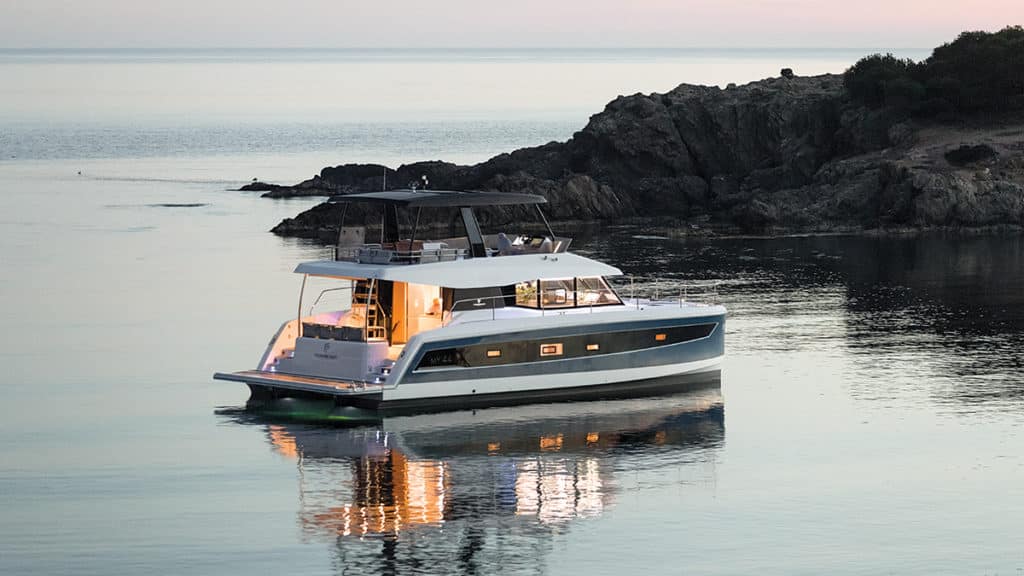
Quick Specifications
| 44’ | |
| 21’5” | |
| 530 gal. | |
| 184 gal. | |
| 6’6” | |
| 32,850 lb. |
Silent Yachts 60
Solar panels, ocean-crossing range and self-sufficiency define the electric Silent-Yachts 60 power catamaran. If there was any question that the “Tesla moment” has arrived in yachting, the Silent 60 clearly provides a positive response. Consider, for a moment, crossing oceans in silence at 5 to 6 knots without consuming a drop of fuel and never needing to plan your course between fuel stops. Imagine sitting at anchor and running the air conditioning all night, not to mention all the galley appliances plus the washer-dryer, without the hum or fumes from a genset.
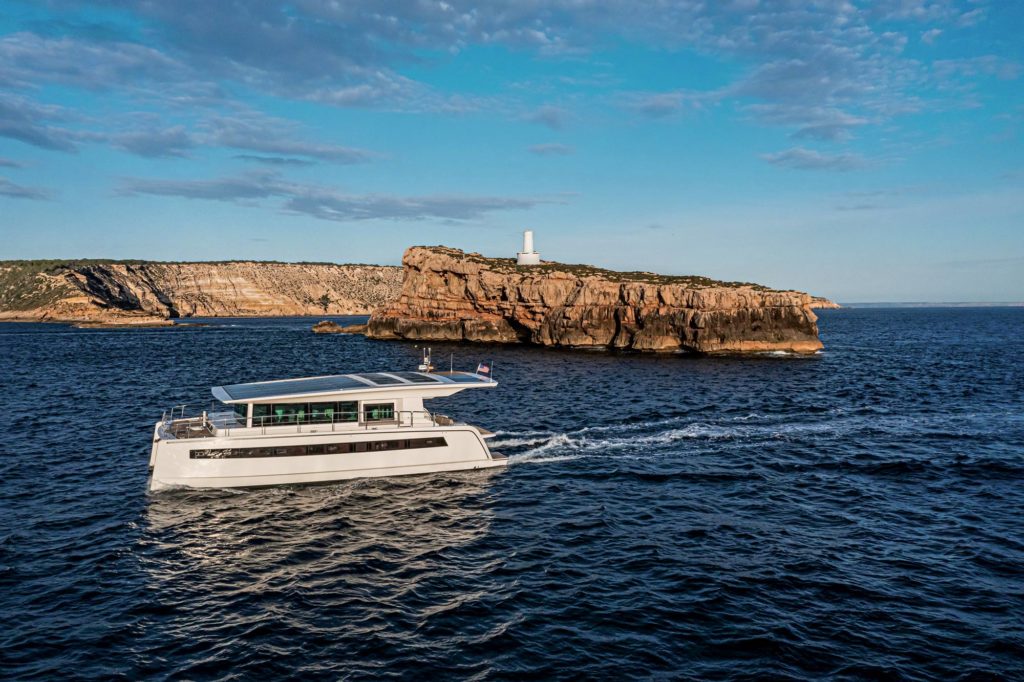
| 62’ | |
| 29’6” | |
| 4’5” | |
| 68,000 lb. |
Horizon PC74
As founder and director of The Powercat Company, a Horizon Power Catamarans distributor, Stuart Hegerstrom had long believed that catamaran builders needed to design their yachts to more stylish standards.
“The boats were very boxy,” he says, based on his years of experience with cats in the charter market. He and his partner, Richard Ford, asked Horizon to produce models that had high-end finishes and looked good inside and out.
The Horizon team brought in mega-yacht designer JC Espinosa to work with its own craftsmen. The result aboard the Horizon PC74 is a catamaran with exterior styling, layout and functionality that should appeal to private and charter owners alike.
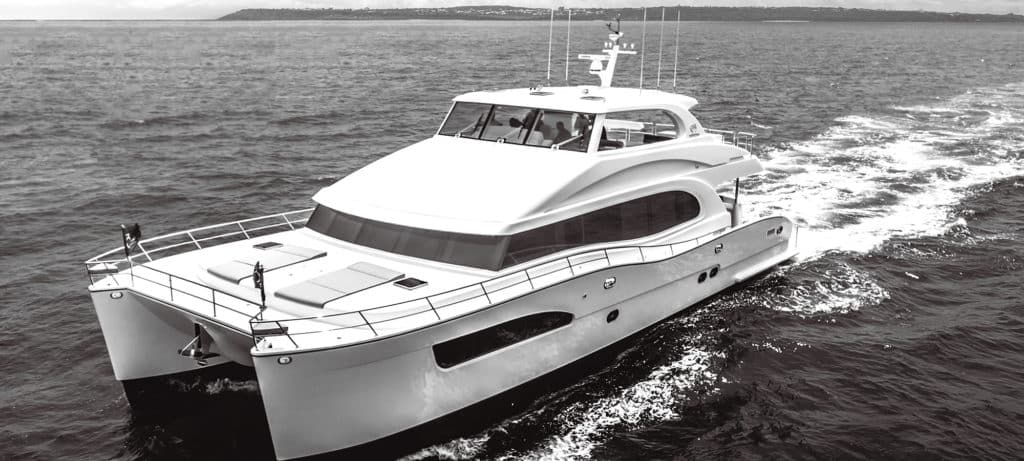
| 73’9” | |
| 28’3” | |
| 2,000 gal. | |
| 400 gal. | |
| 6’ | |
| 163,140 lb. |
The Aquila 36 is a departure from her sisterships in that she is an outboard-powered, express-cruiser-style catamaran, but she also adheres to MarineMax’s philosophies.
With a single main living level from bow to stern and a beam of 14 feet 7 inches, the Aquila 36 is like a bowrider on steroids. She has seating that can handle 20 adults for outings and barbecues, and there are two staterooms below, one in each hull, for family weekending. The staterooms have nearly queen-size berths, en suite heads, stowage and 6-foot-6-inch headroom.
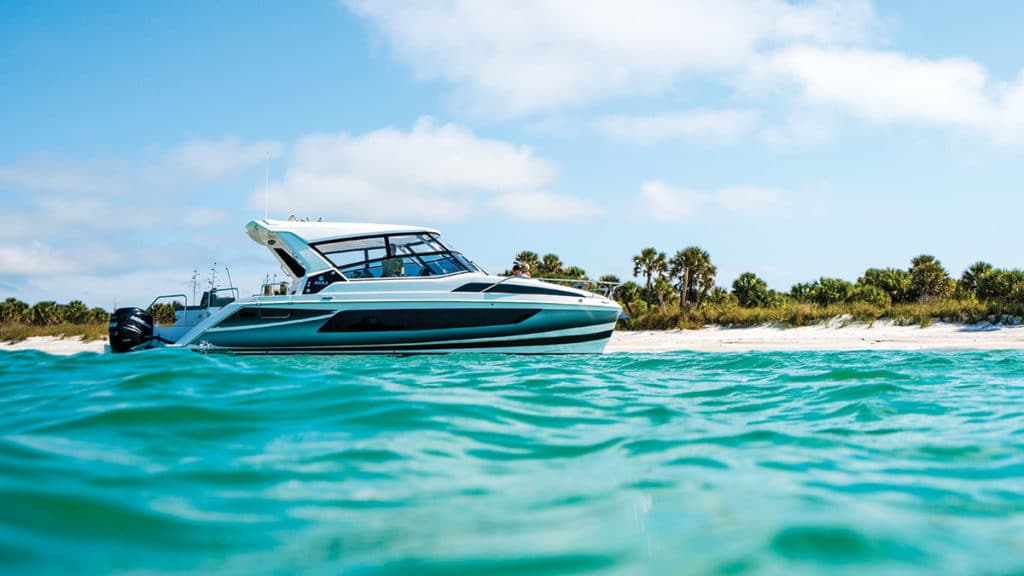
| 36’ | |
| 14’7” | |
| 356 gal. | |
| 200 gal. | |
| 2’ (engines trimmed up) | |
| 21,572 lb. |
Lagoon Seventy 8 Powercat
Lagoon is a division of Groupe Beneteau, the world’s largest builder of sailing yachts, and the Lagoon Seventy 8 Powercat is a developmental sistership of its Seventy 7 super sailing cat. The Seventy series yachts are built at Construction Navale Bordeaux in France, which had to add a new yard to construct these catamarans because they require separate stern molds for the power and sail versions.
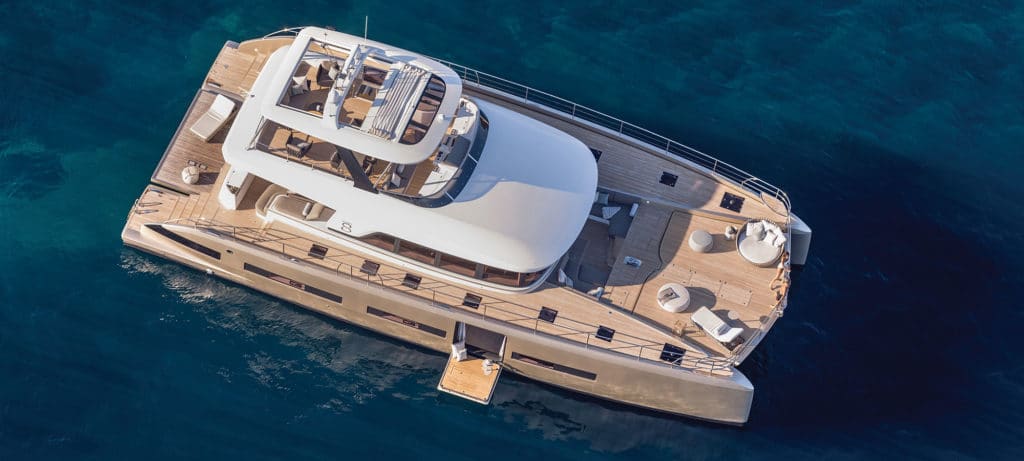
| 78’1” | |
| 36’1” | |
| 2,246 gal. | |
| 422 gal. | |
| 4’2” | |
| 131,153 lb. |
Horizon PC68
Multihull yachts ride differently than monohulls, often counteracting the sea’s motion for a smoother, more stable ride. On the Horizon PC68 , sharp hull entries make head seas seem gentle, and a Humphree stabilization system with blades reduces roll. Horizon uses SCRIMP construction for resin saturation that maximizes strength with an 111,112-pound displacement. And with a 5-foot-4-inch draft, the PC68 invites island cruising.
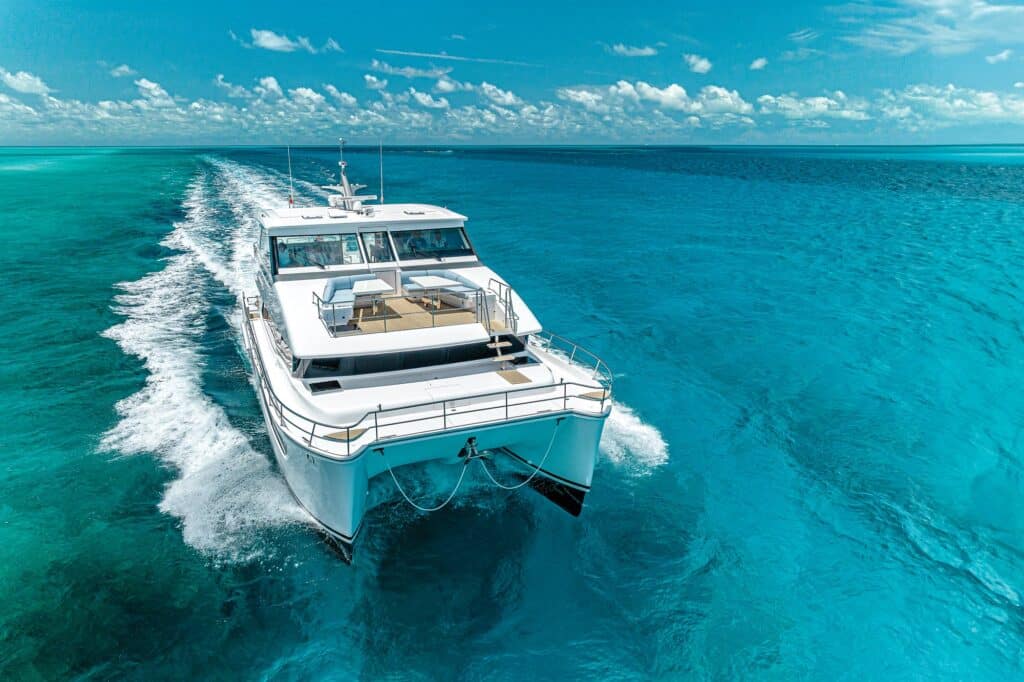
| 60’9” | |
| 24’6” | |
| 1,000 gal. | |
| 250 gal. | |
| 4’9” | |
| 83,467 lb. |
Two Oceans 555
With 27-knot speed, house-like volume, an on-deck master and top-tier tech, the Two Oceans 555 is a formidable power catamaran. Dave Jirikovic of HMY Yachts was on a quest. The sales broker was looking for the meanest, nastiest patch of Gulf Stream he could find to show a potential client what the Two Oceans 555 power cat could handle. And just as he had intended to show us, the broad-shouldered power cat didn’t even notice. He even dropped the single-lever throttles back to idle and left the 25-foot-wide Two Oceans 555 beam-on to another set of square-edged seas. The 55-footer brushed that off too. Jirikovic tried quartering into the seas—never a happy angle for catamarans—and the yacht drowsed through them.
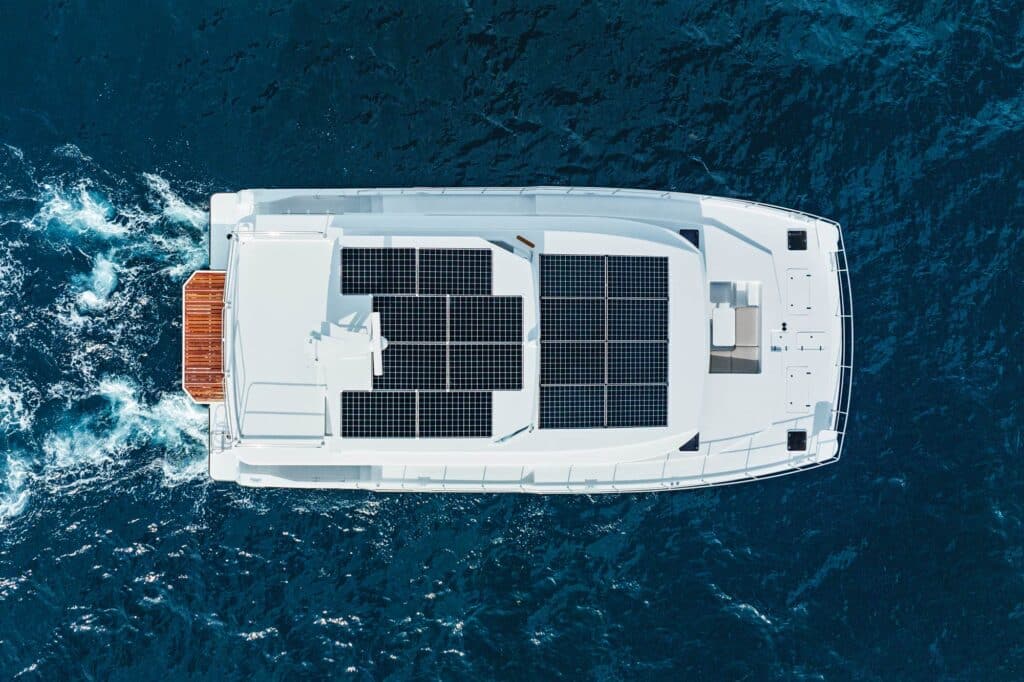
| 55’6” | |
| 25’ | |
| 750 gal. | |
| 200 gal. | |
| 49,600 lb. |
Fitted with the optional twin 300-horsepower Volvo Penta D4 diesels, the Lagoon 630 MY burns only 1.64 gph total at 6 knots, giving a theoretical range of 2,952 nautical miles with standard tankage of 793 gallons. Hull No. 1 had an optional 502-gallon tank, giving it transatlantic range.
Luxury, stability and economy are all hallmarks of Lagoon’s return to luxury motor yachts. If you can take a ride, it will be worth your time.
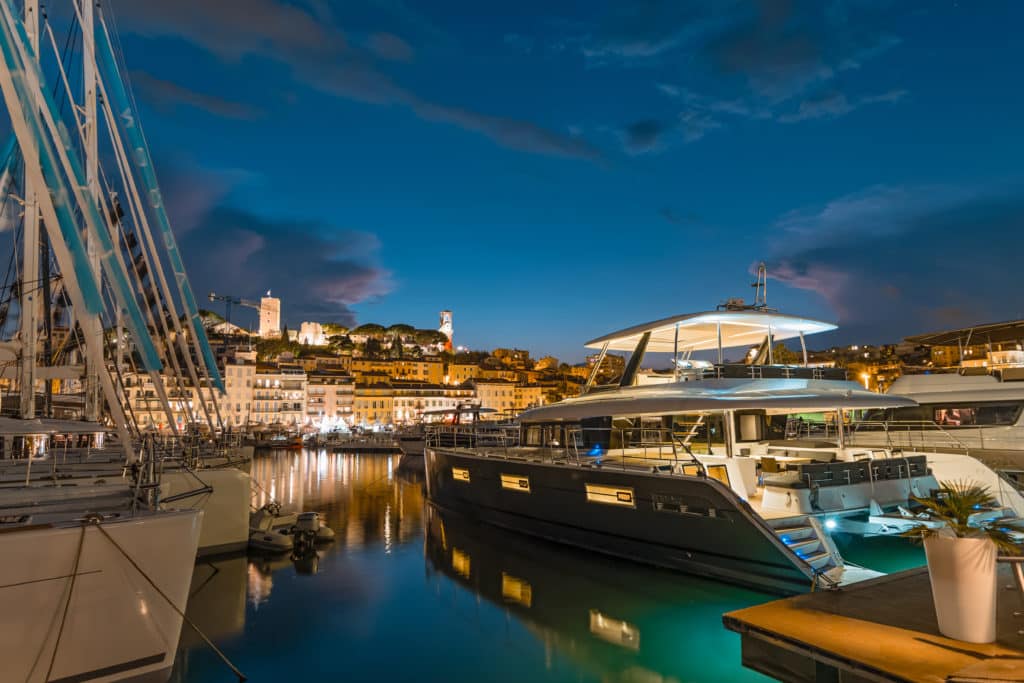
| 64’ | |
| 32’10” | |
| 793 gal. | |
| 254 gal. | |
| 3’11” | |
| 70,097 lb. |
Fountaine Pajot MY5
The flybridge deck on the Fountaine Pajot MY5 is a standout feature, offering virtually unobstructed 360-degree ocean views and an elevated beach club vibe. Aft of the off-center starboard helm is a spacious area perfect for entertaining, complete with a wet bar, refrigeration center, and ample seating. It’s the most popular space aboard according to the builder. And if the weather turns for the worse, a second helm station in the saloon allows the skipper to pilot the MY5 in climate-controlled comfort.
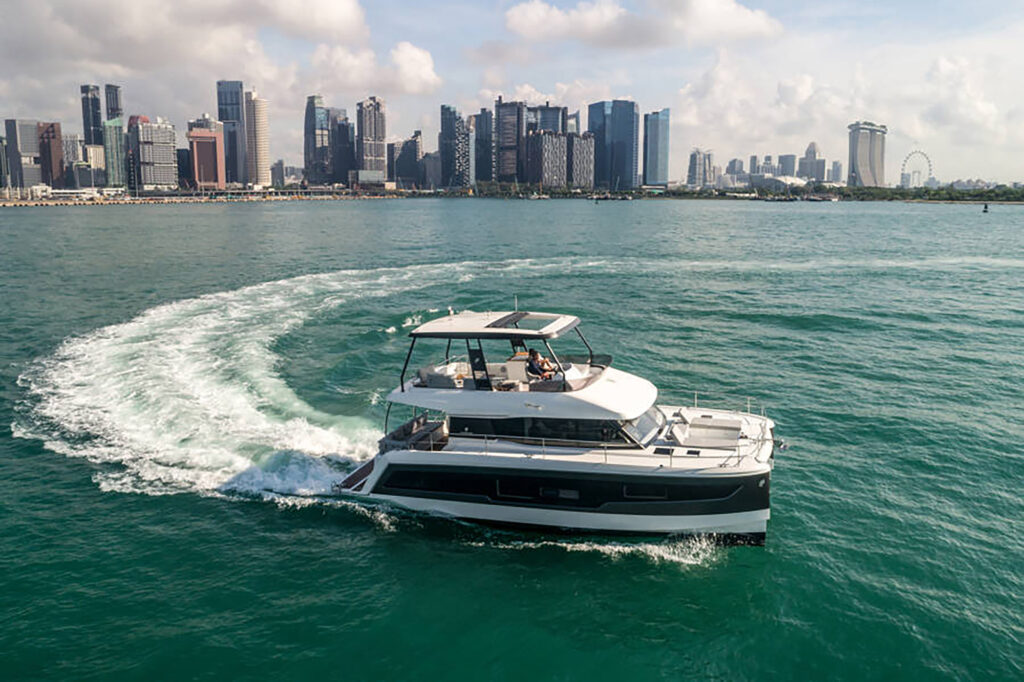
| 42’4” | |
| 19’9” | |
| 372 gal. | |
| 112 gal. | |
| 3’7” | |
| 46,000 lb. |
Prestige Yachts M8
How fitting it was that Prestige Yachts introduced its new M-Line flagship, the M8 , at Portopiccolo, a picturesque yachting village outside Trieste, Italy. Formerly a quarry, the cliff-side area had been chiseled into a clean site rife with eye-catching vistas, much like the French builder’s 65-foot power catamaran and its nearly 3,000 square feet of usable real estate.
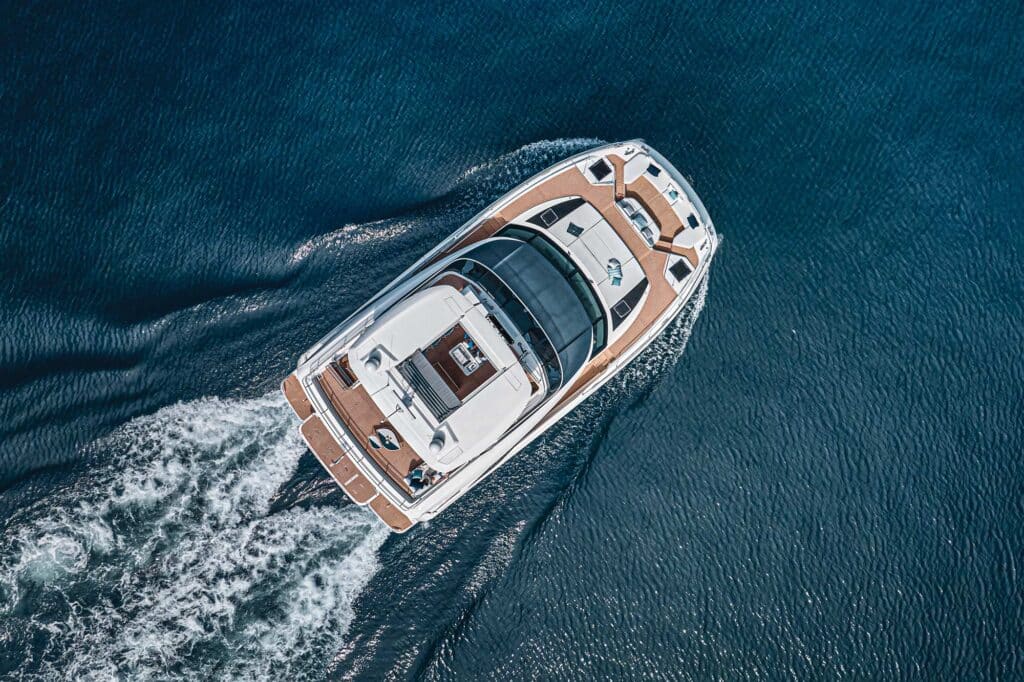
| 65’ | |
| 29’ | |
| 978 gal. | |
| 224 gal. | |
| 5’5” | |
| 98,379 lb. |
Aquila 47 Molokai
With every boat, there’s an origin story. In the case of the Aquila 47 Molokai power catamaran, it starts with MarineMax, which saw people renting boats for bareboat charters. MarineMax Vacations was born. After experimenting with several production yachts, the company decided to build its own: the Aquila line, designed for charter as well as for sale to owner-operators.
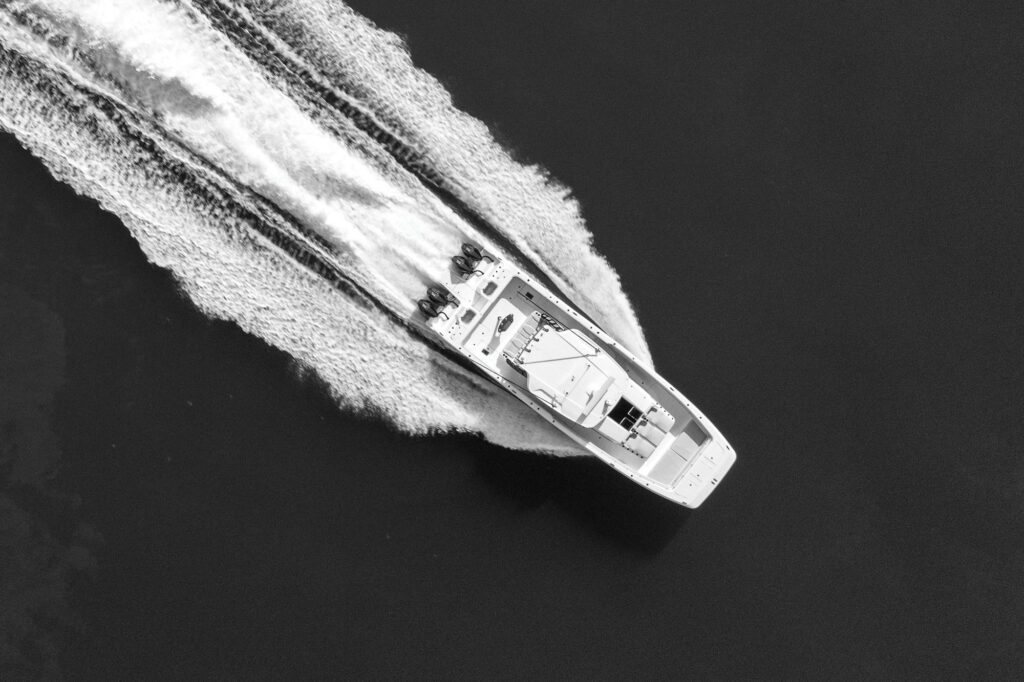
| 49’4” | |
| 14’7” | |
| 1,048 gal. | |
| 2’2” (engines trimmed up) | |
| 22,818 lb. |
- More: Aquila Boats , Fountaine Pajot , Horizon Power Catamarans , Lagoon , Lagoon Catamarans , Power Catamarans , Prestige Yachts , Silent-Yachts , Two Oceans , Yachts
- More Yachts
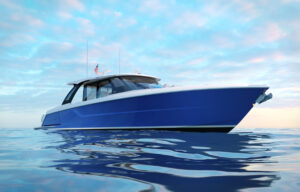
Coming Next Year: Tiara Yachts 56 LS

Top Nine Fishing Tenders For 2024

First Look: Meet the Apreamare 88 Motoryacht Flagship

Holterman Shipyard Debuts Xtreme X-65

Have it Today: 1997 Hatteras 116 For Sale

Cruising into Adventure: Discover Nantucket

Unique Design: 2021 Downeast 54-foot Custom For Sale

- Digital Edition
- Customer Service
- Privacy Policy
- Terms of Use
- Email Newsletters
- Cruising World
- Sailing World
- Salt Water Sportsman
- Sport Fishing
- Wakeboarding

IMAGES
VIDEO
COMMENTS
When it comes to maneuverability and sailing dynamics, there are some key distinctions between catamarans and yachts: Speed - Catamarans are lighter and have reduced drag, making them significantly faster than yachts. Top speeds can reach up to 25 knots. Stability - With their twin hulls, catamarans offer unmatched stability and minimal ...
Catamaran vs Sailing Yacht. While both catamarans and sailing yachts offer excellent experiences on the water, they differ in design and capabilities. Catamarans provide enhanced stability and a shallow draft, allowing for smooth sailing in various conditions and closer to shore. Sailing yachts, on the other hand, feature a single hull and ...
Compare catamaran and yacht charter options based on space, stability, speed, cost and more. Learn the pros and cons of each type of vessel and find out which one suits your needs and preferences.
Sailing performance is critical as each type offers distinct advantages in speed and handling. Yachts, often single-hulled, can be faster in good wind, while catamarans are stable and manageable, ideal for families on extended trips. 2. Space and Layout. Space and layout are critical factors when evaluating yachts and catamarans.
Unlike yachts, catamarans generally have a minimum of two engines. These motors enhance the level of maneuverability of the vessel. In other words, catamarans are easier to pilot or maneuver than yachts of the same length. Furthermore, the presence of a second engine on a catamaran makes it noticeably more potent than a yacht.
Backing into a slip is easier on a catamaran than a monohull. To back into a slip (which will make it more convenient for crew to step on and off) pull up until perpendicular with the slip, pivot the boat with the engines and then use both in reverse, adjusting as you back up if there is a beam wind.
The primary differences between a yacht and a catamaran for sailing are evident in their design, performance characteristics, and overall sailing experience. Yachts, especially in the monohull configuration (which means a single hull design), typically employ traditional sailing techniques and feature a narrower profile.
Speed and Efficiency. Power catamarans have gained popularity for offering a unique combination of speed, efficiency, and stability. Their dual-hull design allows for less water resistance, which directly translates to higher speeds and better fuel efficiency compared to traditional monohull boats.. In addition, the wide beam provided by the two hulls ensures a stable ride even at higher speeds.
Choosing between a catamaran and a yacht is a personal decision, influenced by various factors. While catamarans offer stability and space, yachts bring with them a legacy of tested safety in diverse conditions. Ultimately, the safety of any vessel is a combination of its design, maintenance, the crew's expertise, and the decisions made ...
Catamaran vs. Yacht: Cost Differences. A new, high-quality catamaran larger than 40 feet can run about half a million in cost. Pre-owned catamarans can run as low as $35,000, while larger, new catamarans can exceed $5 million. Catamarans will also cost more because of the need for two engines and two rudders.
The catamaran will move around with the wind, always staying flat, while the sailboat will rock from side to side and might even get you seasick. This is especially noticeable when the wind is opposing the waves, making the boat have the wind pushing it from one side and the waves banging it from the other side.
The mix of these factors makes invasion or capsizing extremely unlikely. When a 20-foot wave hits a catarmaran's beam, the boat will just surf sideways. Trimaran vs. Catamaran: Racing ©ThMartinez/Sea&Co Catamarans are very fast downwind. Catamarans are recognized for their velocity, and some of them are capable of breaking world sailing records.
Simply put, as the name suggests, a monohull has only one hull (the main body of a yacht), whereas a catamaran has two hulls. The benefits of a catamaran having two hulls is that they will typically stay more level and offer a lot more space, while a monohull will always reach faster speeds when sailing. Here's what one of our amazing hosts ...
A catamaran has more space than a monohull. This is because the boat is wider, and it has a much larger deck area. It also has twice as many hulls, so you have more overall space between the two of them. The additional space is great for people looking to throw parties on their boats.
When comparing trimaran vs. catamaran efficiency, the differences are minimal. Multi-hulled boats are more fuel-efficient than comparable mono-hulled boats due to their hull forms and their lighter weights. Multi-hulled boats also tend to have smaller displacement and shallower drafts than other boat styles.
When sailing downwind, catamarans usually achieve greater speed than sailboats. Sailboats, on the other hand, perform better when sailing upwind. During turns, sailboats are better manoeuvrable and respond to a helm better, while catamarans lose the necessary impulse for a prompt turn faster. Unlike a sailboat, a catamaran is practically ...
Best catamaran and multihull: We sail the very best yachts on two and three hulls. Toby Hodges takes a look at all the nominees and the winner of the best catamaran and multihull category in the ...
Aug 17, 2015. Two sailboat experts argue monohull vs. catamaran. Contributed by Denison Yacht Sales. The great debate over which is better—one or two hulls—boils down to several factors, each with distinct advantages and disadvantages. The verdict usually defaults to personal preference and intended use of the vessel, but that didn't stop ...
Monohull sailboats have their own groove. This motion is predictable and distinguishable by pro sailors. Cats, on the other hand, depend on the body of water's condition state. Also, cats pound when going upwind into big seas if their bridge deck is pummeled by waves, while monohulls tend to slice through the waves.
A catamaran is much better than a monohull in many ways. Catamarans are more stable, faster, and spacious. They also offer safer anchorage and are easy to control. Monohulls are more maneuverable, have lower costs, and better when sailing upwind.
7. Shallow Draft Equals Better Anchorages. Catamarans have significantly shallower drafts than monohulls, allowing for safer anchorages closer to shore. Most catamarans in the 40-ft to 50-ft range draw between 3-ft to 4.5-ft, so they can anchor in places that a monohulls can not even consider.
Catamarans: Generally, catamarans tend to be more expensive than monohull yachts of the same length. Their expansive design, which incorporates more material, plays a role in this. Yachts: While yachts might be less expensive initially, keep in mind that their long-term operational costs can accumulate. Operational Costs
Darker interiors: Most monohull living space is lower in the boat, where you can't put enormous windows for light and circulation. It's very hard to get space as bright and airy as catamaran saloons. Less living space: With one hull and no bridge deck saloon, most monohulls feel cramped compared to spacious catamarans.
Silent Yachts 60. Solar panels, ocean-crossing range and self-sufficiency define the electric Silent-Yachts 60 power catamaran. If there was any question that the "Tesla moment" has arrived in yachting, the Silent 60 clearly provides a positive response. Consider, for a moment, crossing oceans in silence at 5 to 6 knots without consuming a drop of fuel and never needing to plan your course ...